A Preliminary Survey of Vietnam Ba Ria
Tang Wreck and Comparison with Artefacts from the Belitung Wreck
4. Lead-Glazed Wares with Islamic Influence
Chronological Considerations
Written by: NK Koh (7 Sep 2022), Chatbot Deepseek edited copy 6 Feb 2025.
References:
Introduction
In 2019, a significant assemblage of Tang-dynasty ceramics began
appearing in Vietnamese antique markets, later traced to a
shipwreck near Ba Ria in southern Vietnam. These artefacts, many
of which were acquired by Chinese collectors, generated
considerable interest due to their stylistic and compositional
parallels with cargo from the Belitung wreck, a pivotal site for
understanding 9th-century maritime trade. This paper provides a
preliminary analysis of the Ba Ria wreck’s cargo and examines
its similarities to and distinctions from the Belitung
assemblage.
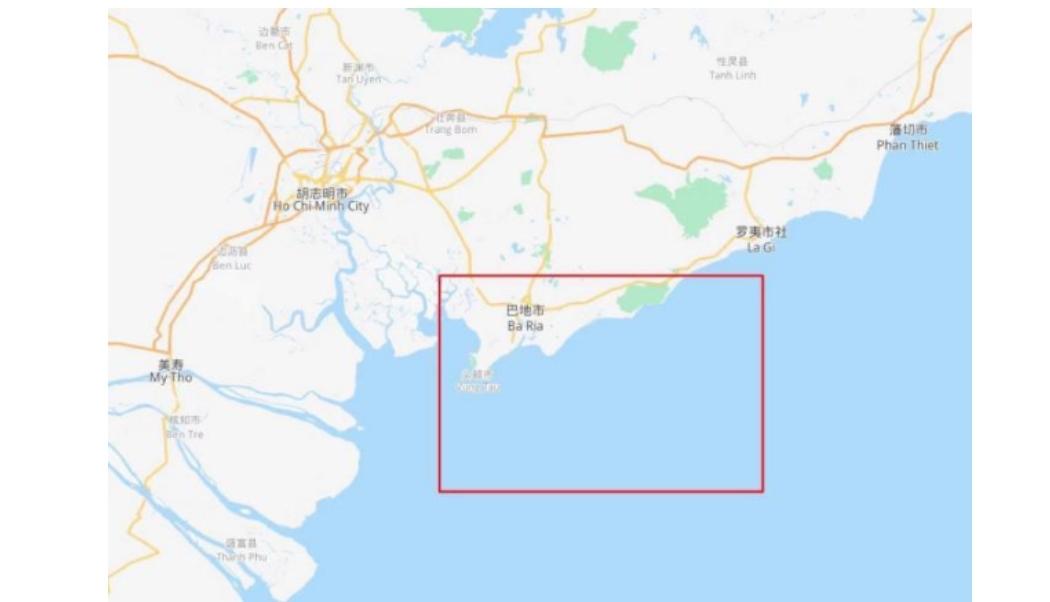 |
| Location of the Tang Wreck |
Cargo Composition
The Ba Ria wreck contained a diverse cargo dominated by
white-glazed and lead-glazed (green/yellow) ceramics from
northern Chinese kilns, alongside Changsha wares, Yue celadons,
and Guangdong green-glazed jars and bowls (e.g., from the
Meixian Shuiche kiln). While the Belitung wreck’s cargo was
predominantly Changsha ware of superior quality, the Ba Ria
assemblage shares a comparable mix of regional products, albeit
with notable differences in craftsmanship and stylistic
evolution.
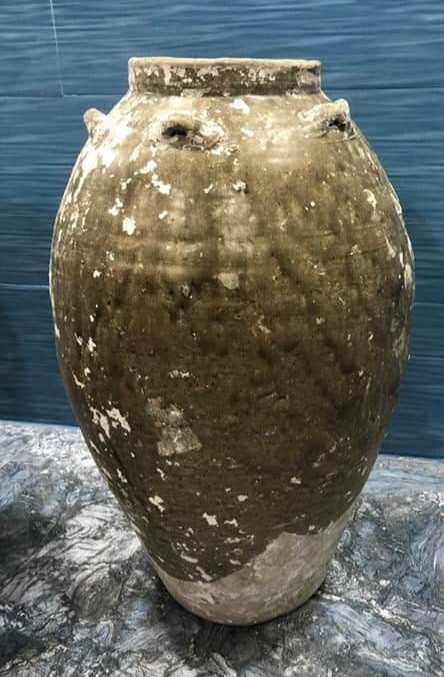 |
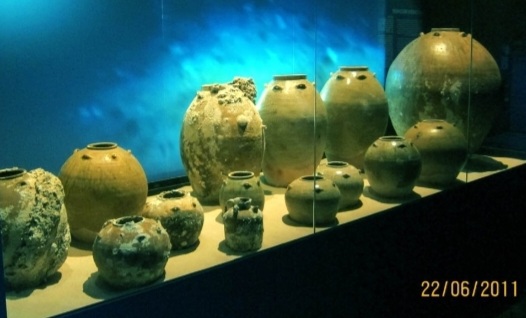 |
| Ba Ria wreck Guangdong green glaze jar | Belitung wreck Guangdong big and small green glaze jars |
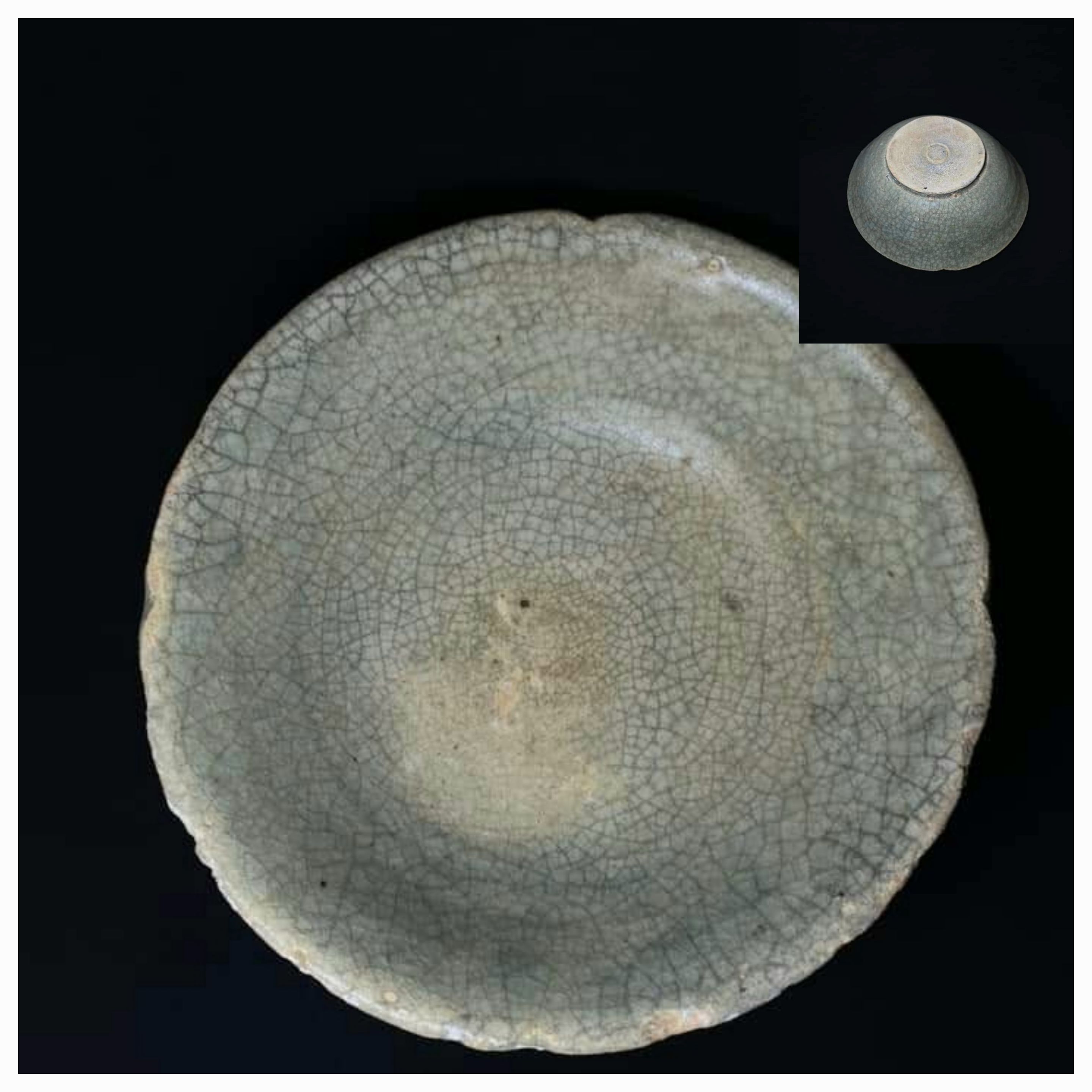 |
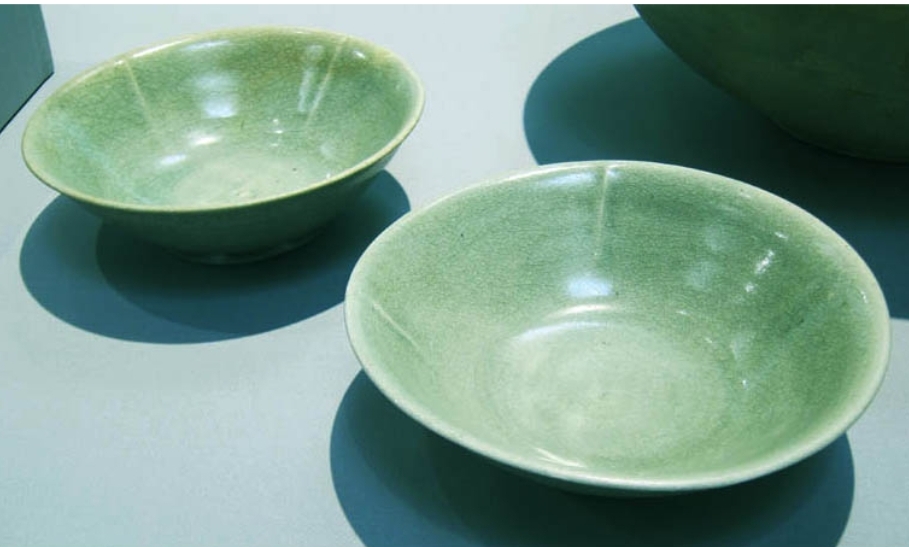 |
| Ba Ria wreck green glaze bowl from Guangdong Mexian Shuiche kiln | Belitung wreck green glaze bowls from Mexian Shuiche kiln |
Comparative Analysis of Key Artefacts
1. Changsha Wares
- Bowls: Ba Ria examples exhibit less refined painted
decoration and a narrower range of motifs compared to Belitung
specimens.
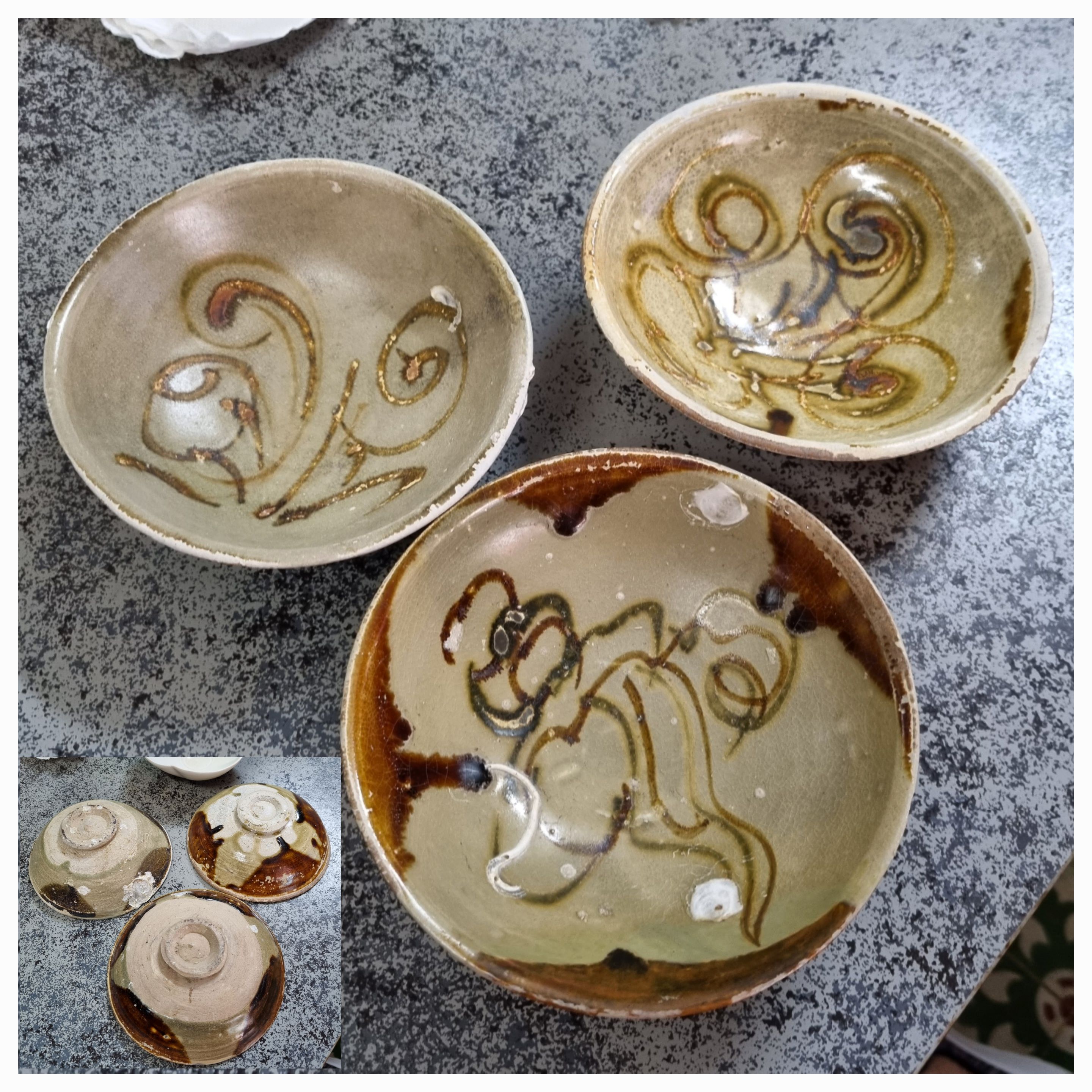 |
|
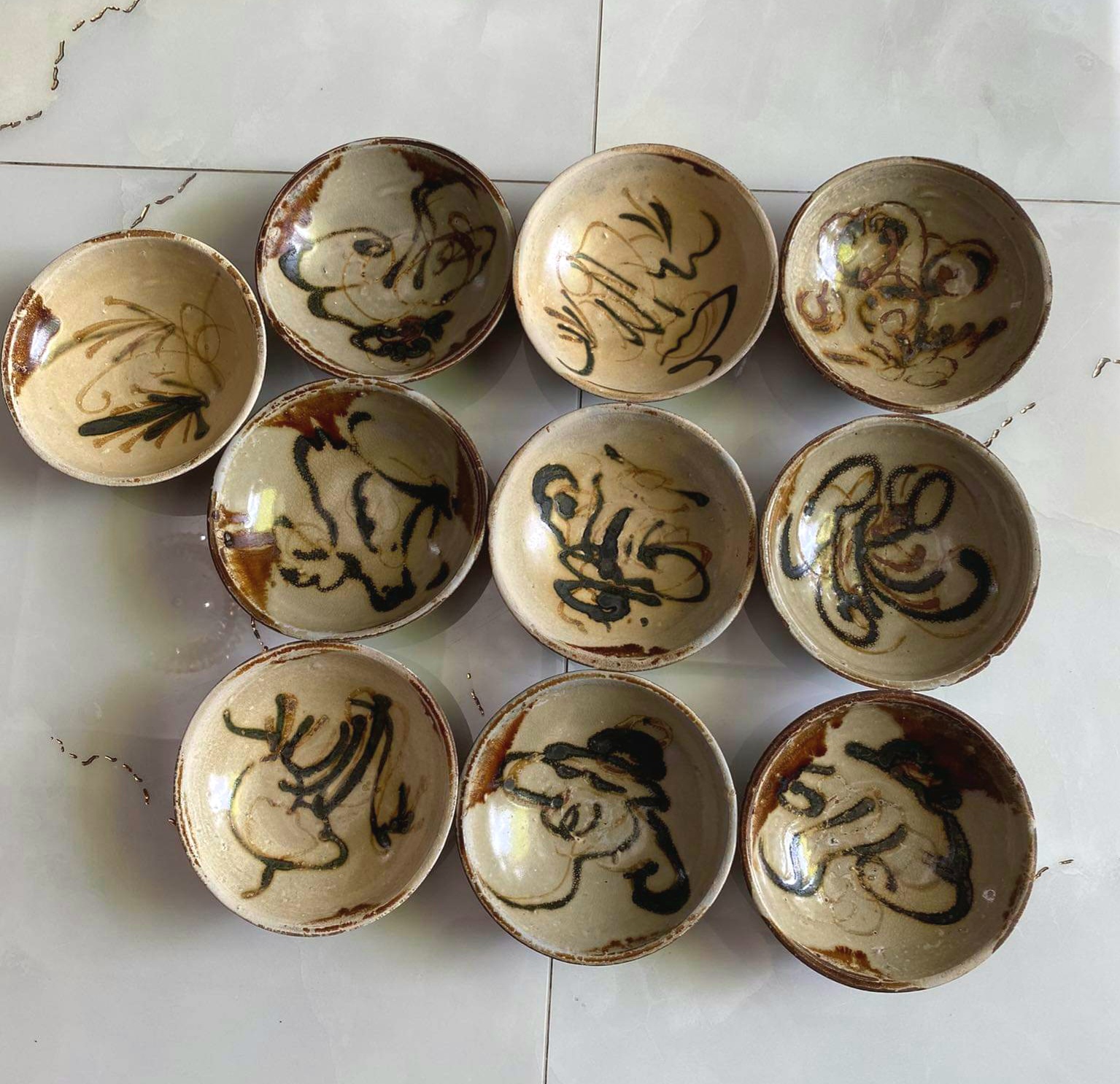 |
|
|
In comparison, the
painted decoration on the Changsha bowls from the Ba Ria wreck
(Left) is more poorly executed compared with that from the
Belitung wreck (Right). The range of motifs from the
Belitung wreck is also much more varied. |
|
- Cupstands: Both sites yielded bluish-glazed Changsha
cupstands, though Ba Ria examples display simpler forms.
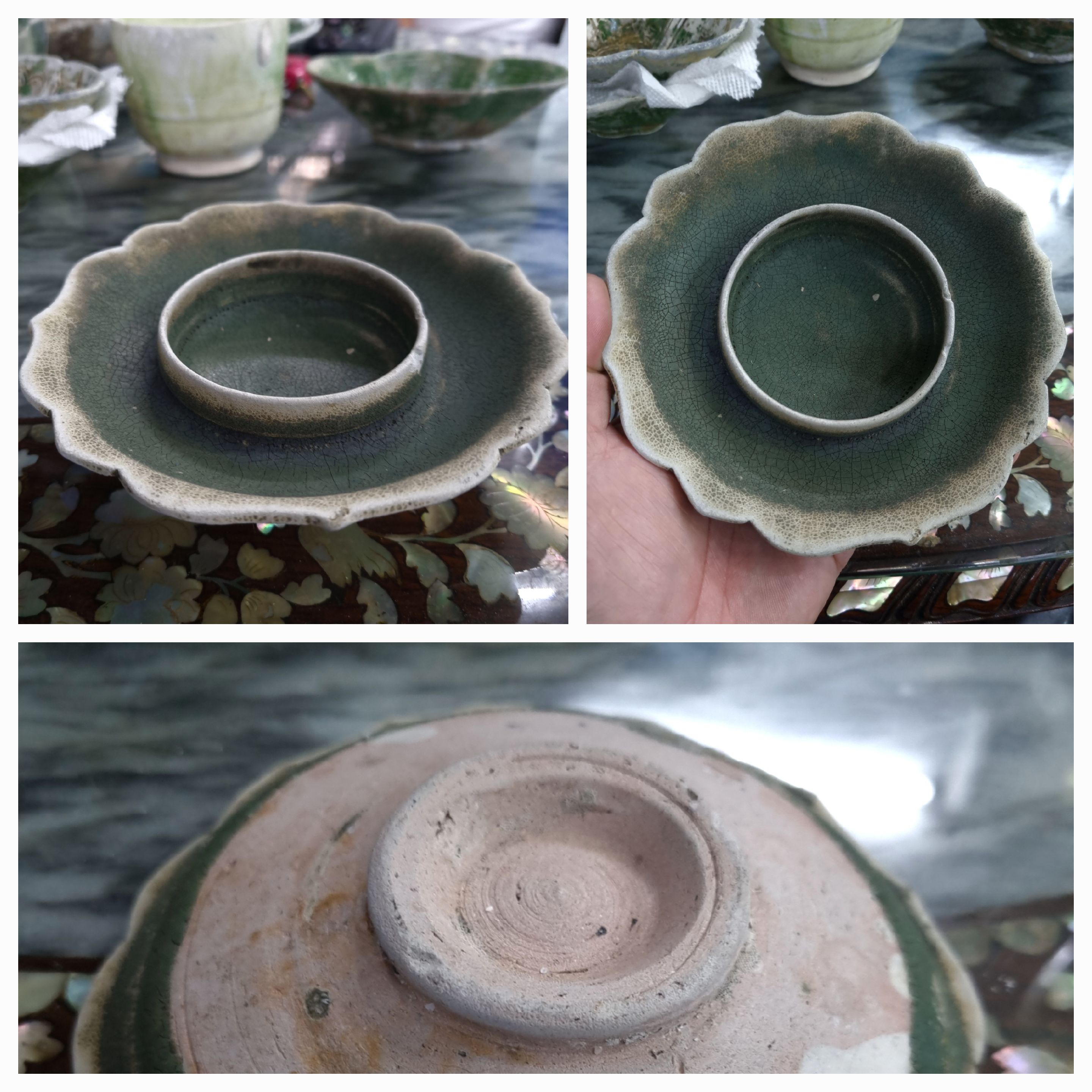 |
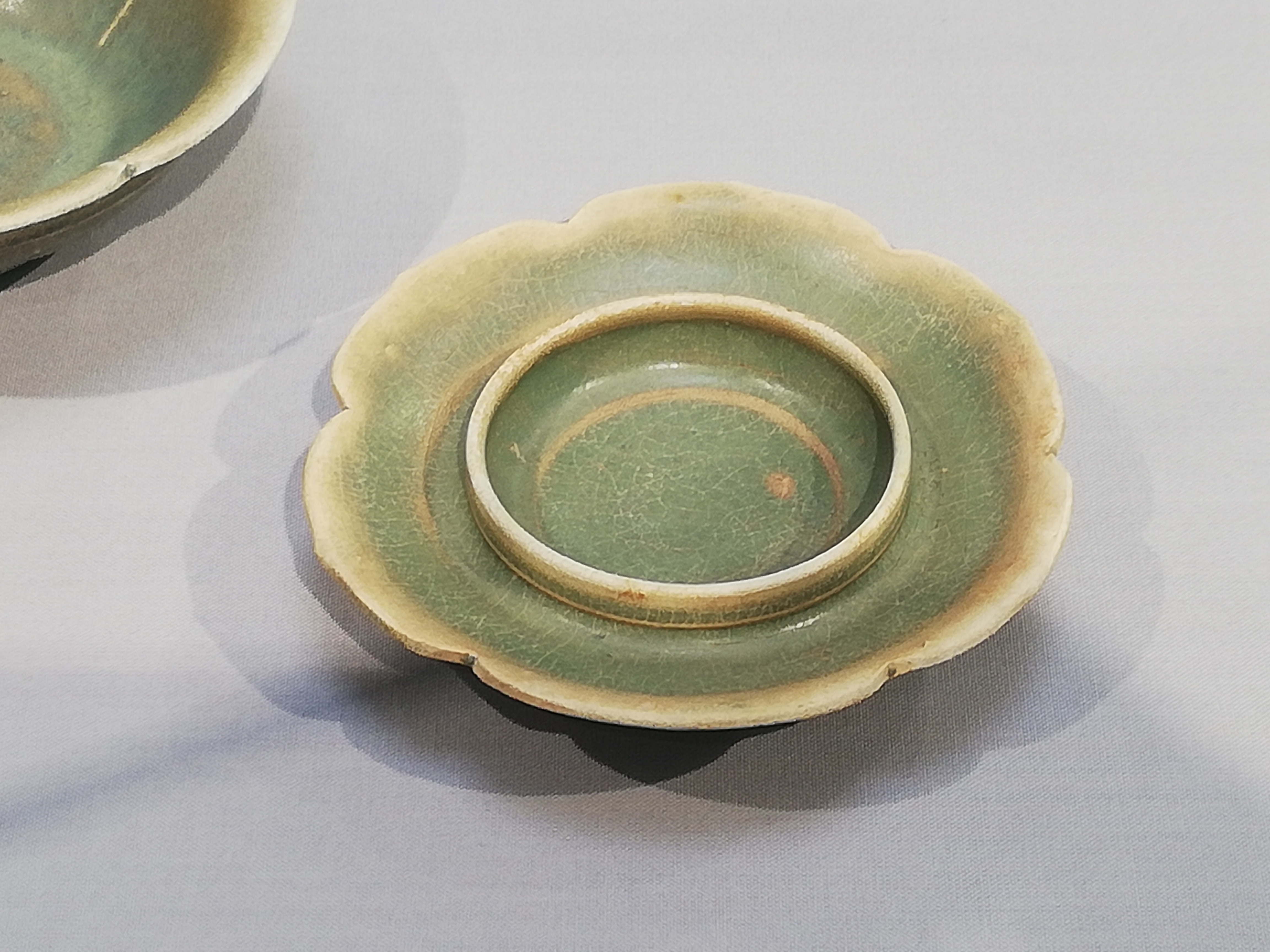 |
| Ba ria Wreck Bluish glaze Changsha cupstand | Belitung Wreck Bluish glaze Changsha cupstand |
- Ewers and Pots: Similar vessel types appear in both wrecks.
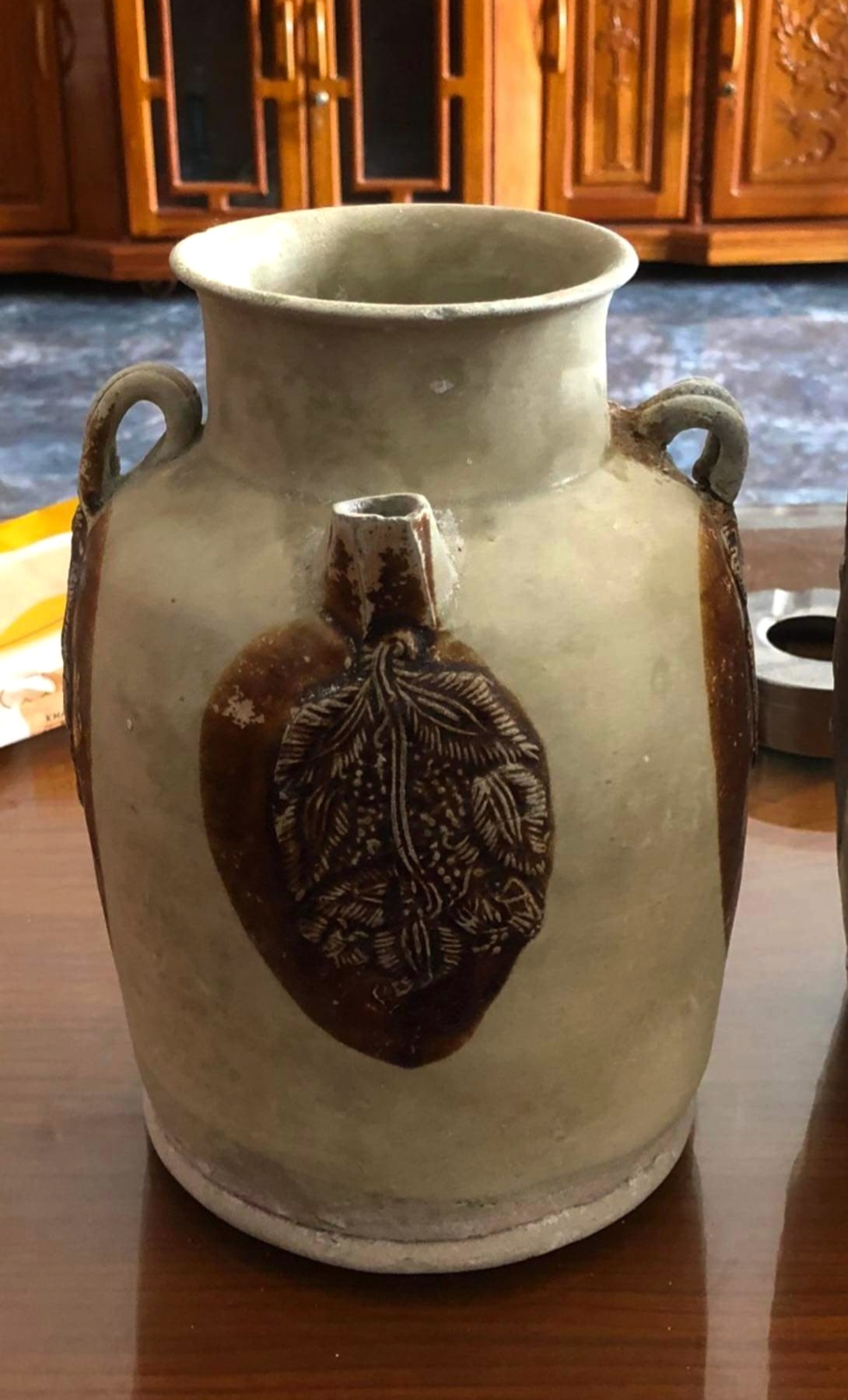 |
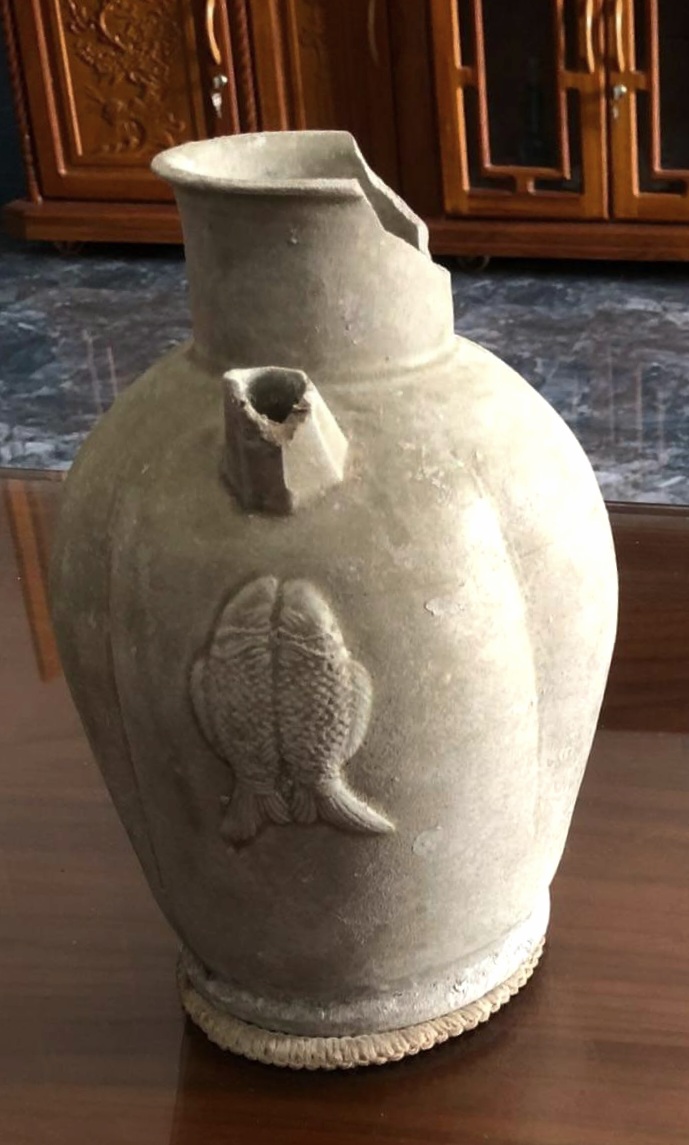 |
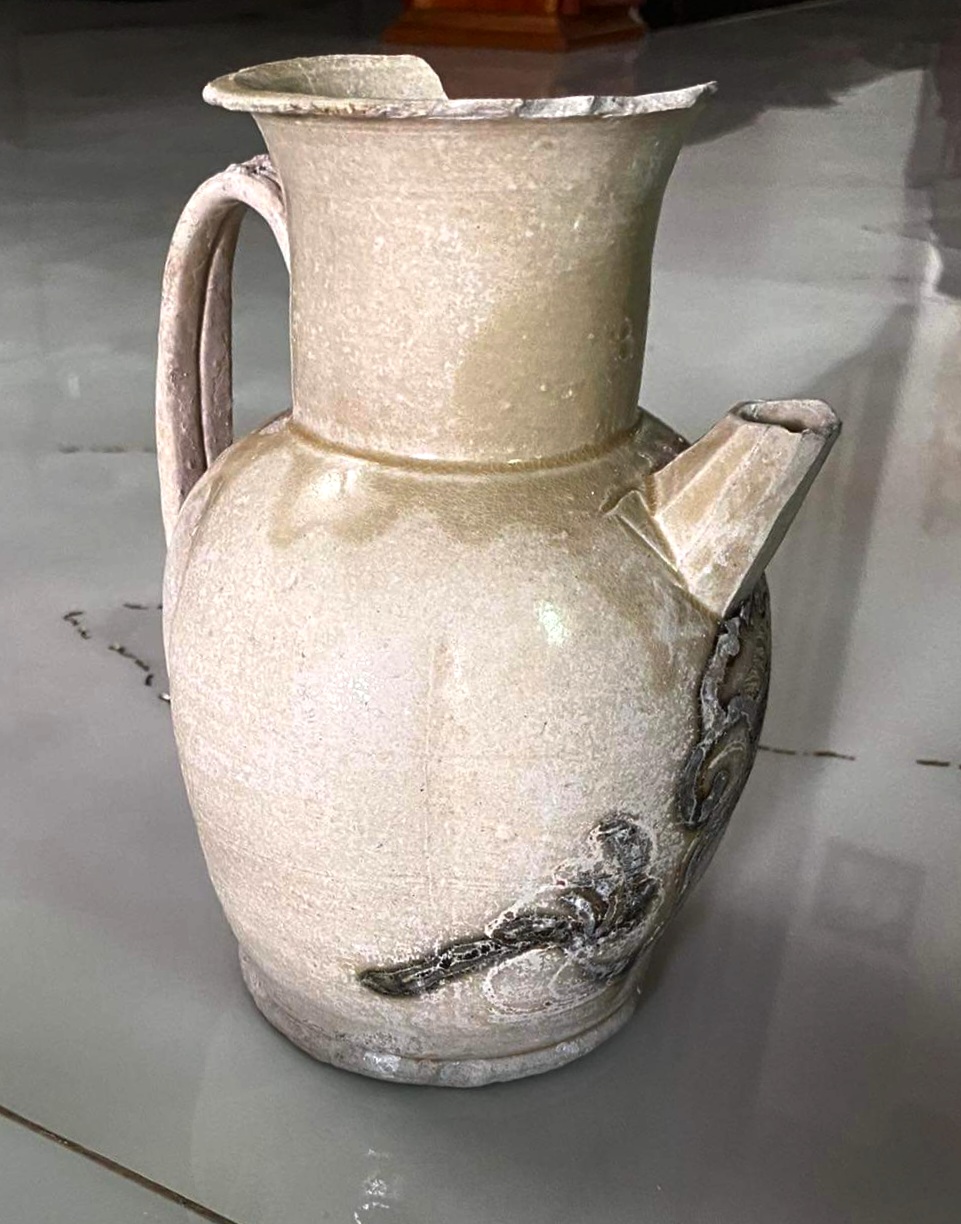 |
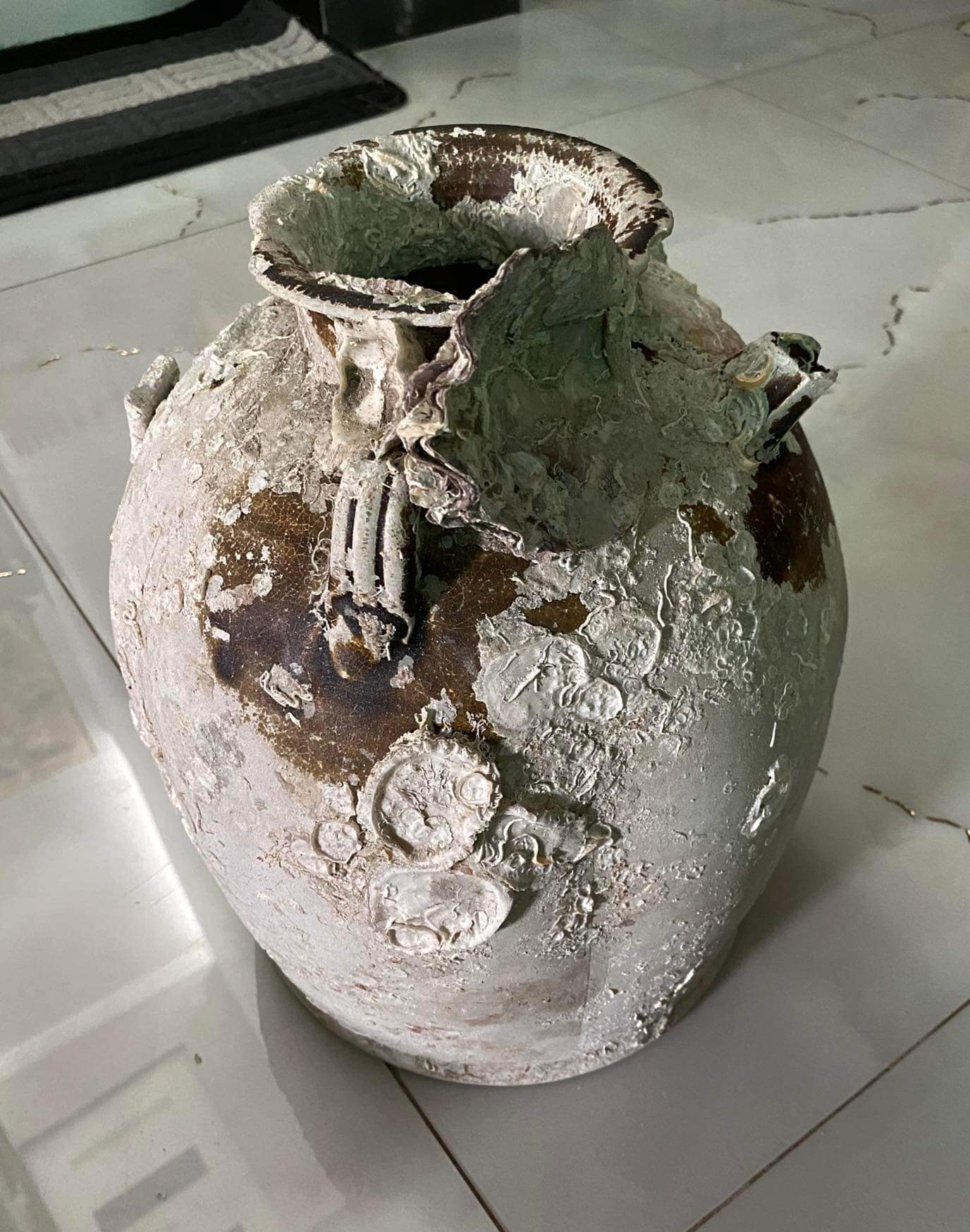 |
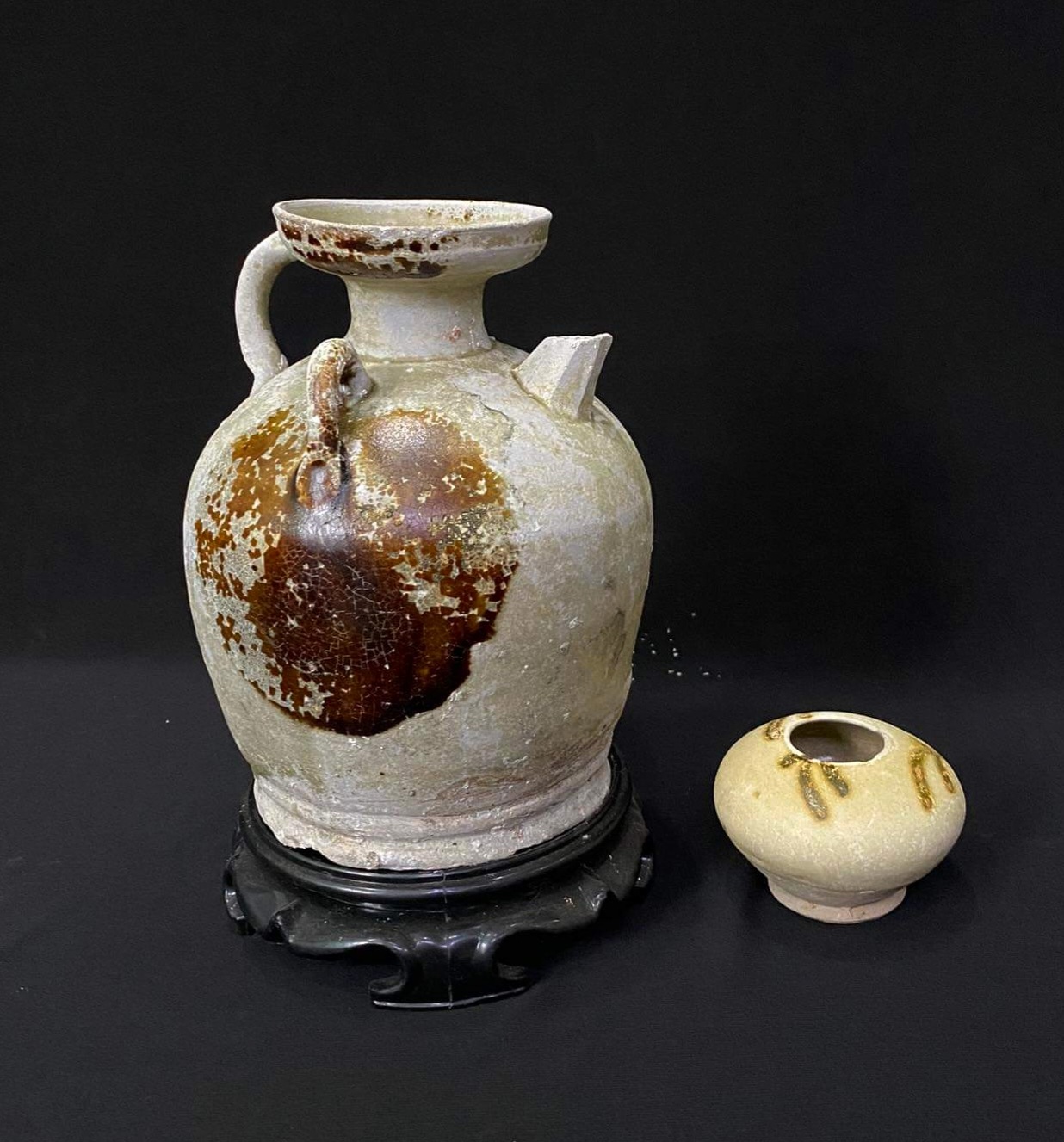 |
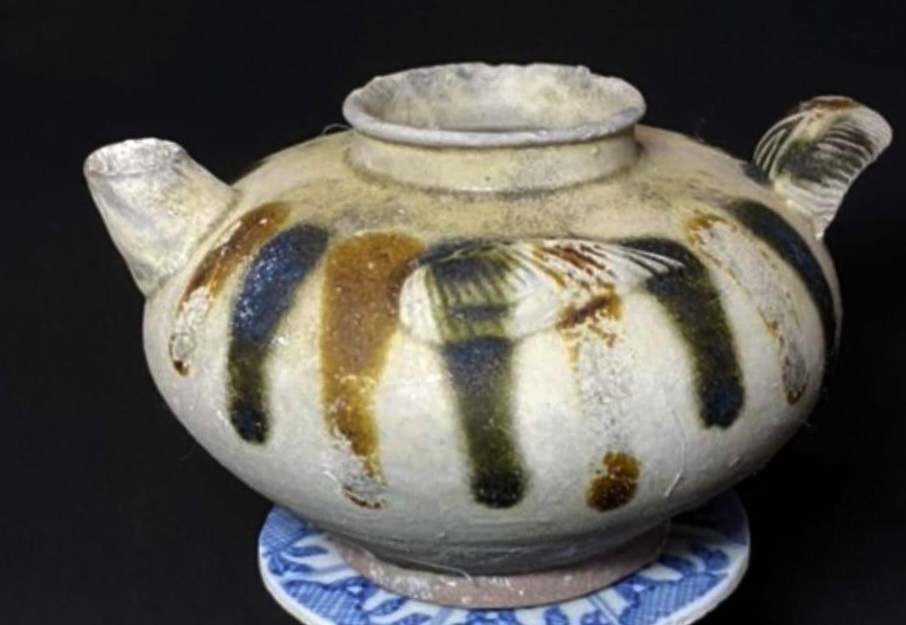 |
| Various form of Changsha ewers and small pots are also found in the Ba Ria wreck. Comparable examples were also found in the Belitung wreck. (Photo Credit: Thien Tong) |
2. Yue Wares
- Close parallels exist between Ba Ria and Belitung Yue
bowls, jars, censers abd oval-shaped censer and cups,
underscoring shared production traditions.
 |
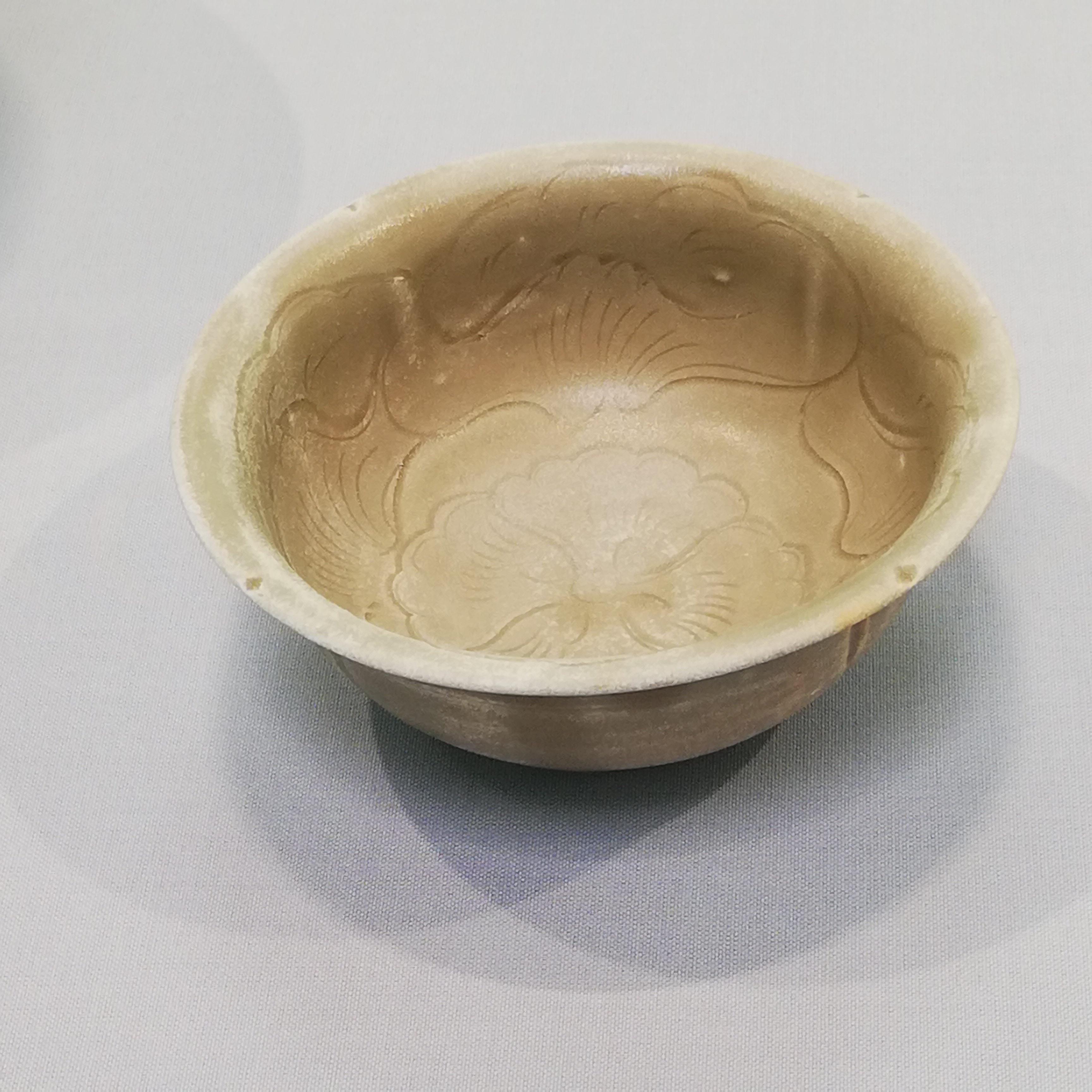 |
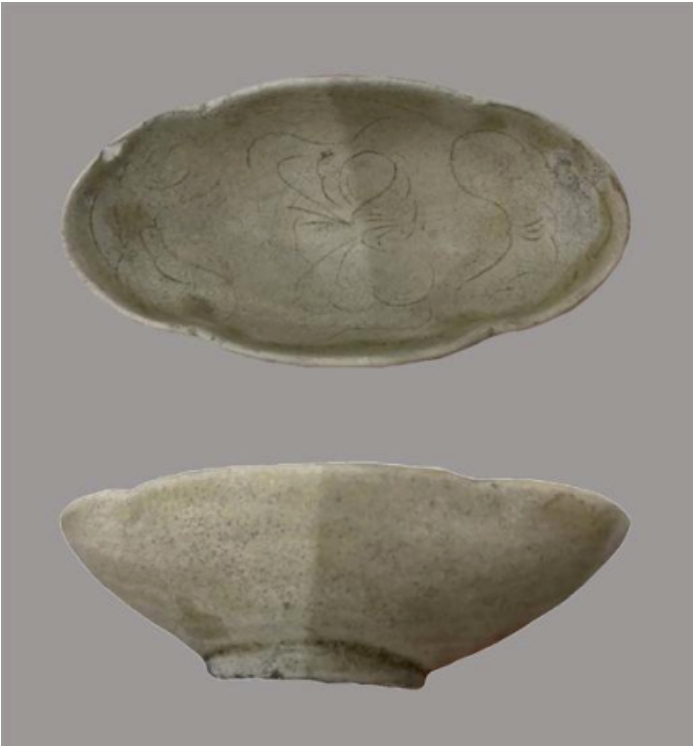 |
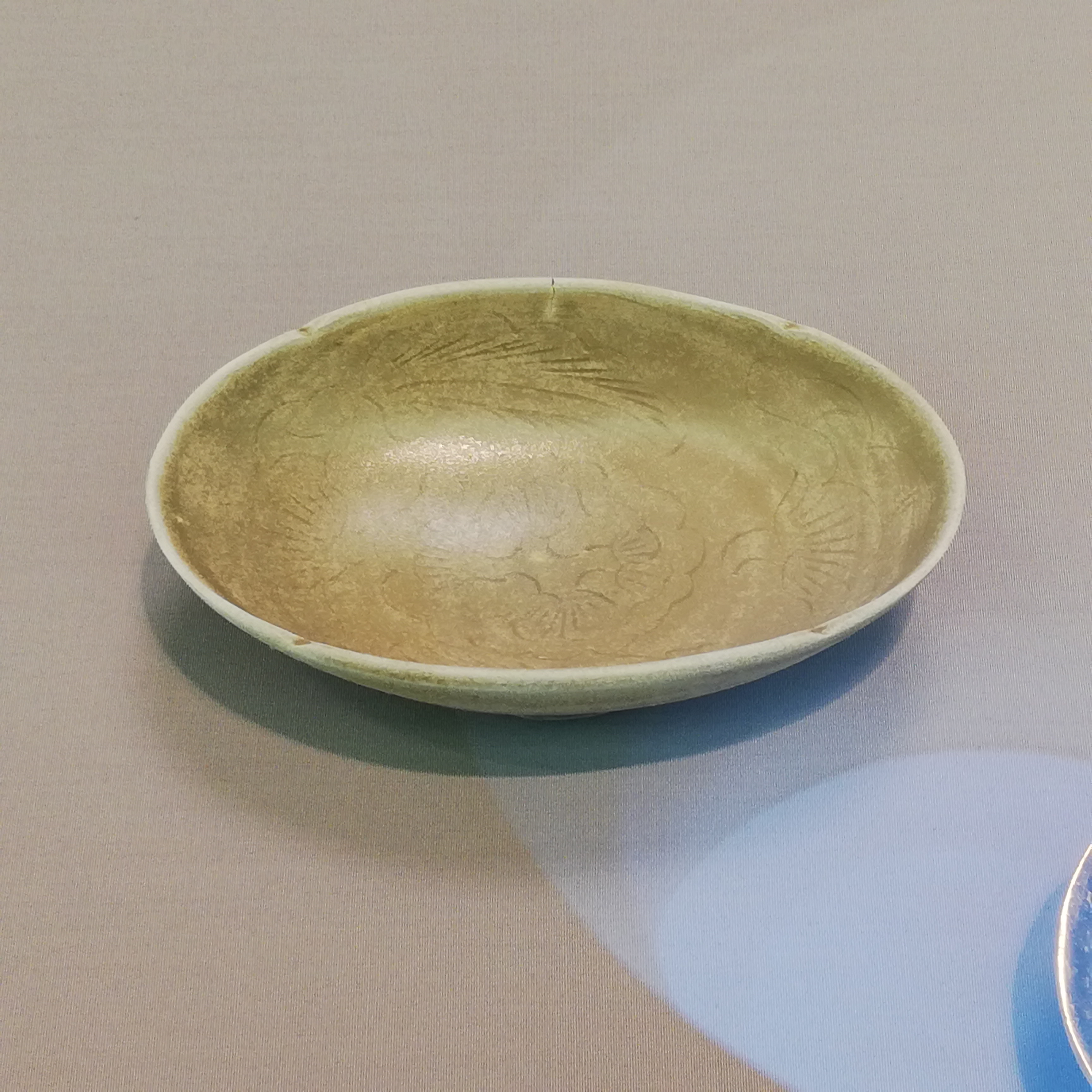 |
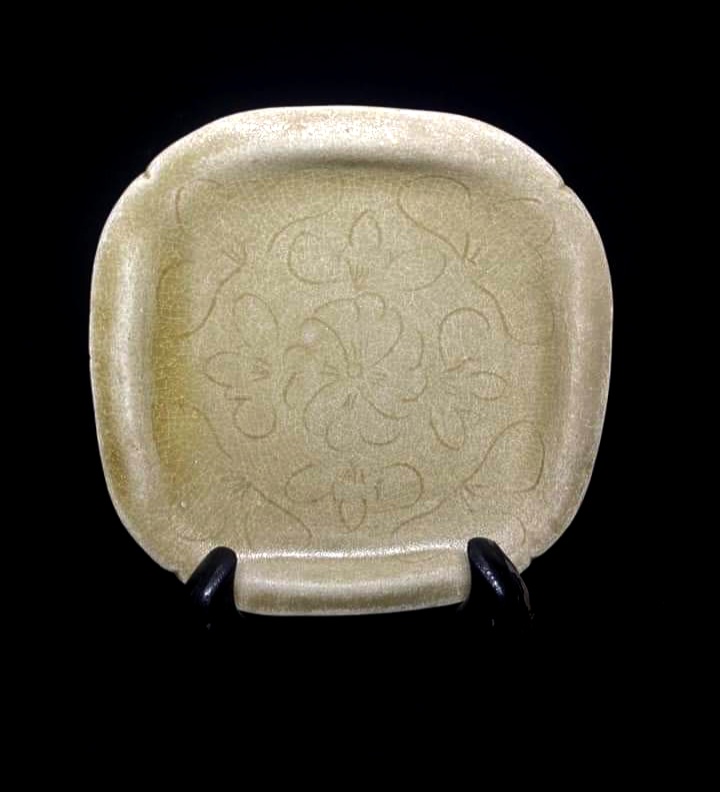 |
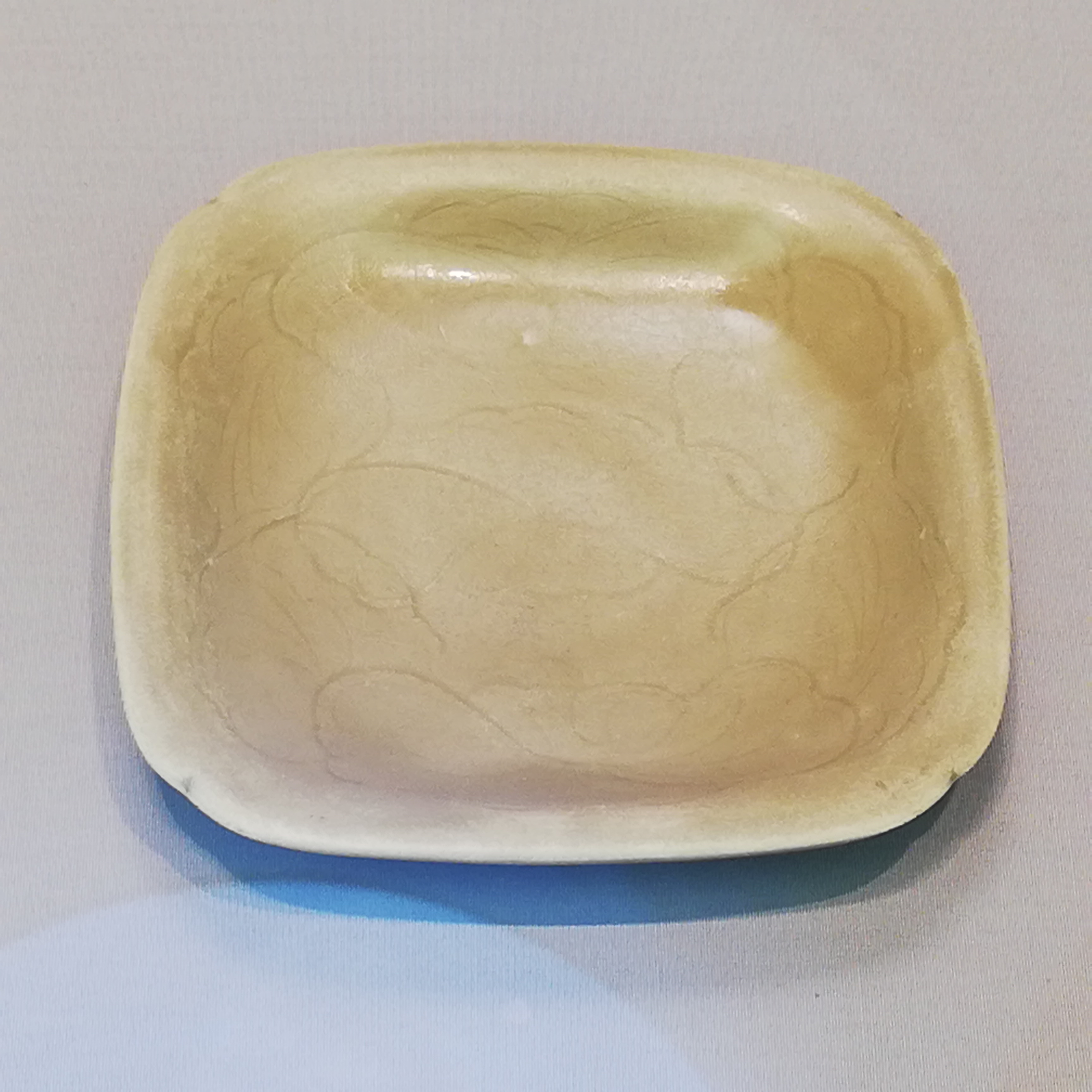 |
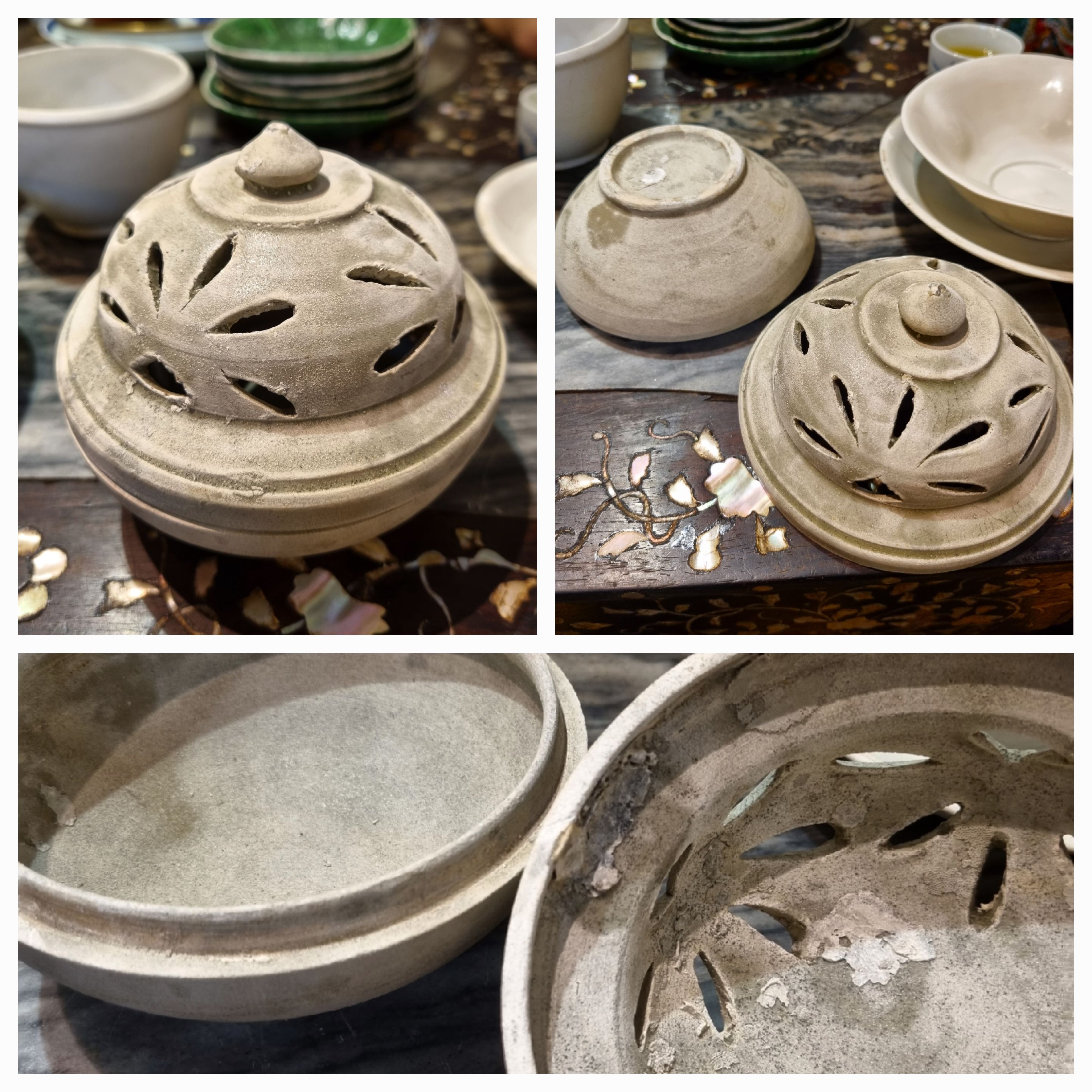 |
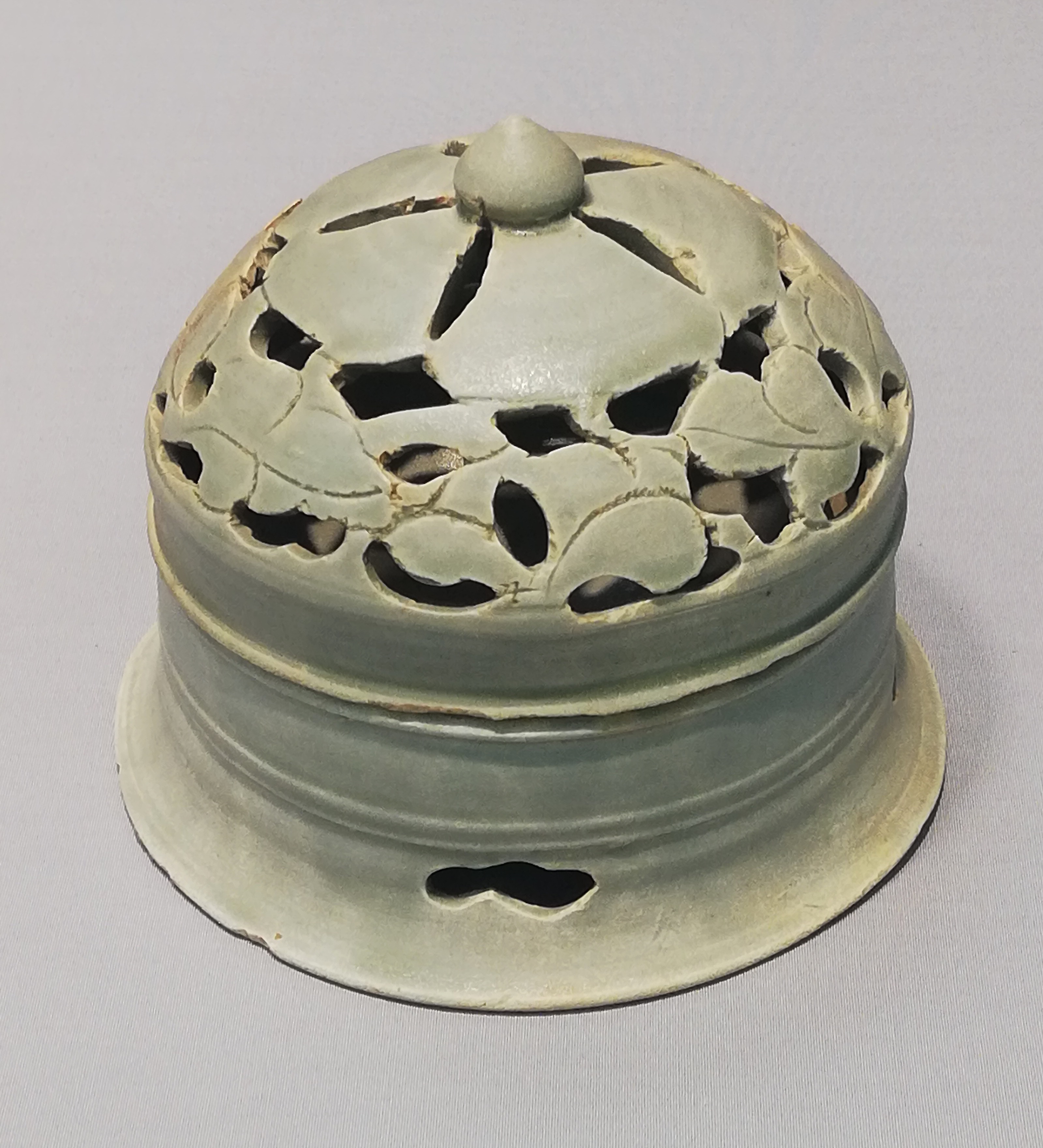 |
| Comparable Yue wares from Ba Ria (left) and Belitung wreck | |
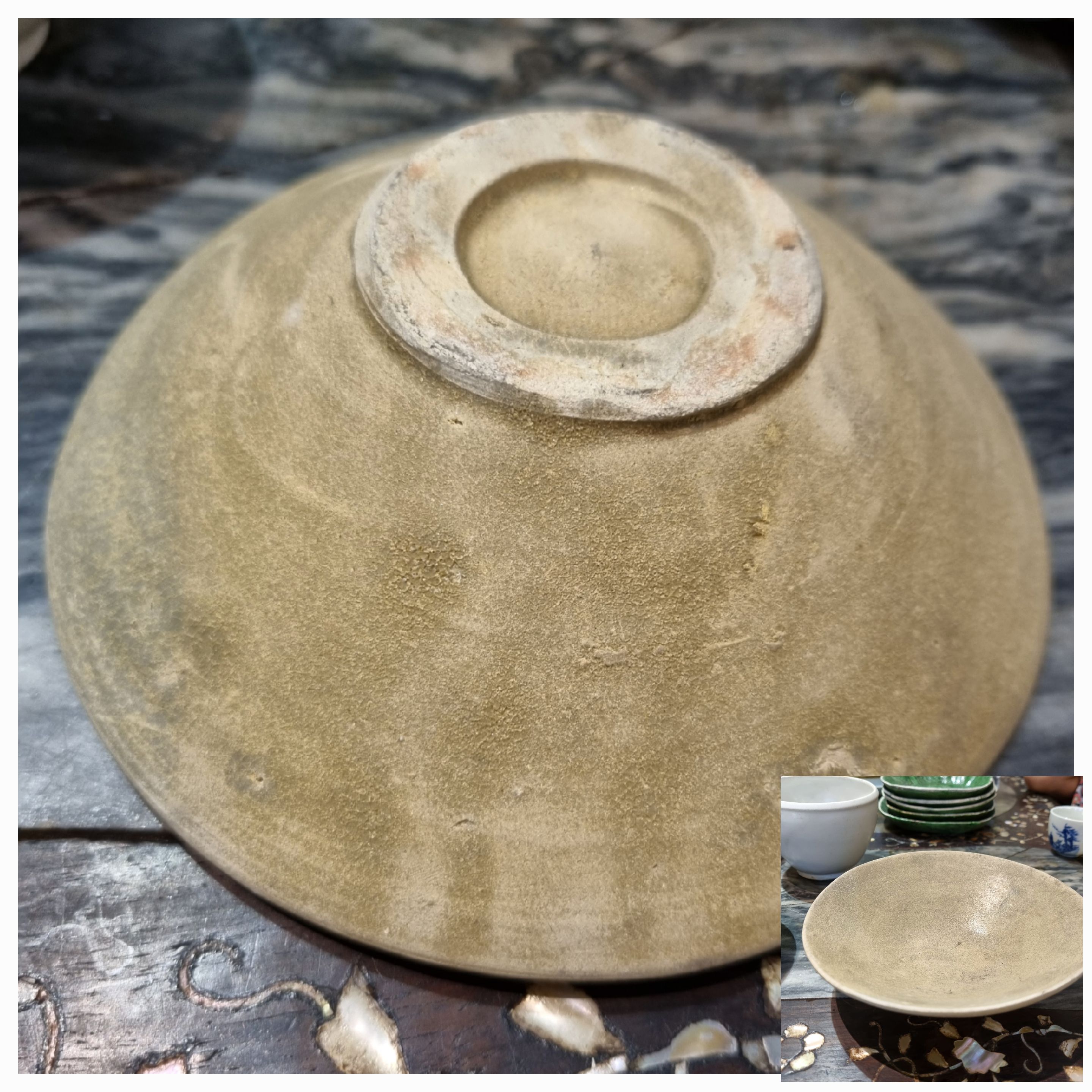 |
| Ba Ria wreck Yue Yu bi base bowl. Similar bowls were also found in the Belitung wreck |
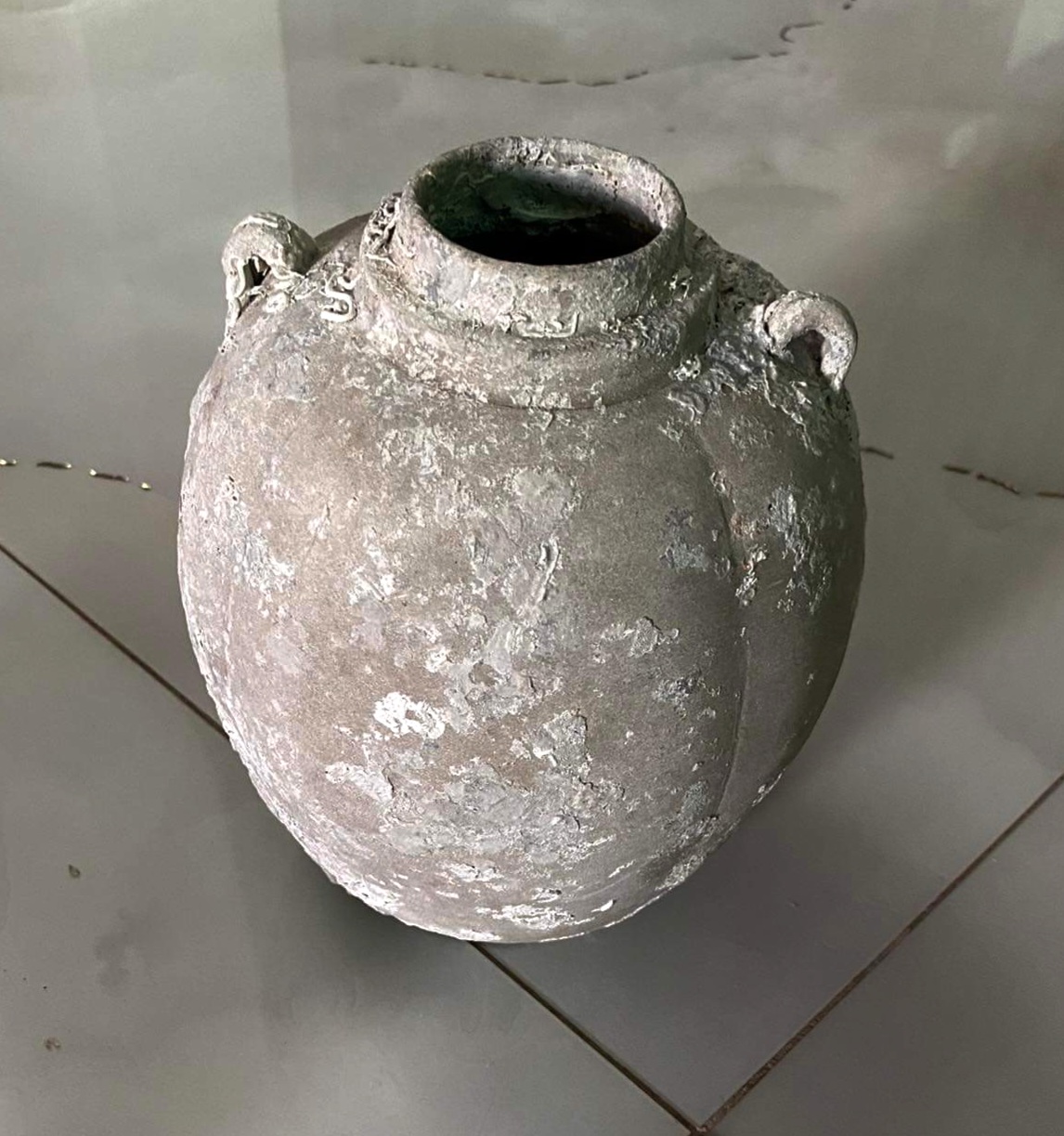 |
| Ba Ria wreck Yue jar with cover missing |
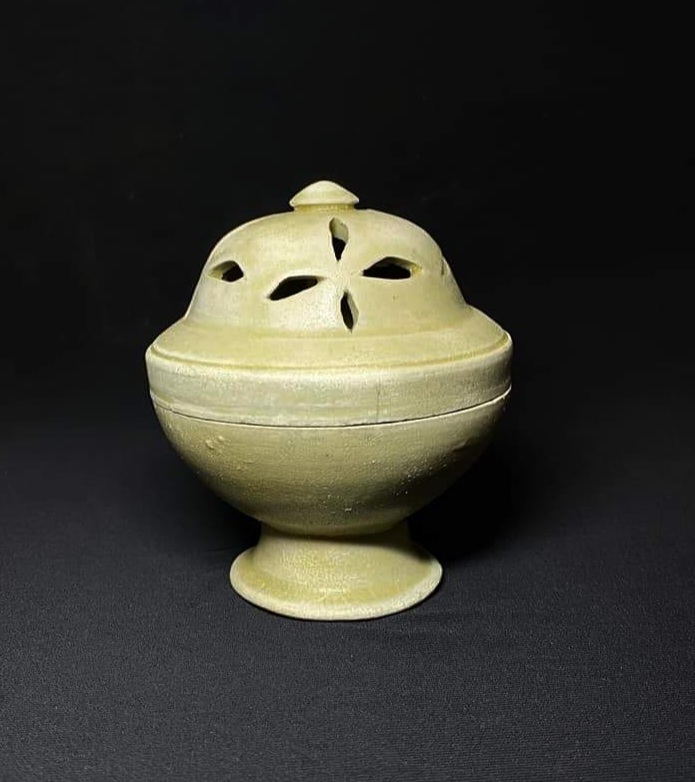 |
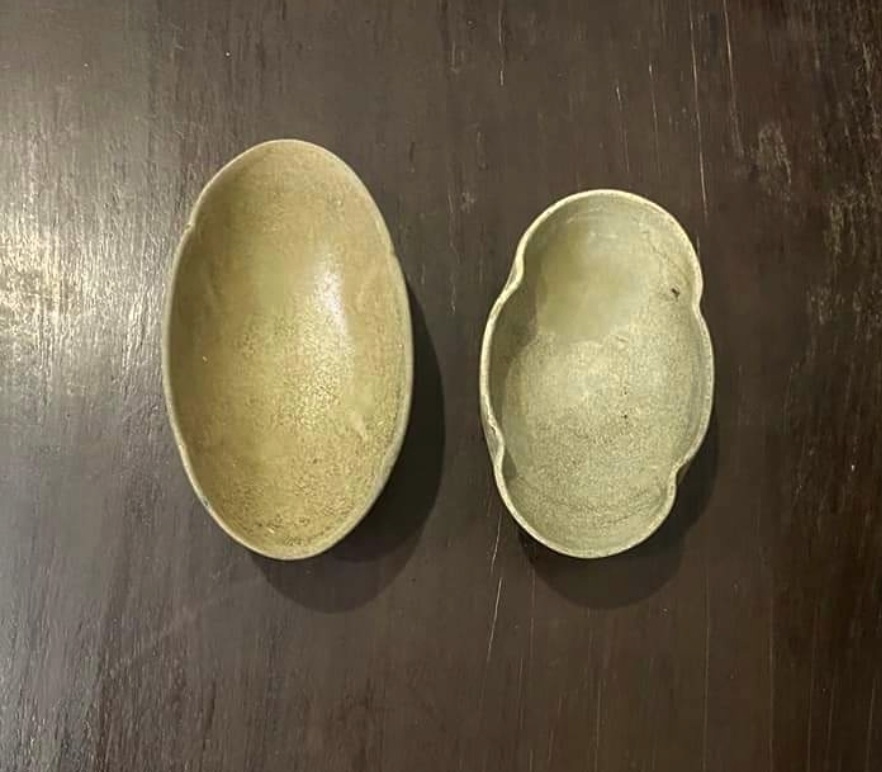 |
| Ba Ria wreck Yue Censer and oval shaped cups. (Photo credit: Thien Tong) |
3. Northern White-Glazed Wares
- The Ba Ria cargo features a broader variety of white-glazed
vessels, including folded-rim bowls, ewers, and rare sculptural
forms (e.g., an ox-drawn carriage with human figures;). Scientific analysis of a donated bowl suggests origins
outside the Xing or Gongxian kilns, hinting at multiple northern
production centers.
- By contrast, Belitung’s white wares are fewer and
attributed primarily to Xing and Gongxian kilns.
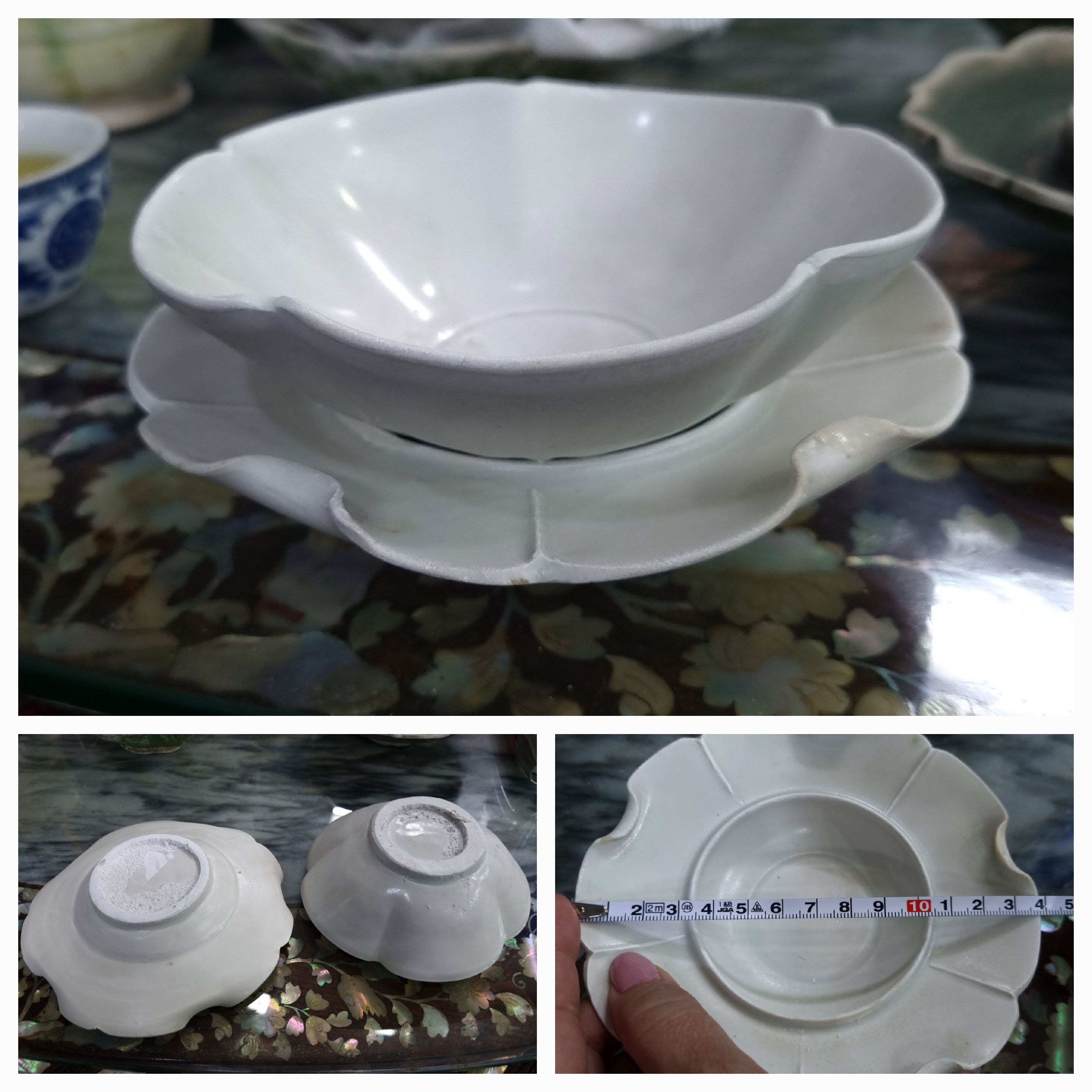 |
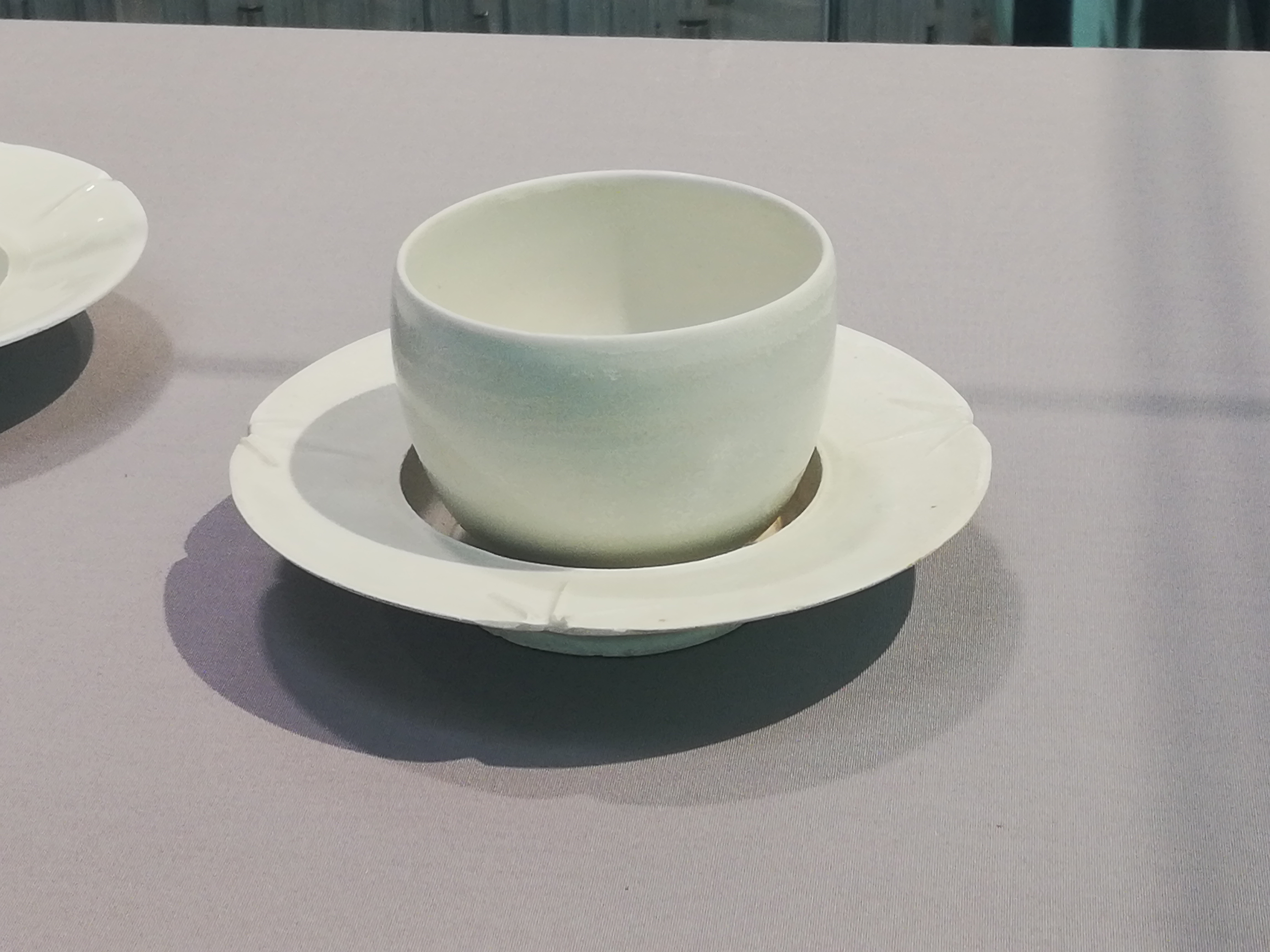 |
| Comparison of cup and cup/stand set from Ba Ria (left) and Belitung wreck. | |
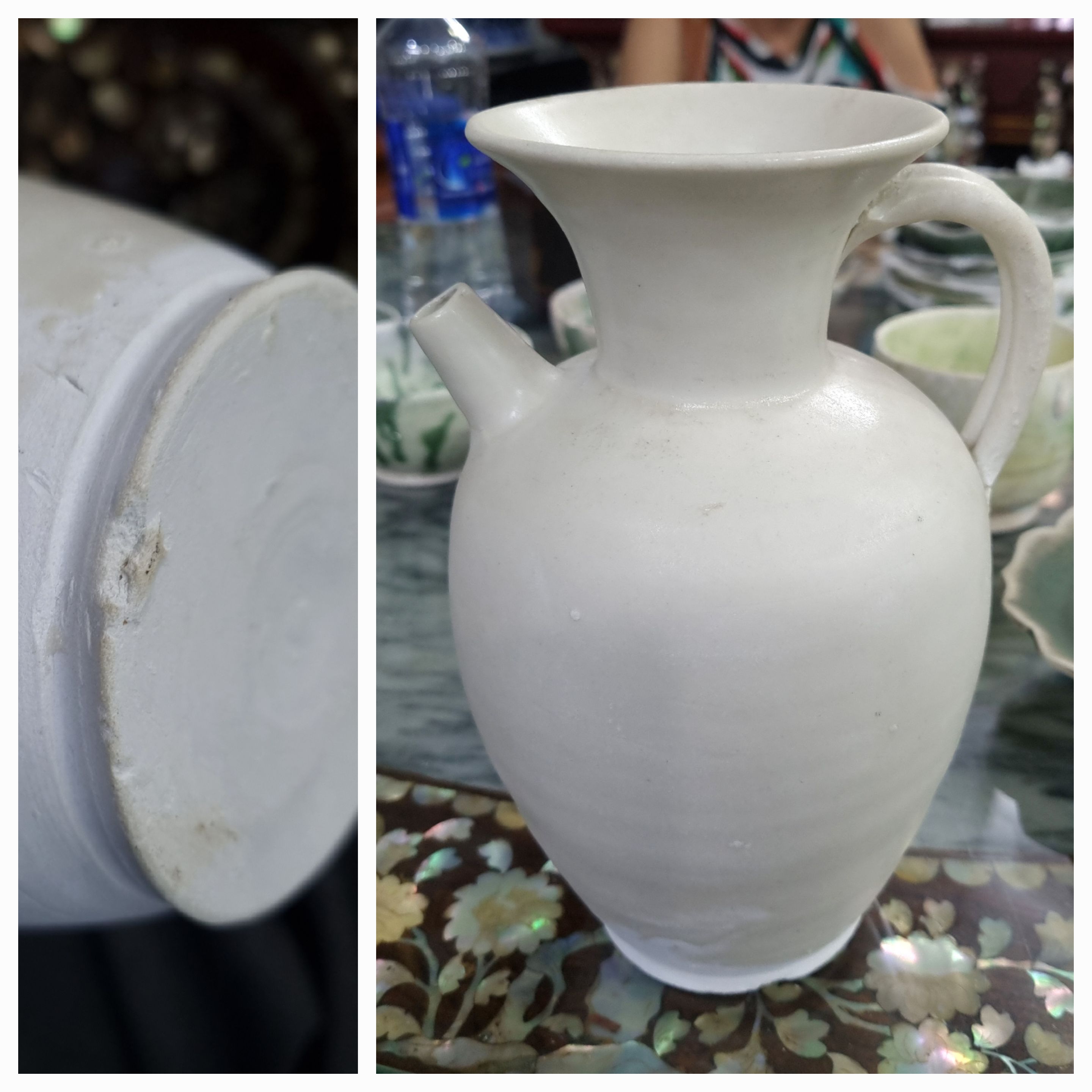 |
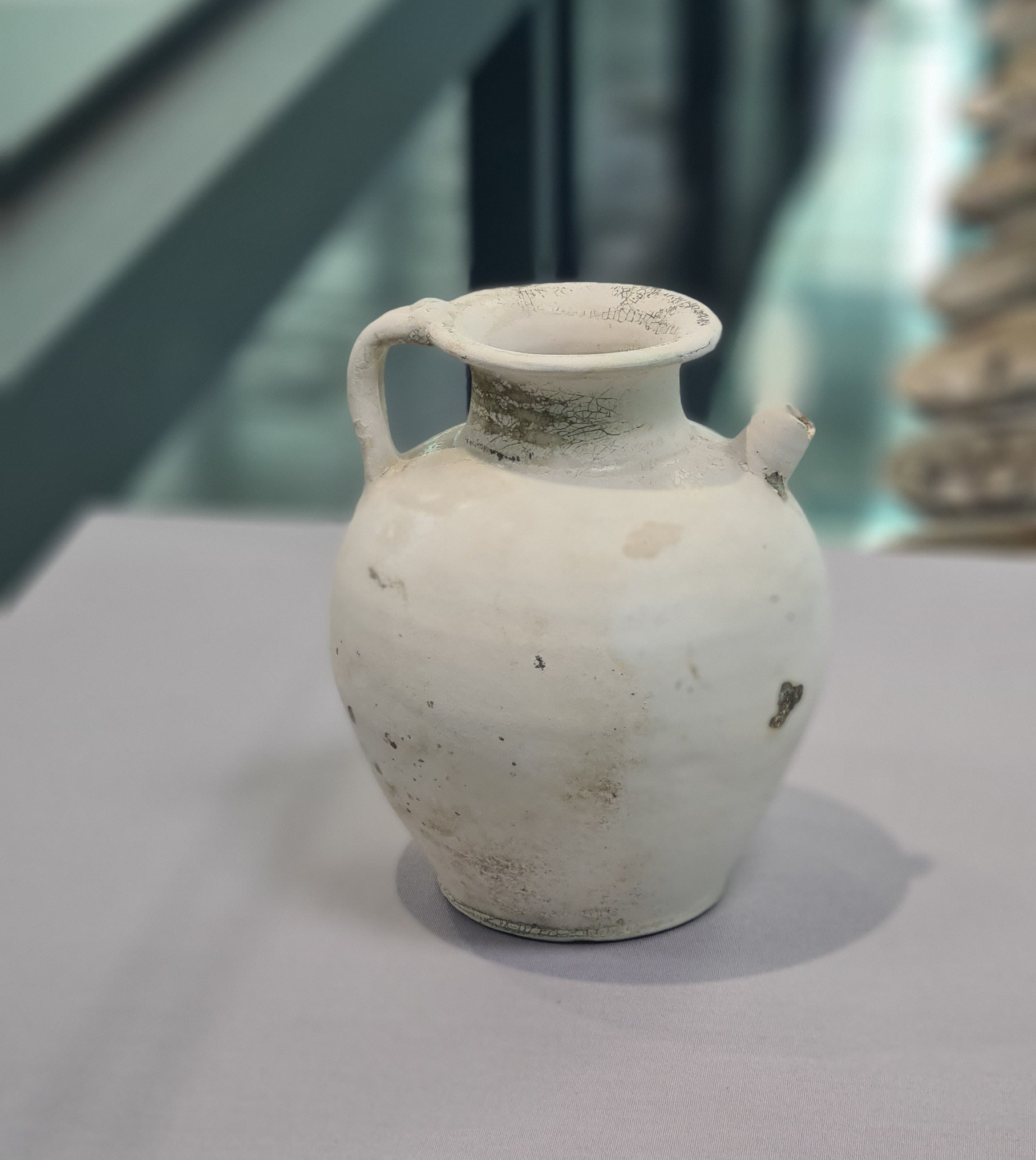 |
|
Comparison of White
glaze ewer from Ba Ria (left) and Belitung wreck. The ewer
from the Ba Ria wreck has a more elongated body which pointed to
later dating than that from the Belitung wreck. By the 5
Dynasties period, such ewer form is generally even more slender. |
|
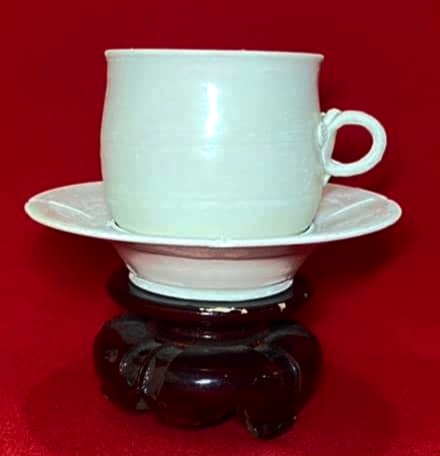 |
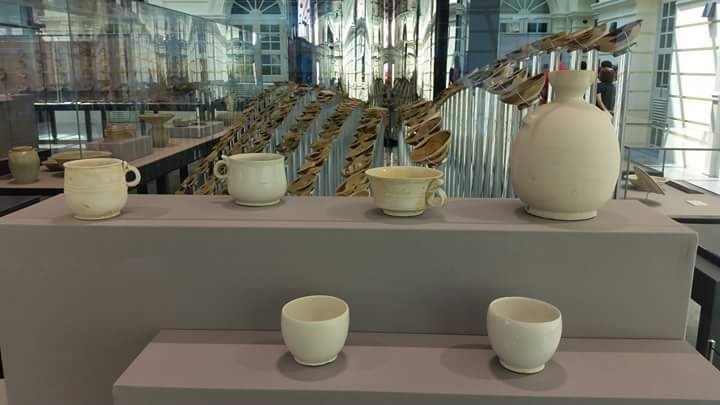 |
 |
|
| Comparison of cup form from the Ba Ria (left) and Belitung Wreck. | |
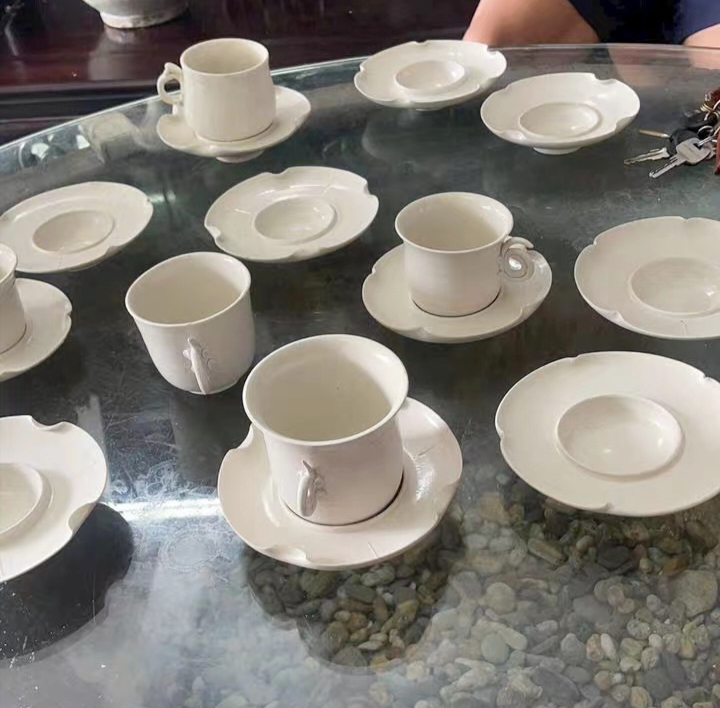 |
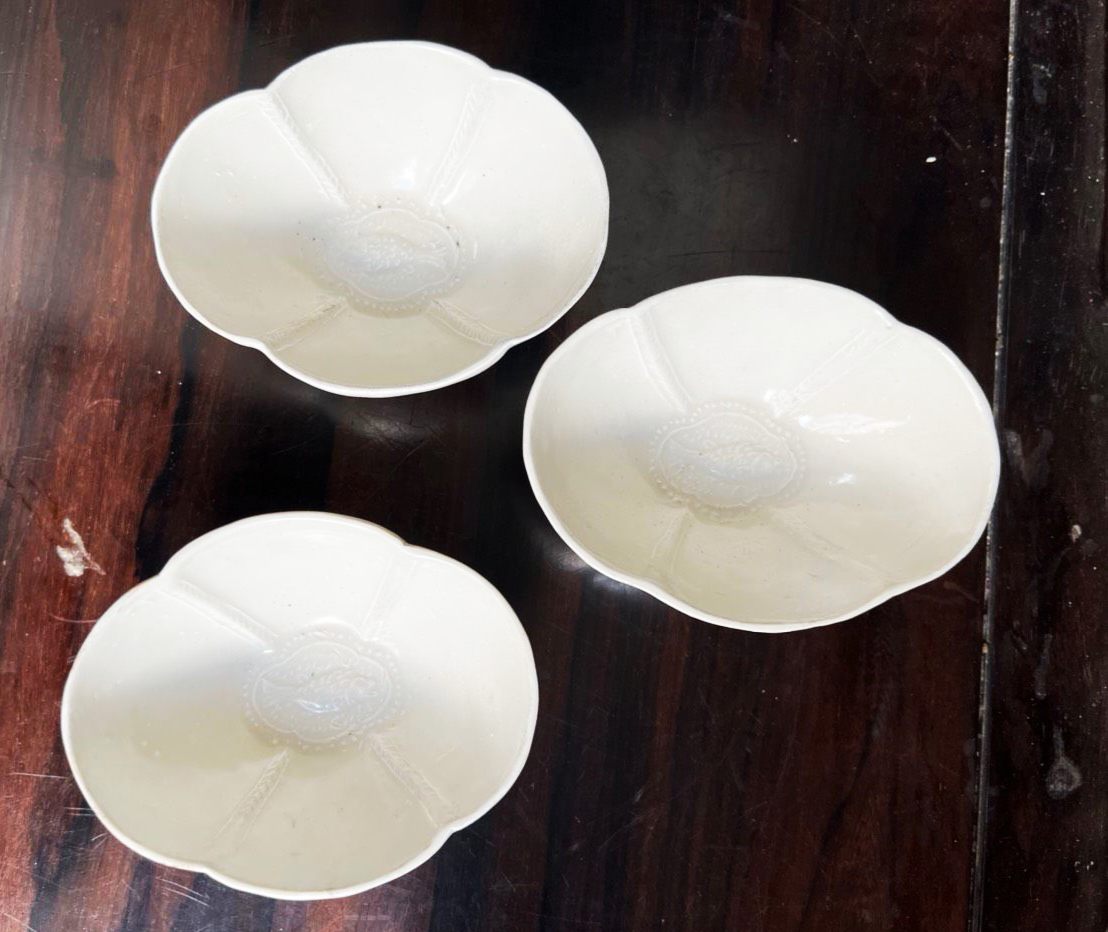 |
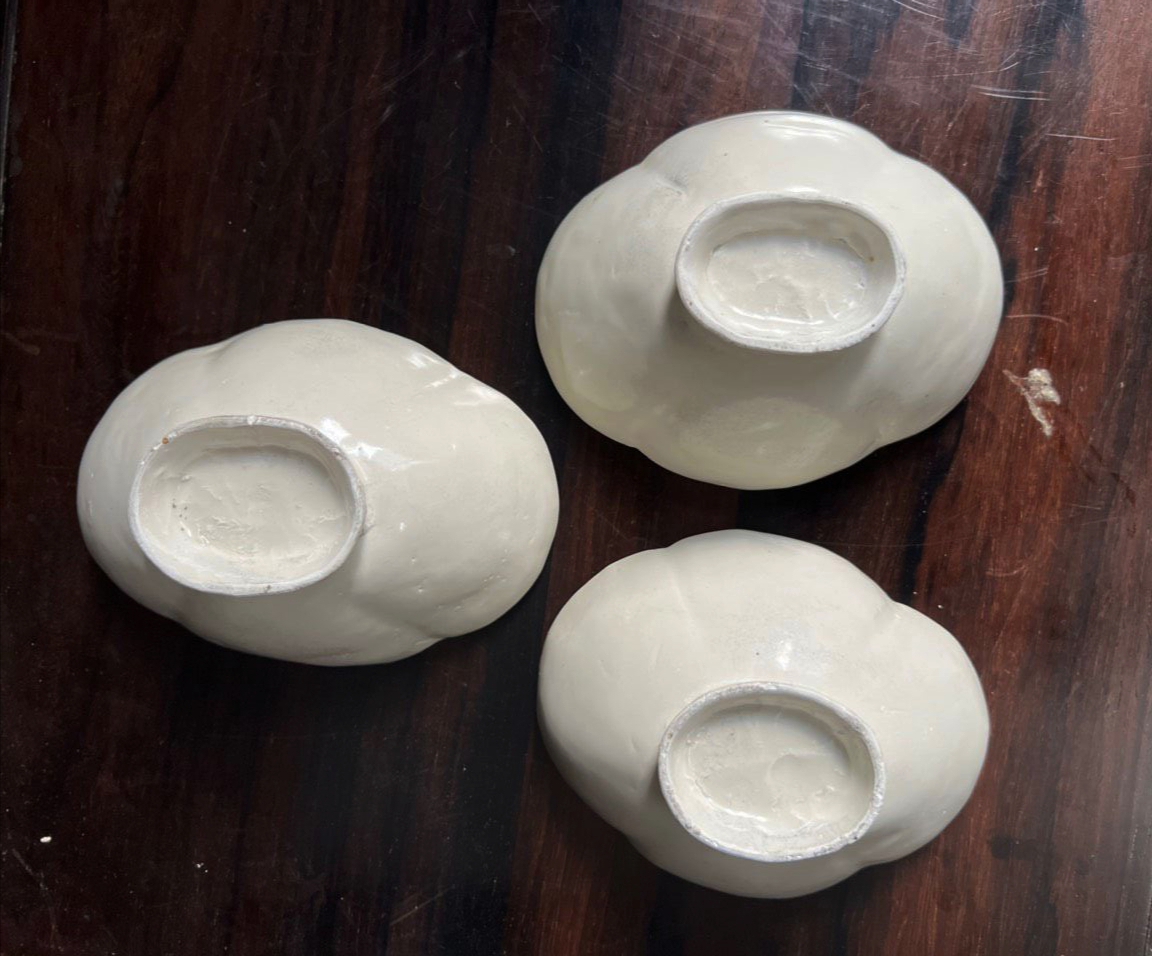 |
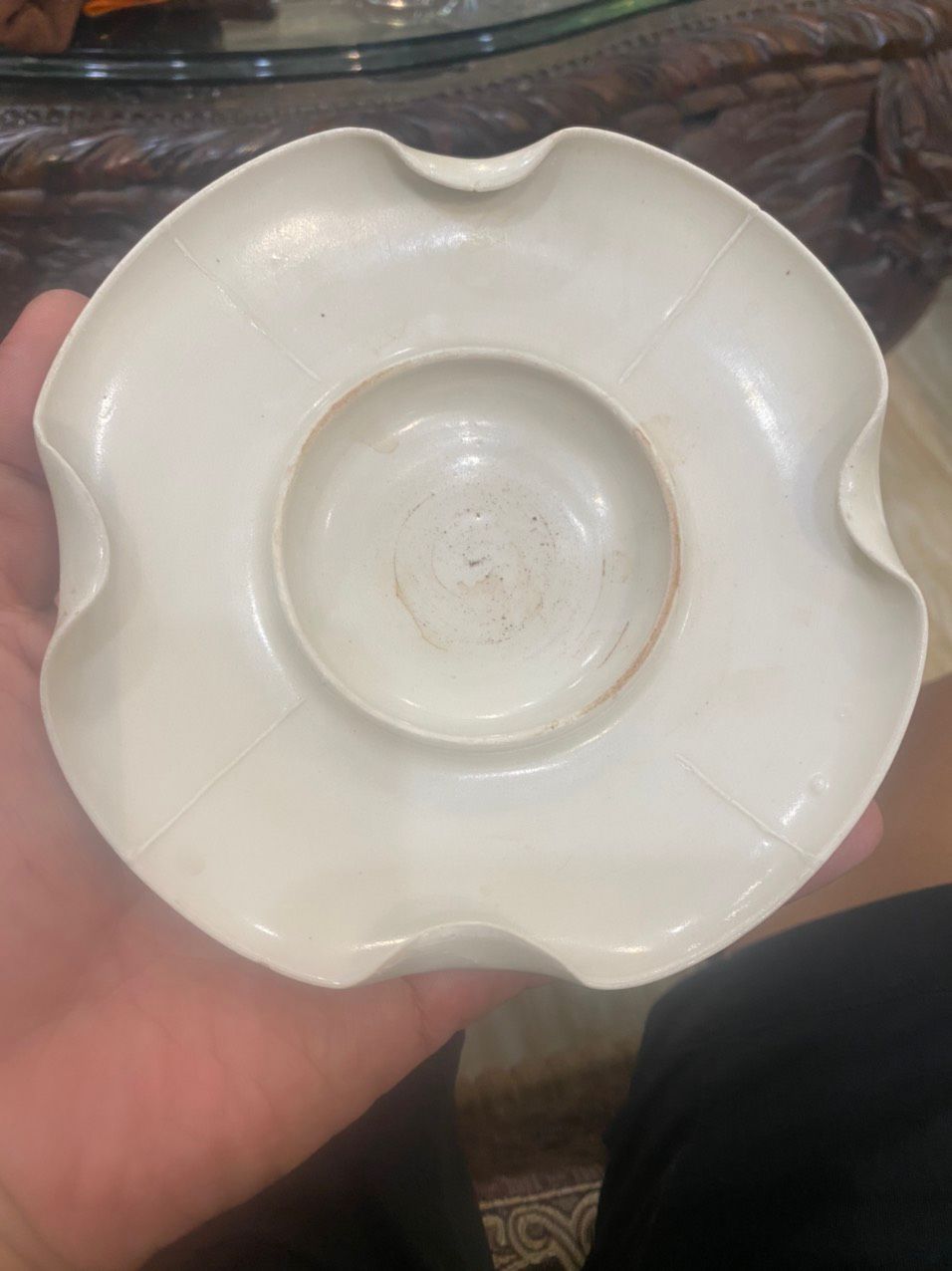 |
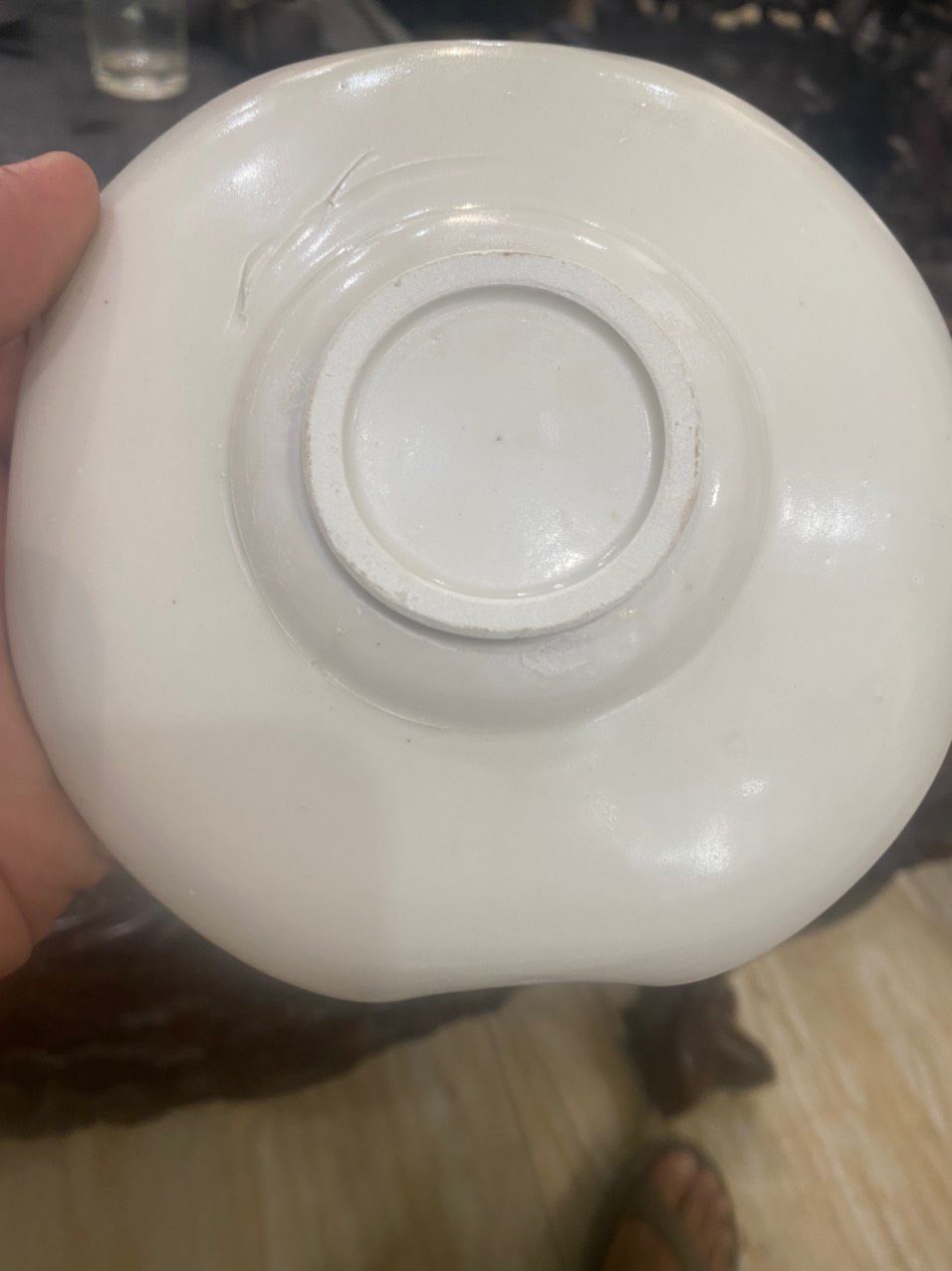 |
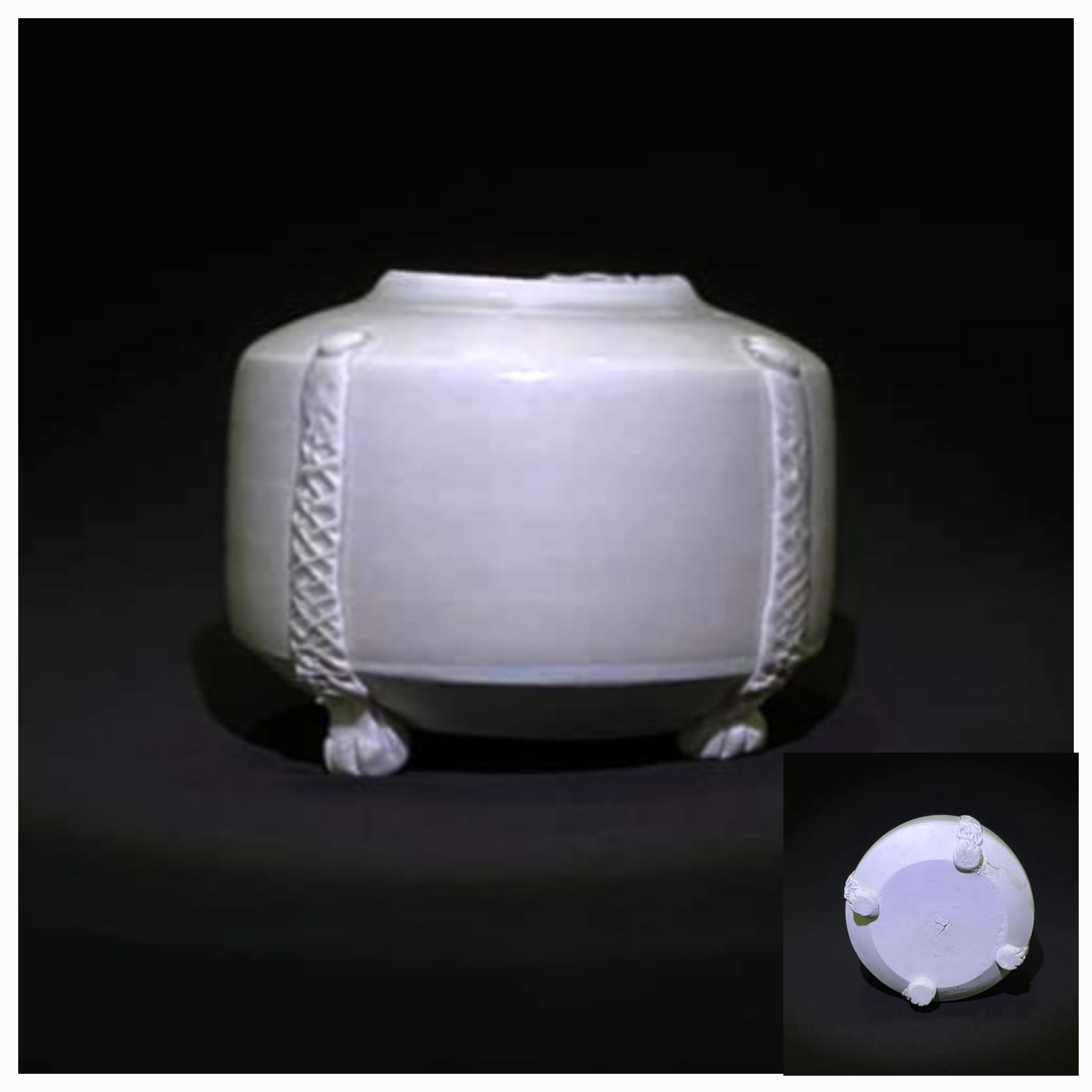 |
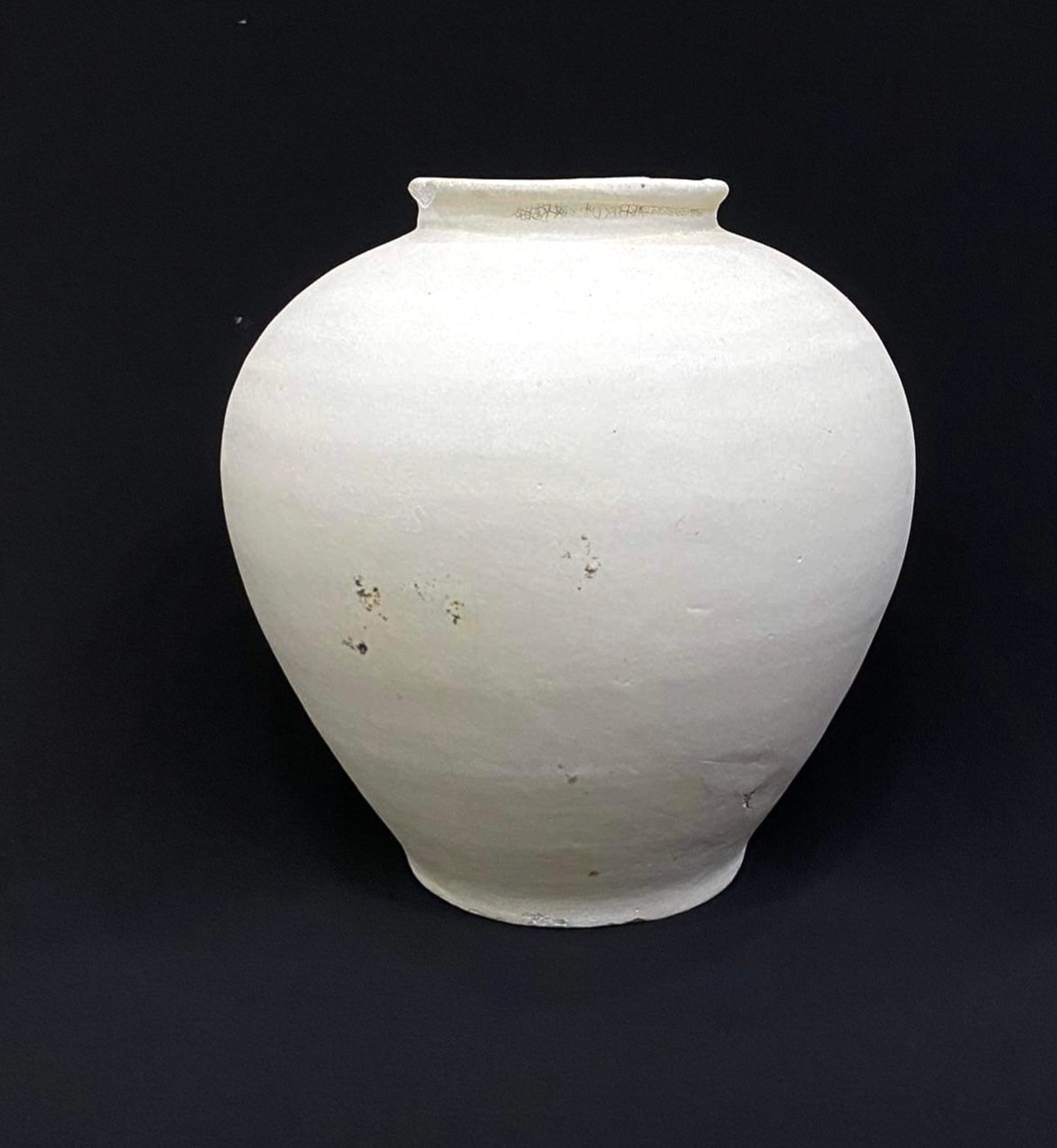 |
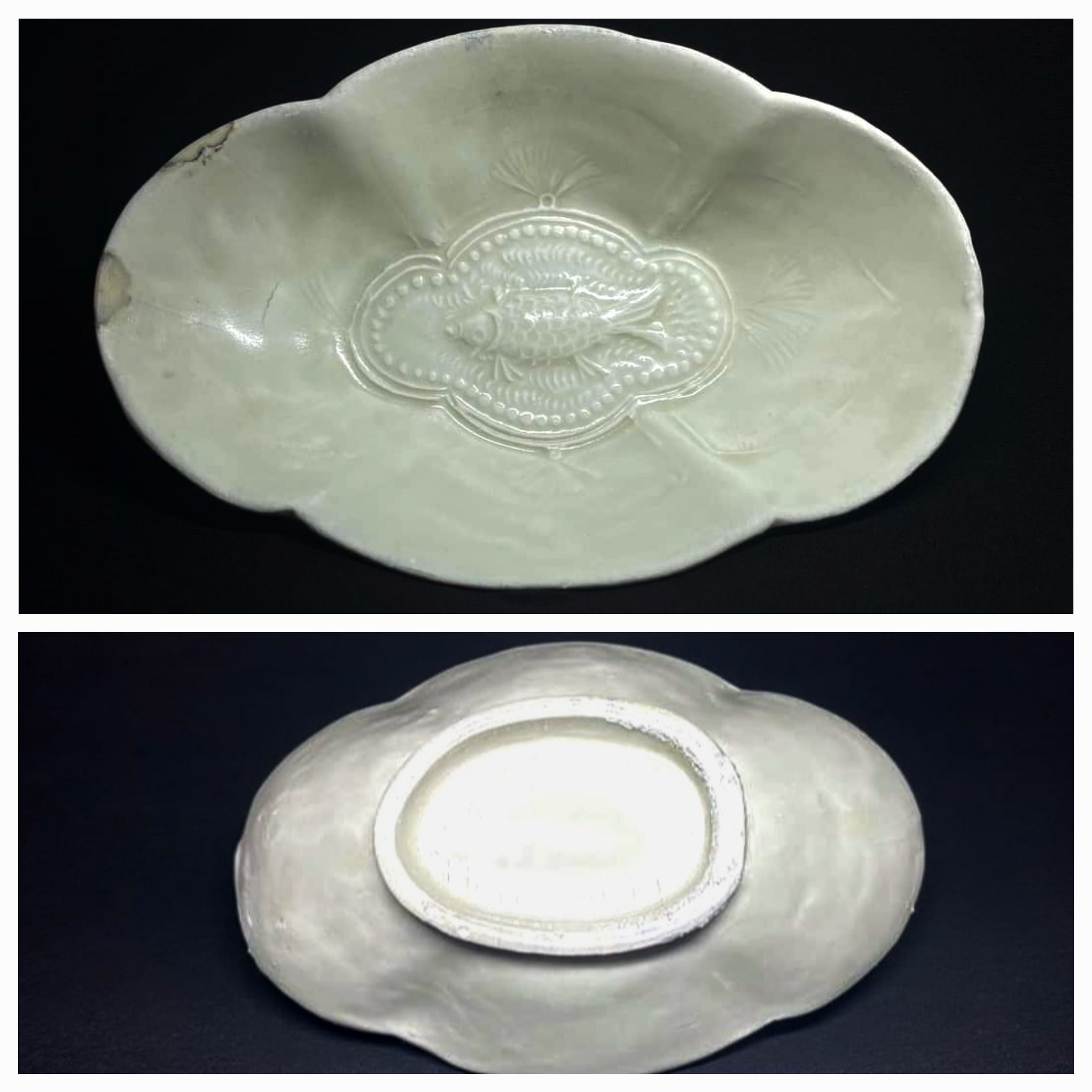 |
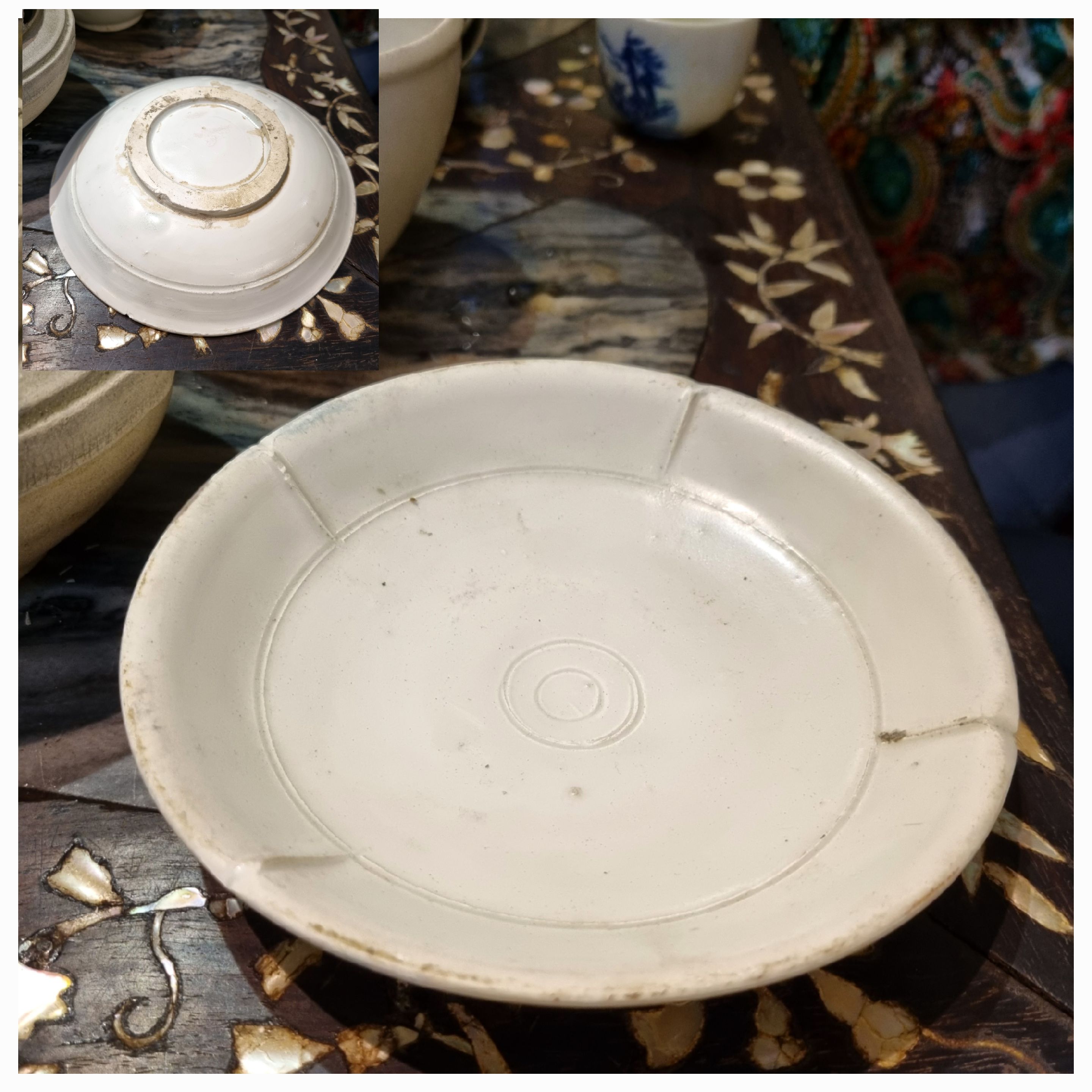 |
| Some other white glaze wares from the Ba Ria wreck |
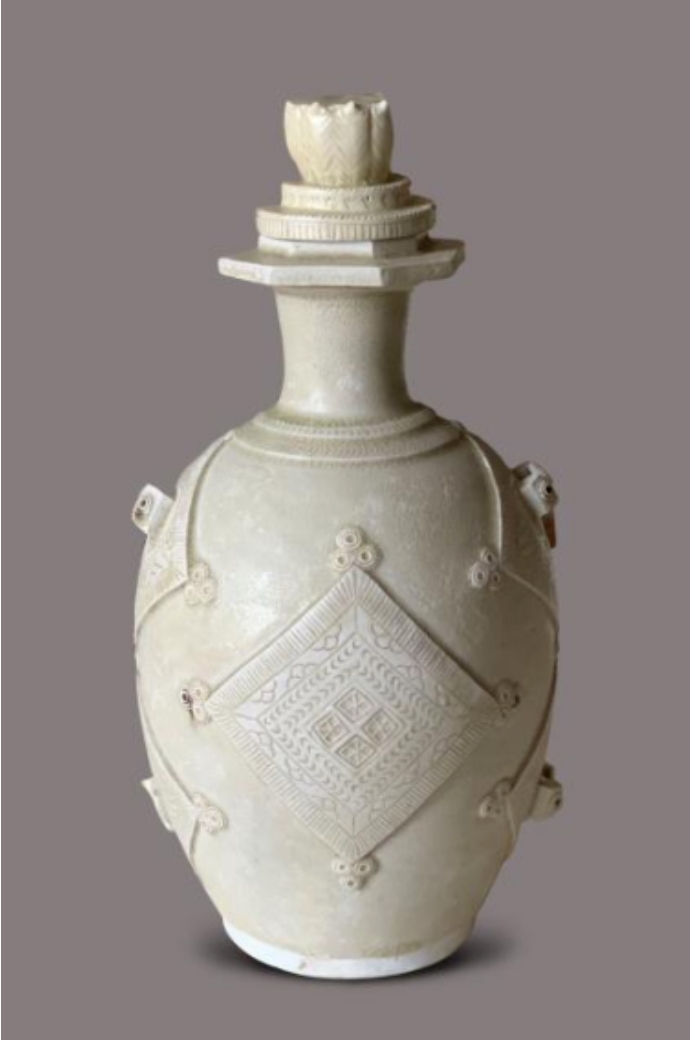 |
|
| Rare white glaze jar with elaborate applique Islamic influenced geometric decoration from Ba Ria wreck | |
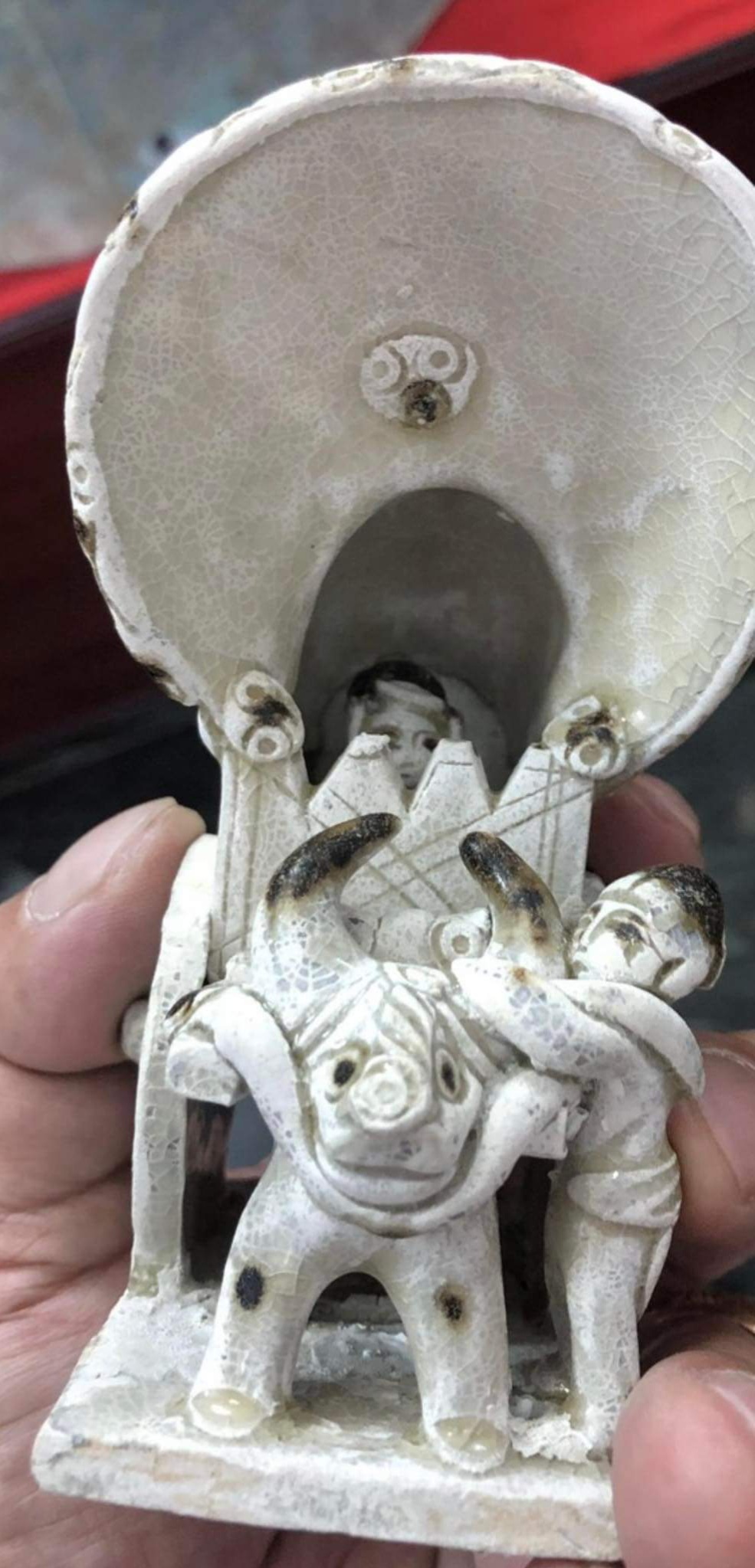 |
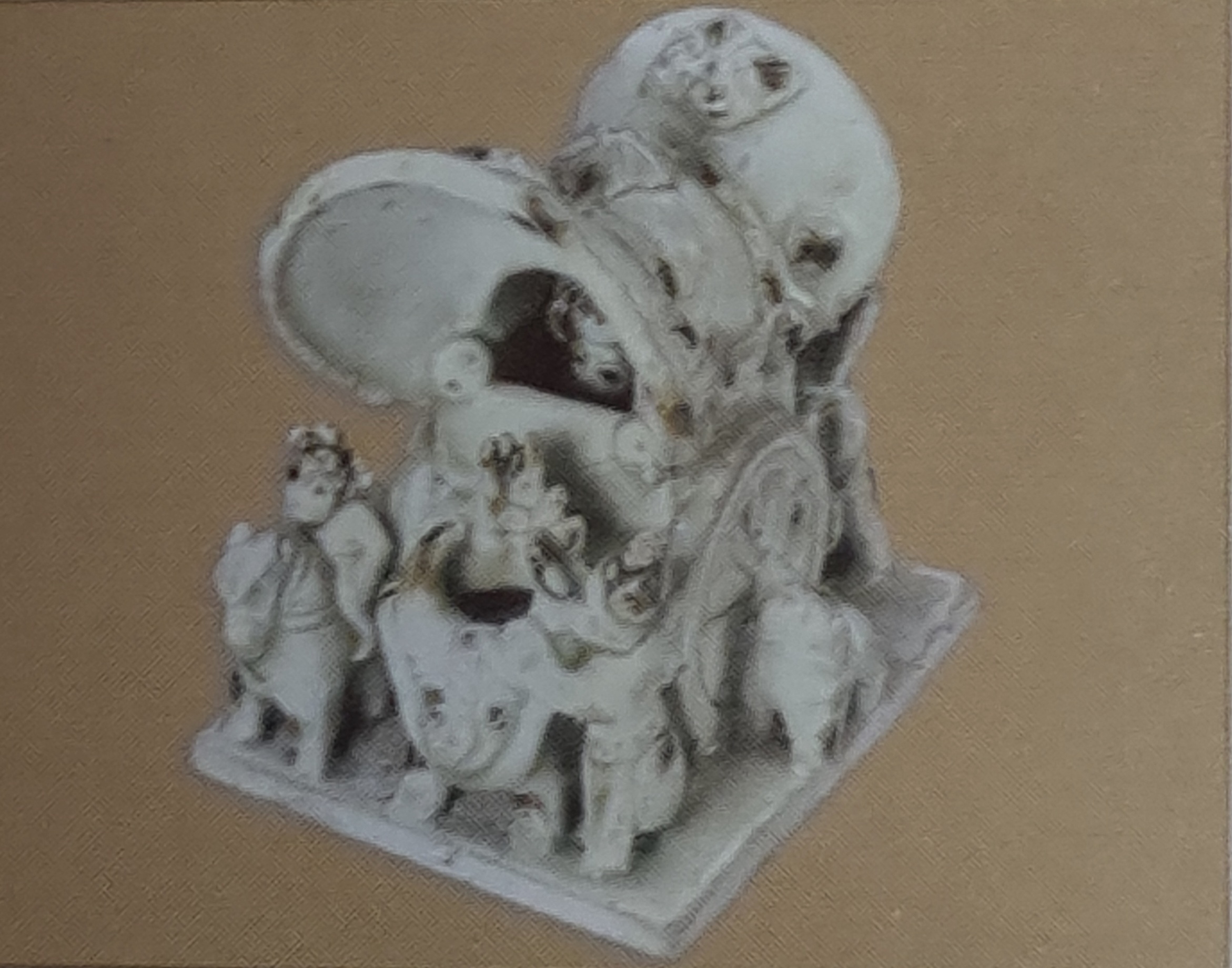 |
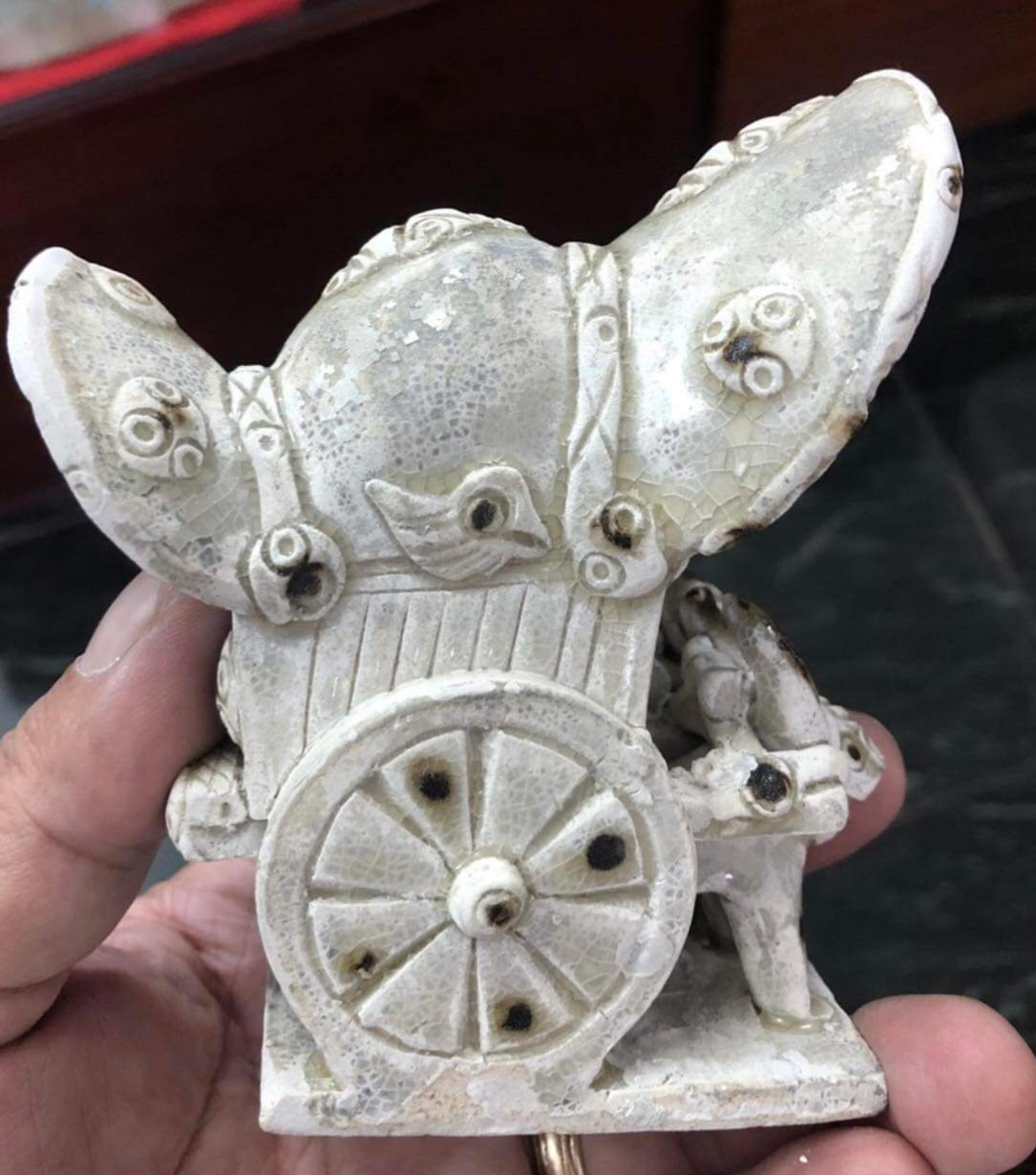 |
|
| A rare ox-driven carriage and human figures was found in Ba Ria wreck. A similar (on the right) but more elaborate piece was found in Yangzhou in 1992. | |
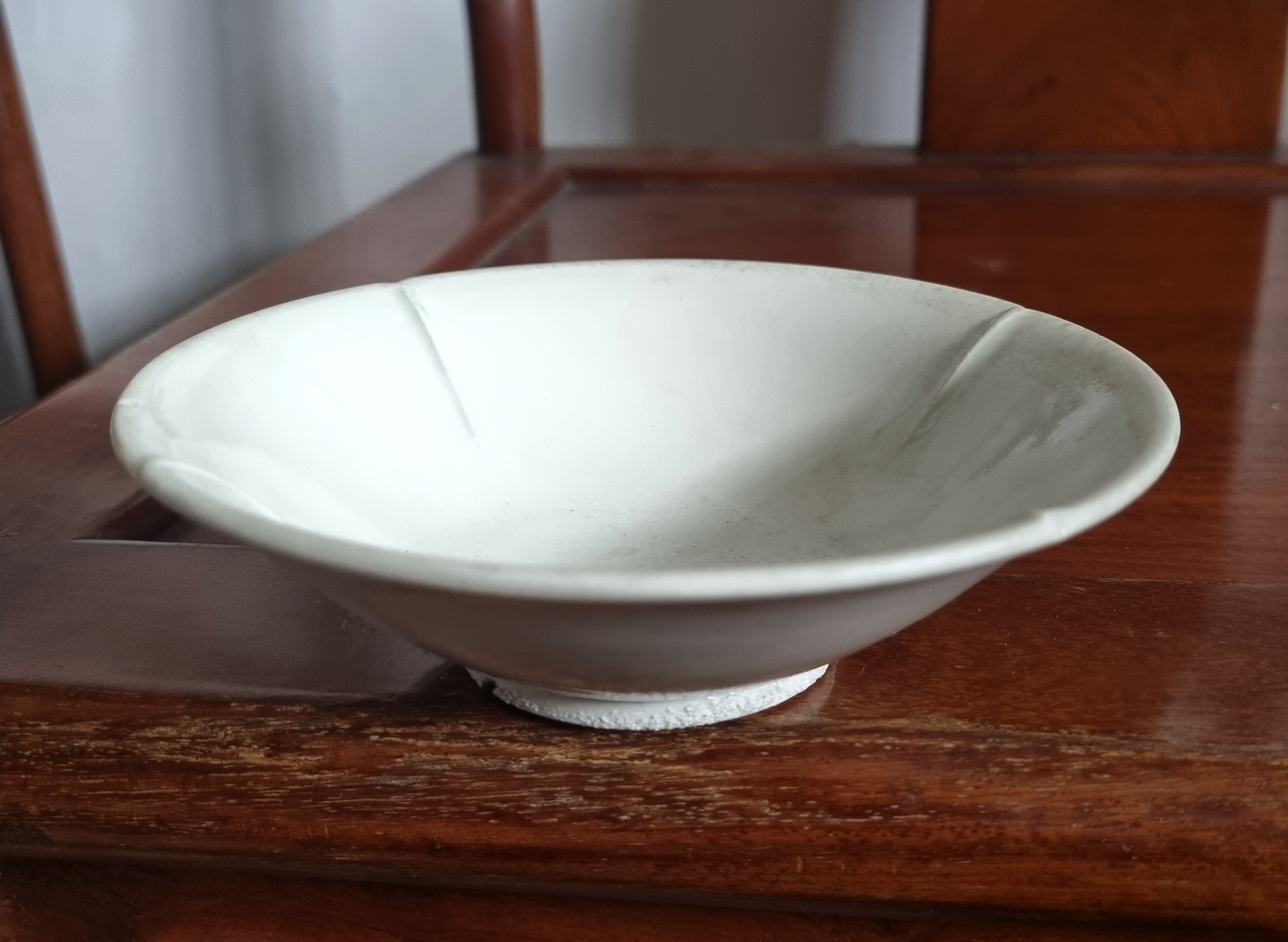 |
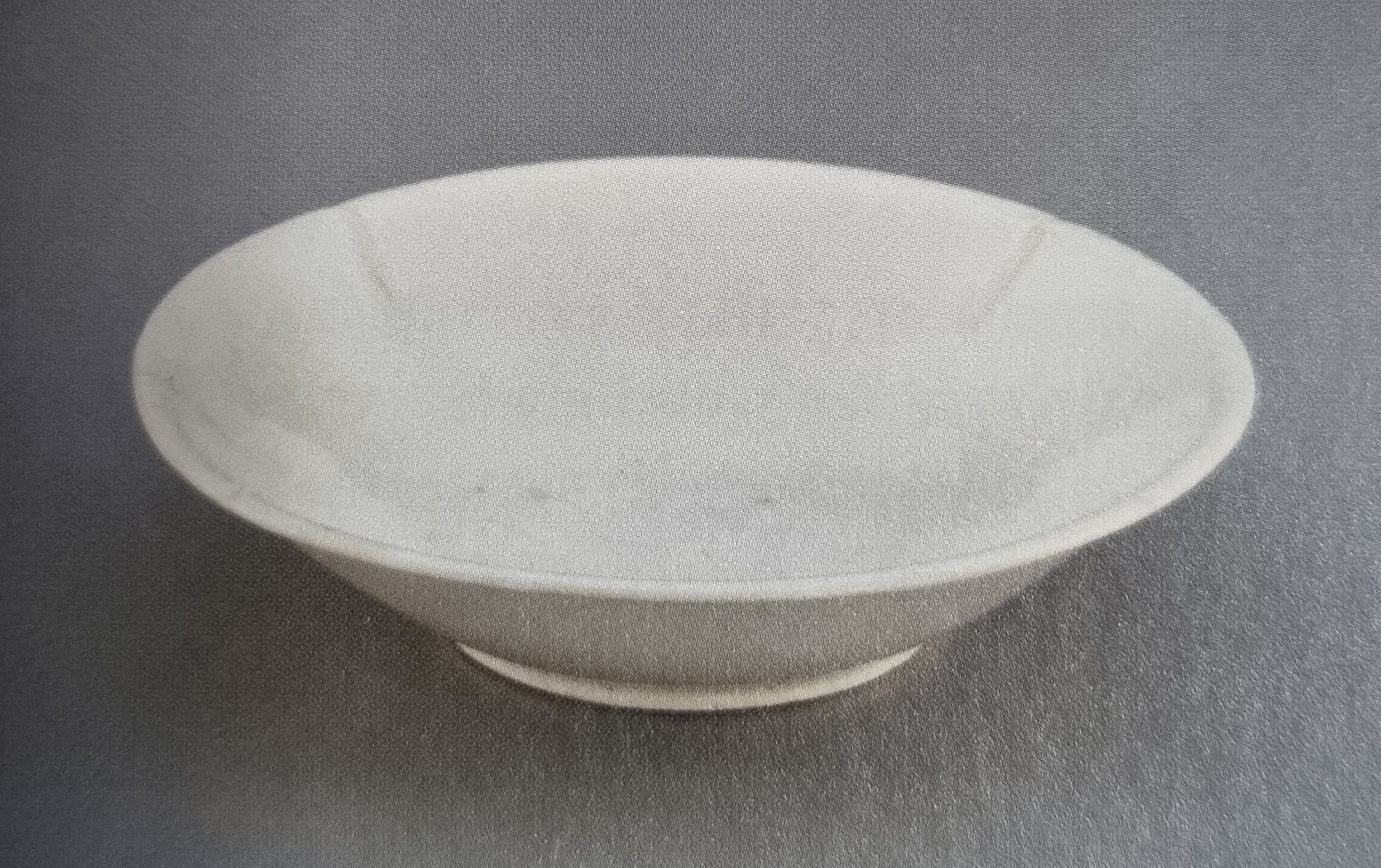 |
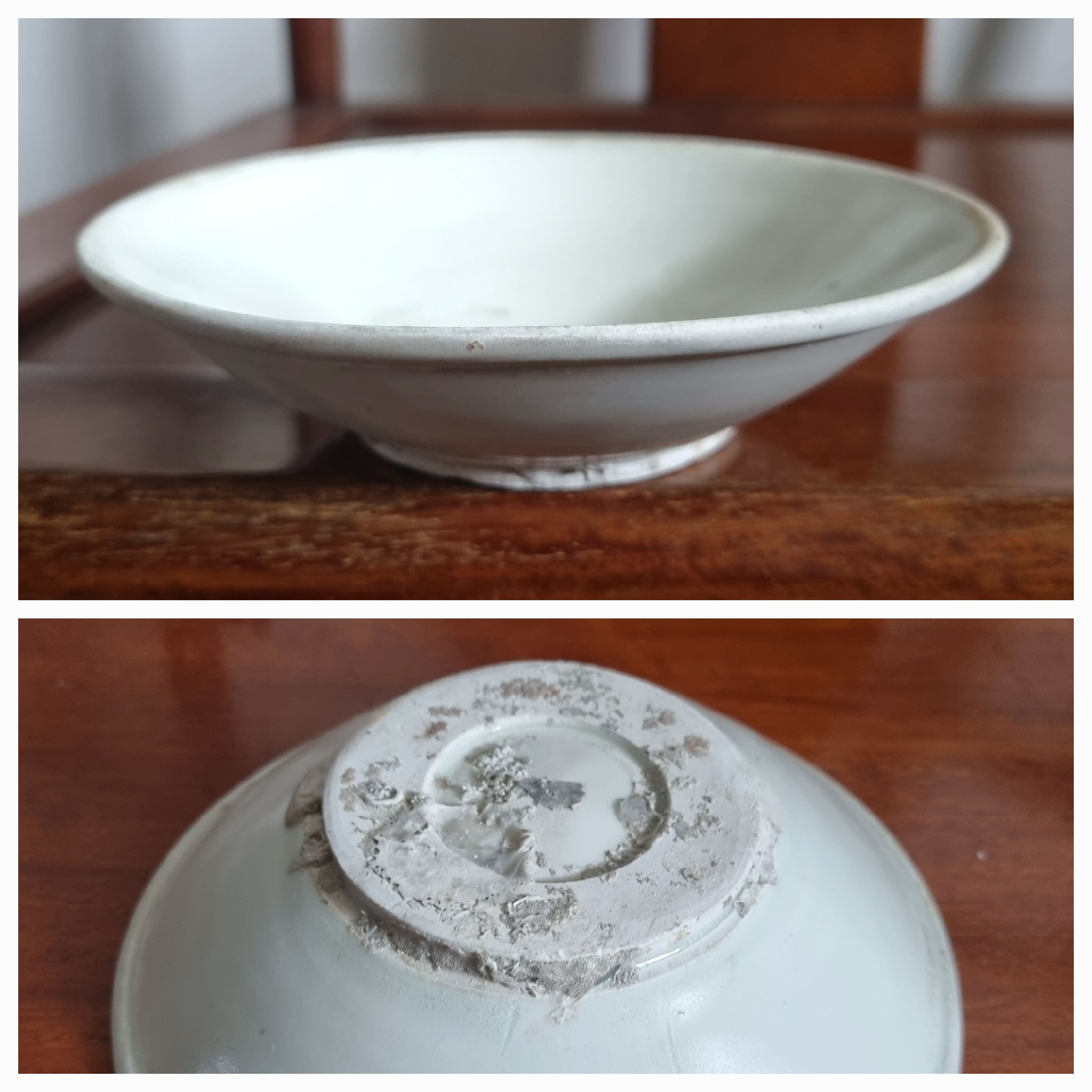 |
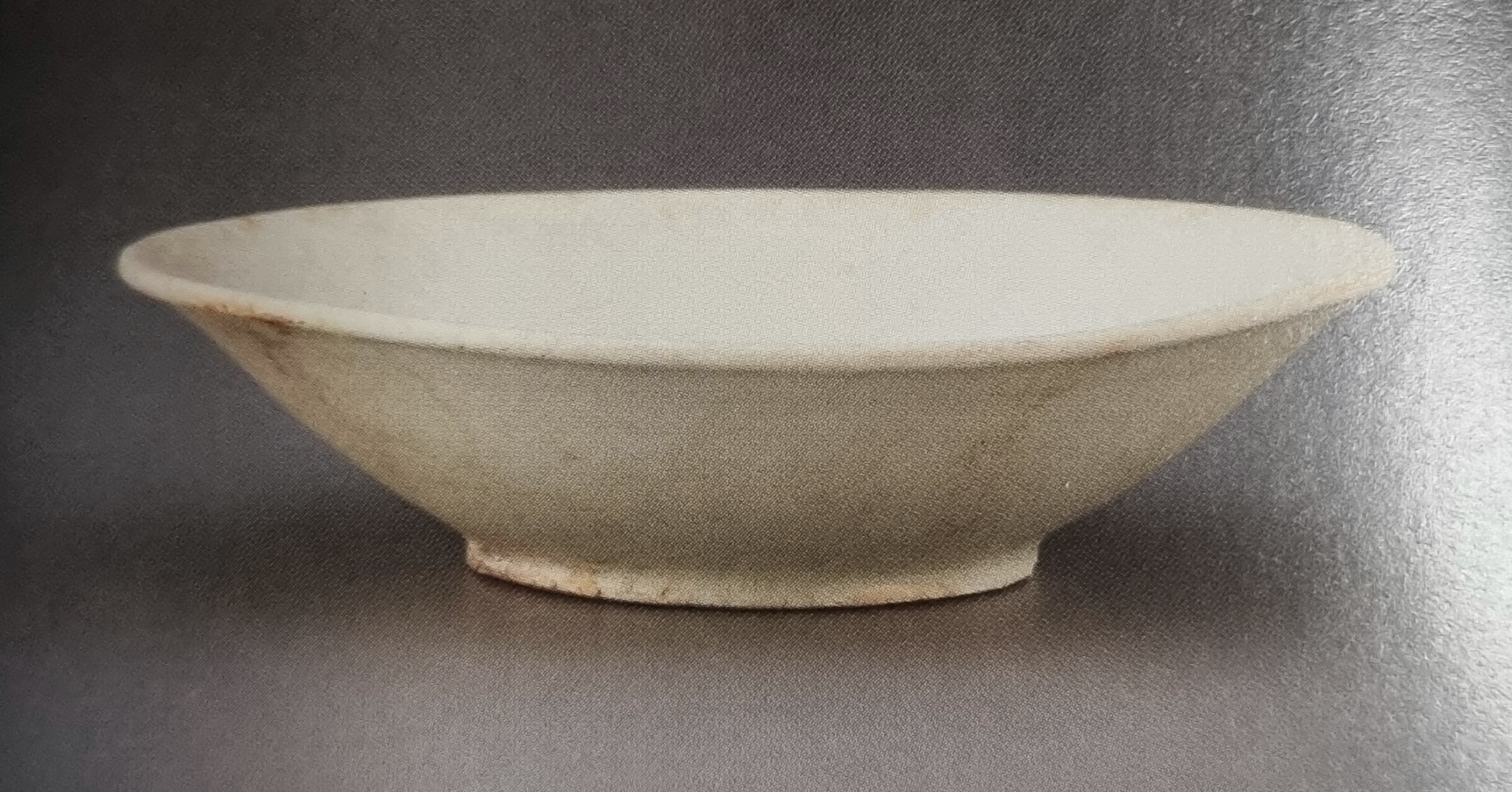 |
| Comparable white glaze bowls from the Ba Ria (left) and Belitung wreck | |
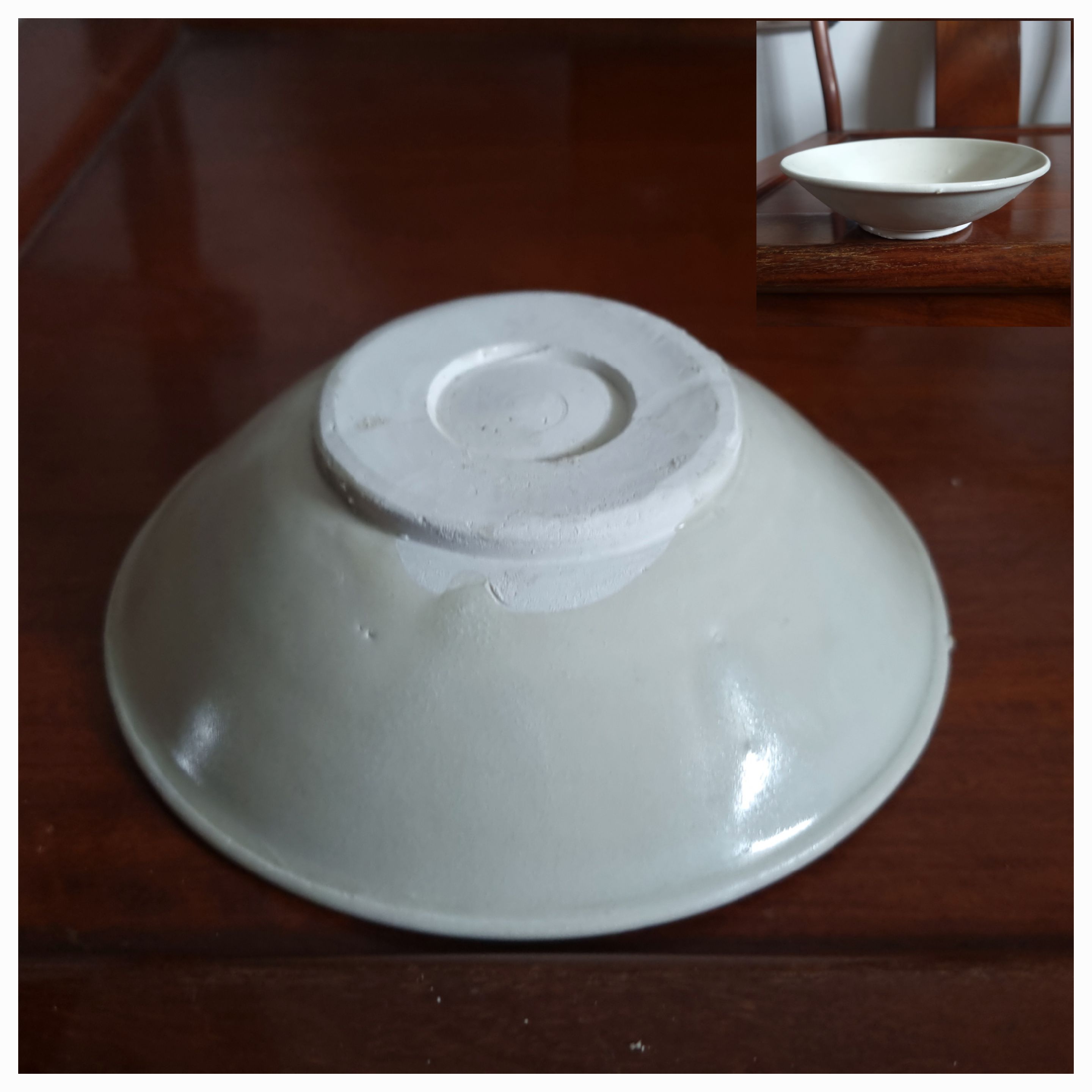 |
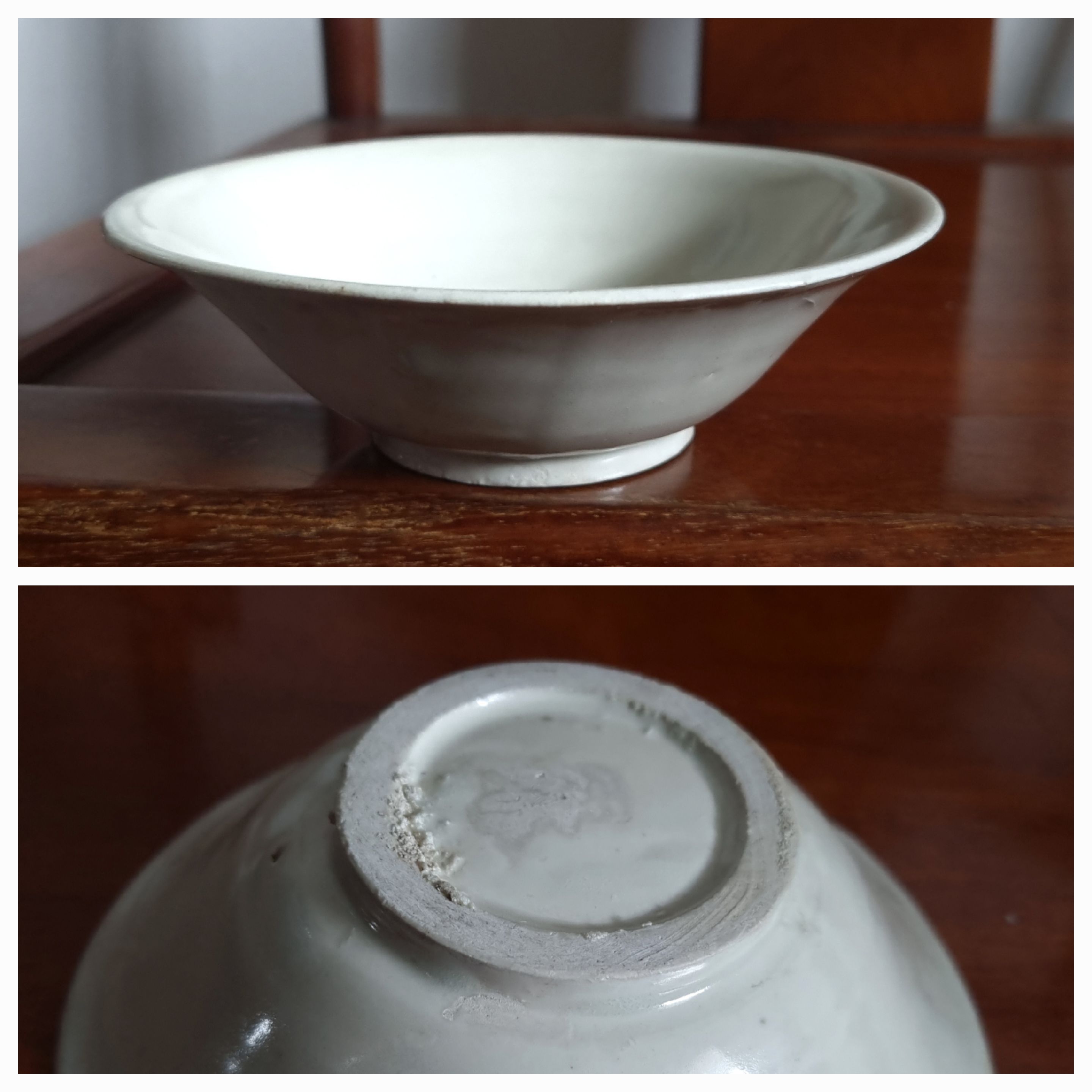 |
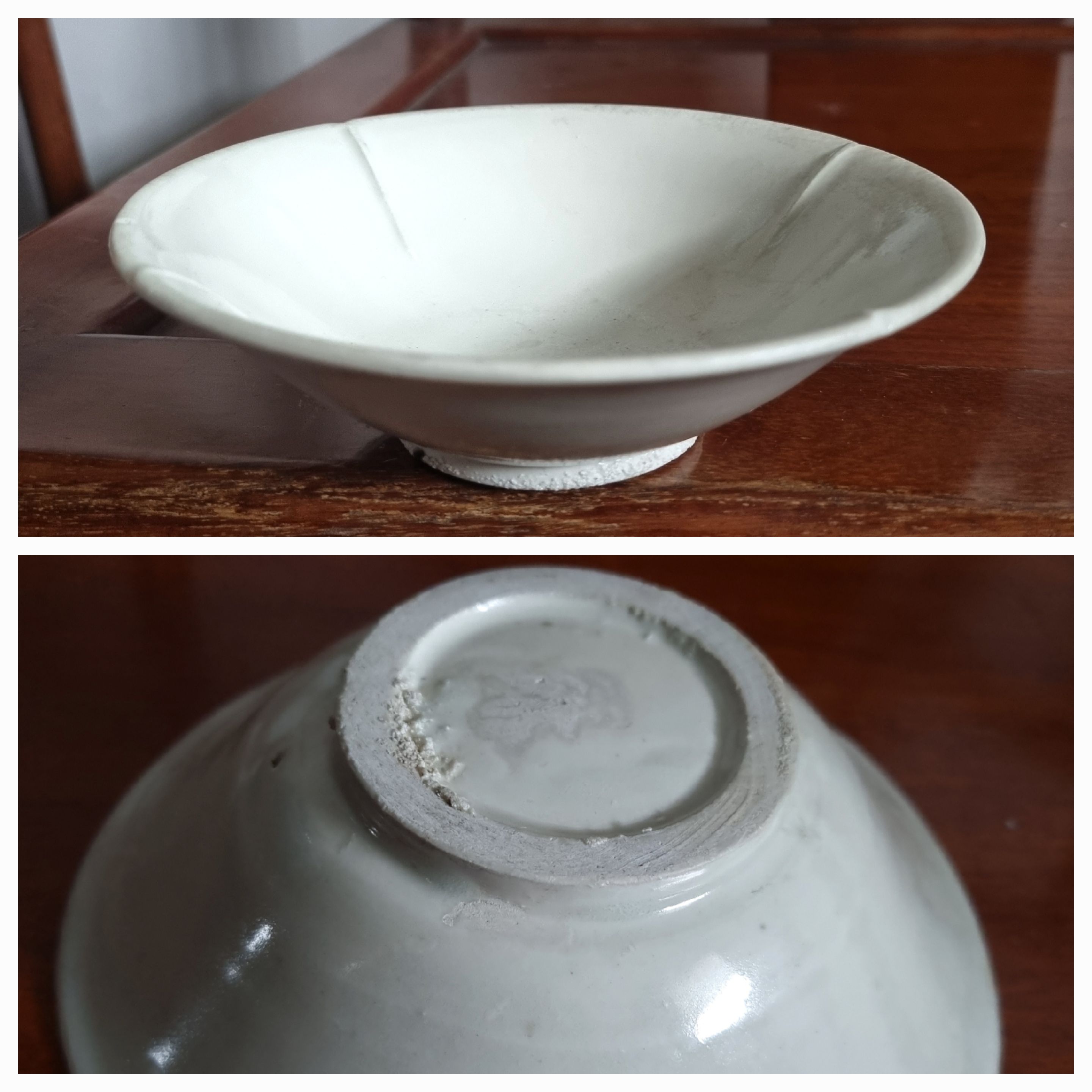 |
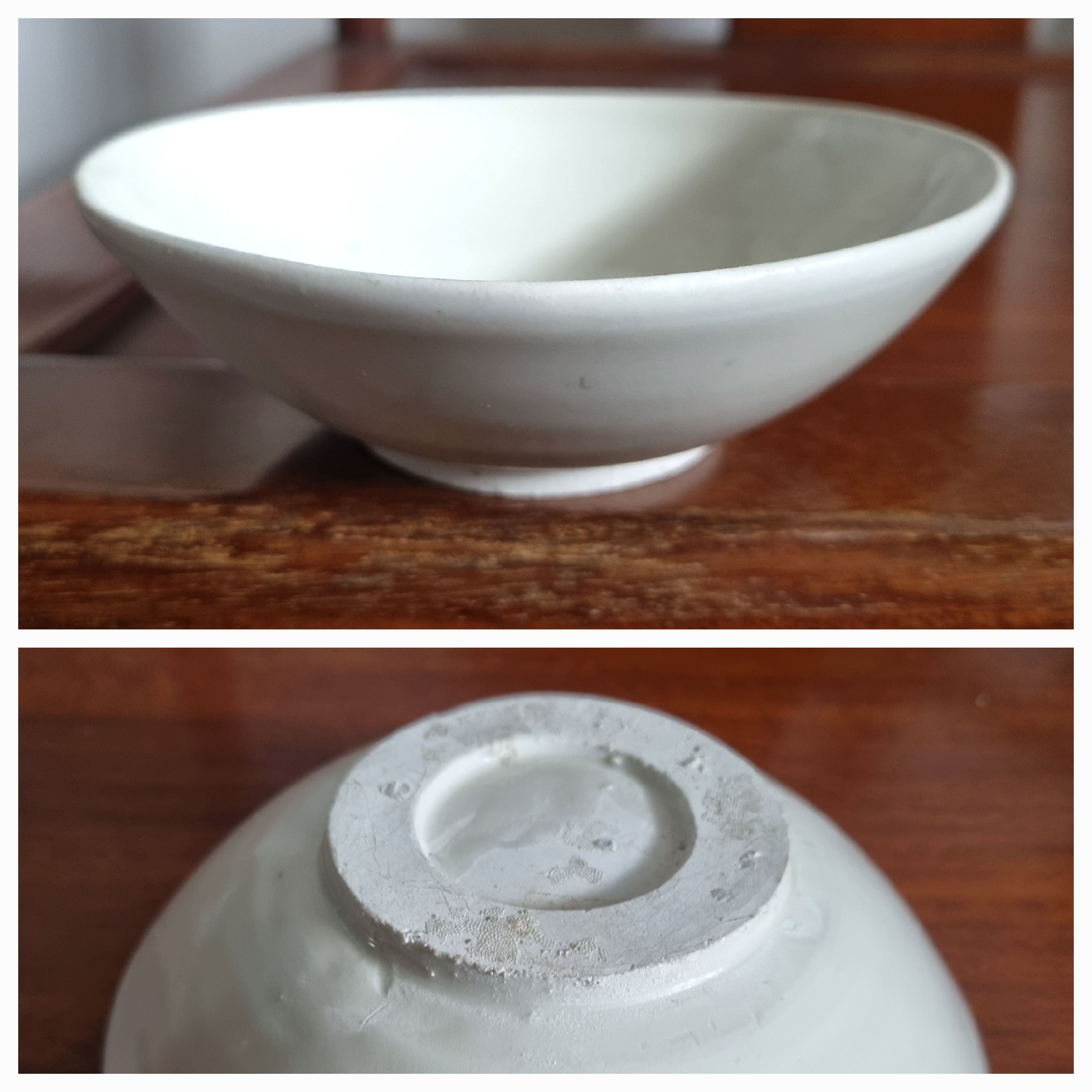 |
 |
| The above types of bowl especially those with the folded rim constituted the bulk of white wares from the Ba Ria Wreck. |
4. Lead-Glazed Wares with Islamic Influence
- Both wrecks carried lead-glazed vessels with green/amber
splashes and lobed rims inspired by West Asian metalwork. Ba Ria examples, including an oval cup with impressed
fish motifs, closely resemble Jingxing kiln (Hebei)
products and some examplles from Iran’s Siraf site.
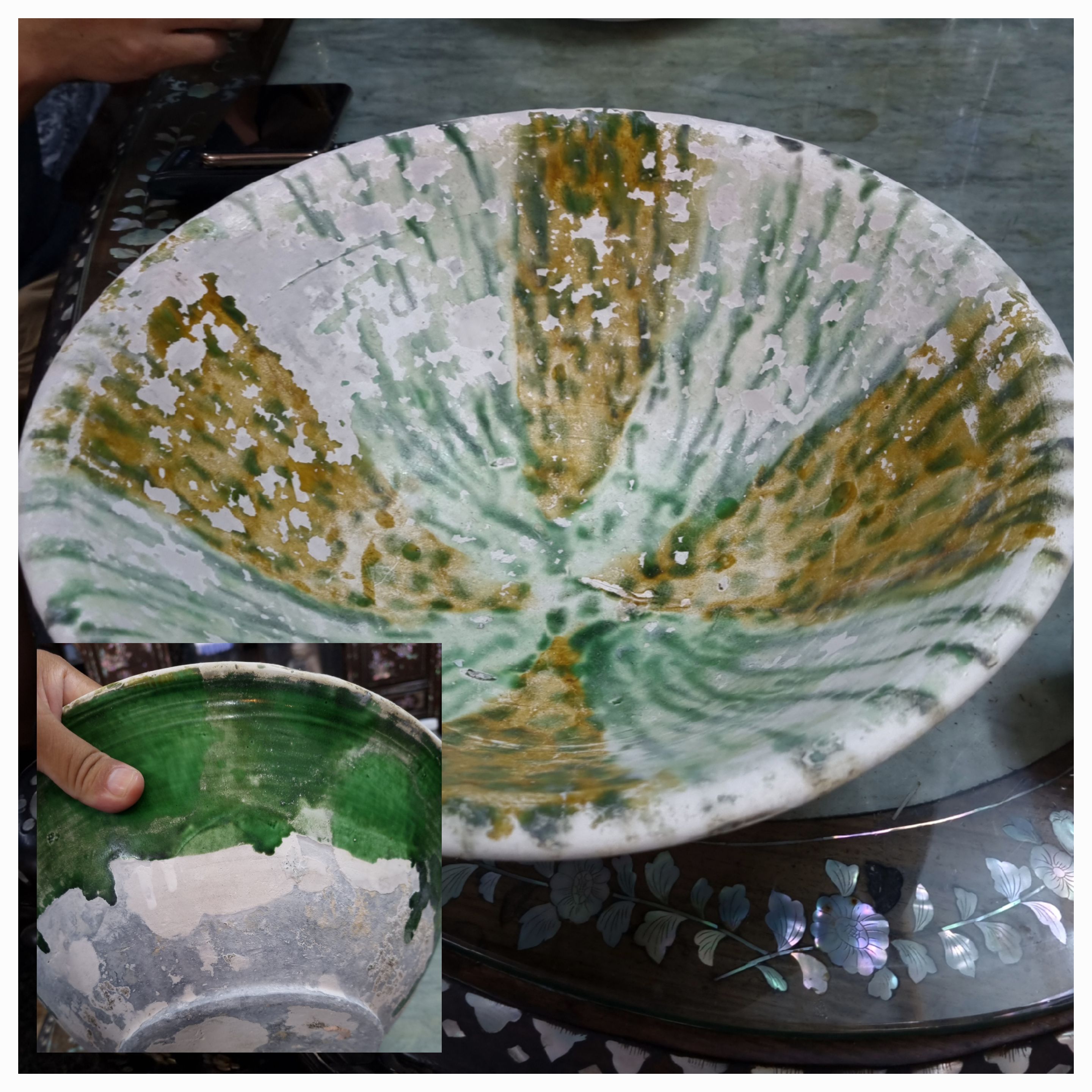 |
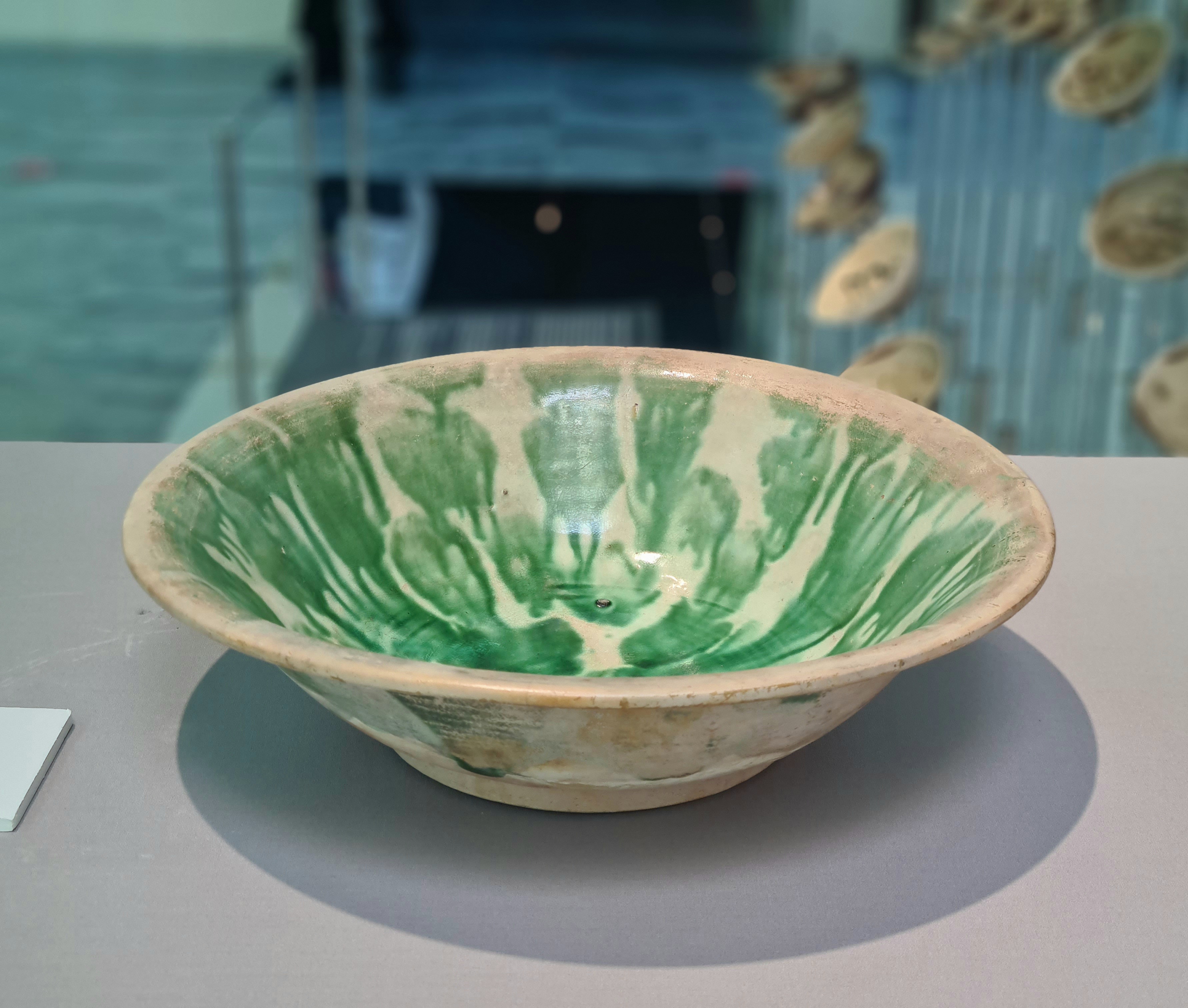 |
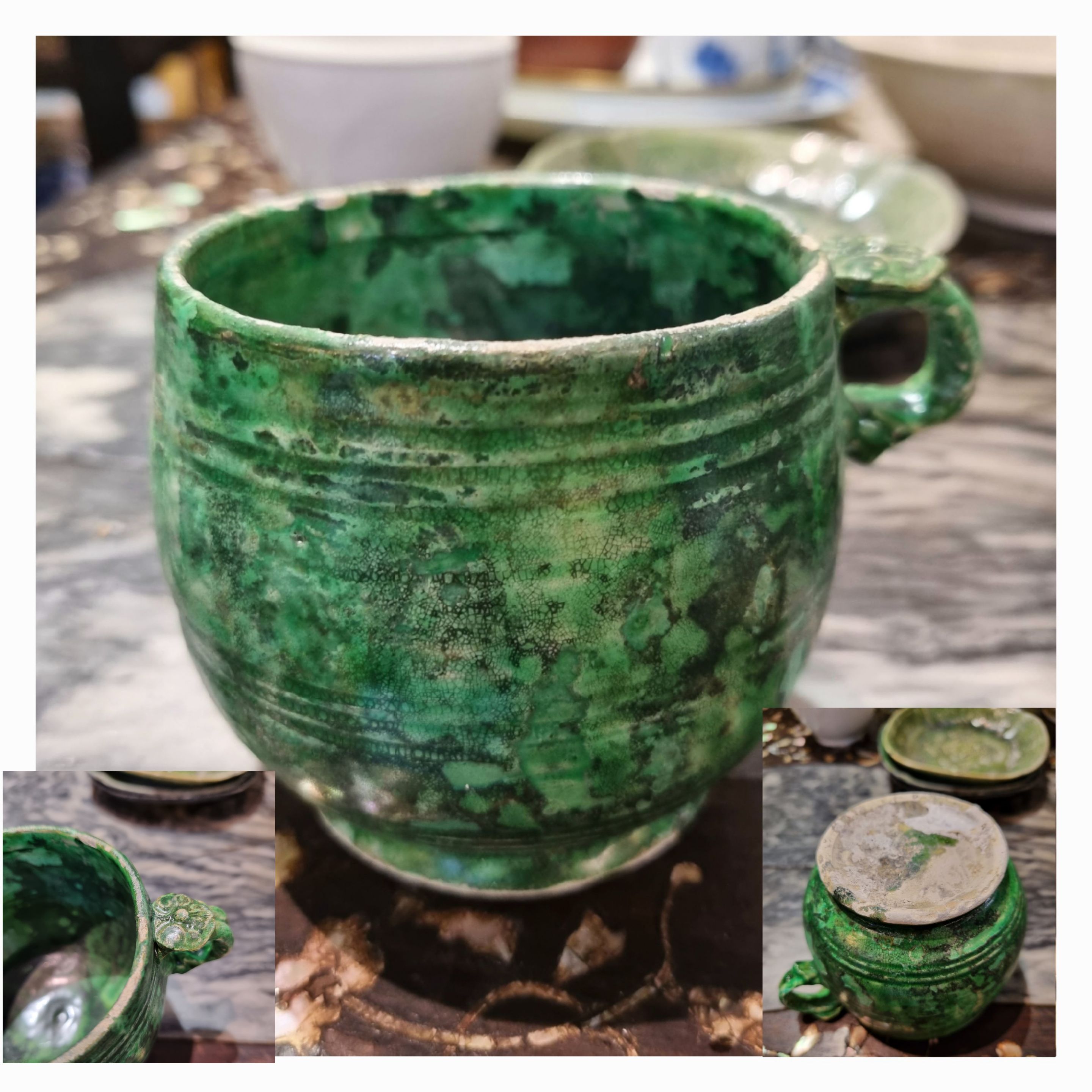 |
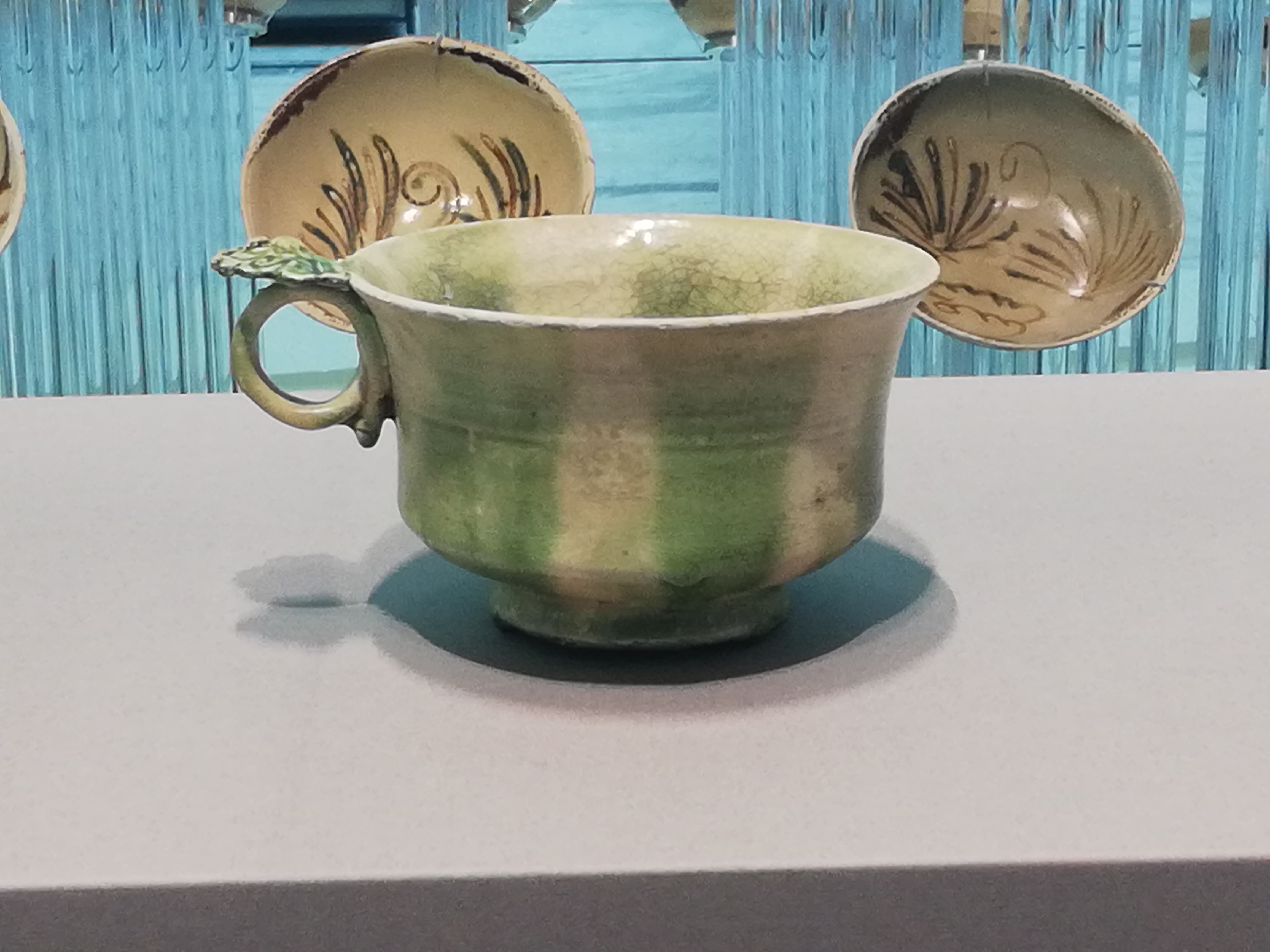 |
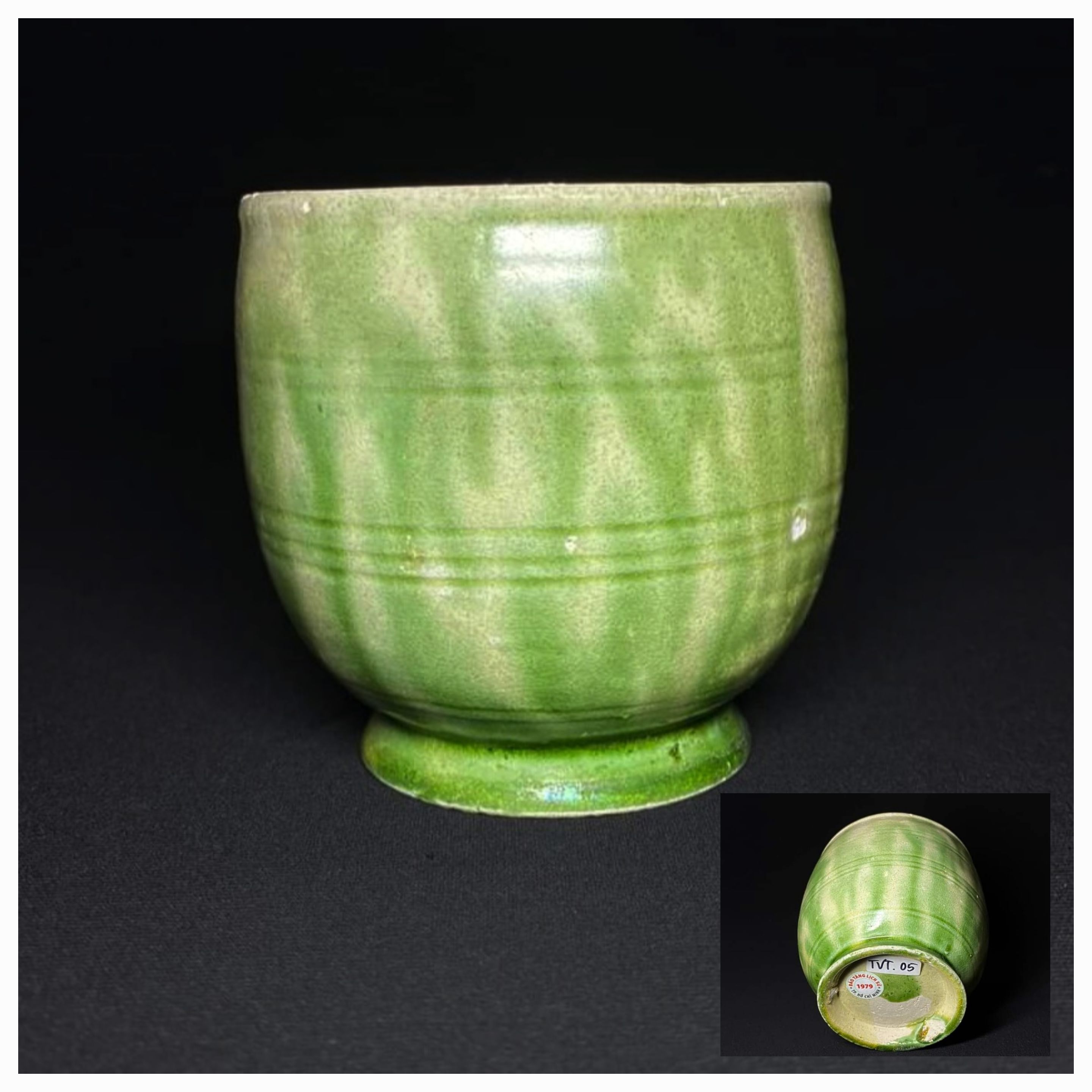 |
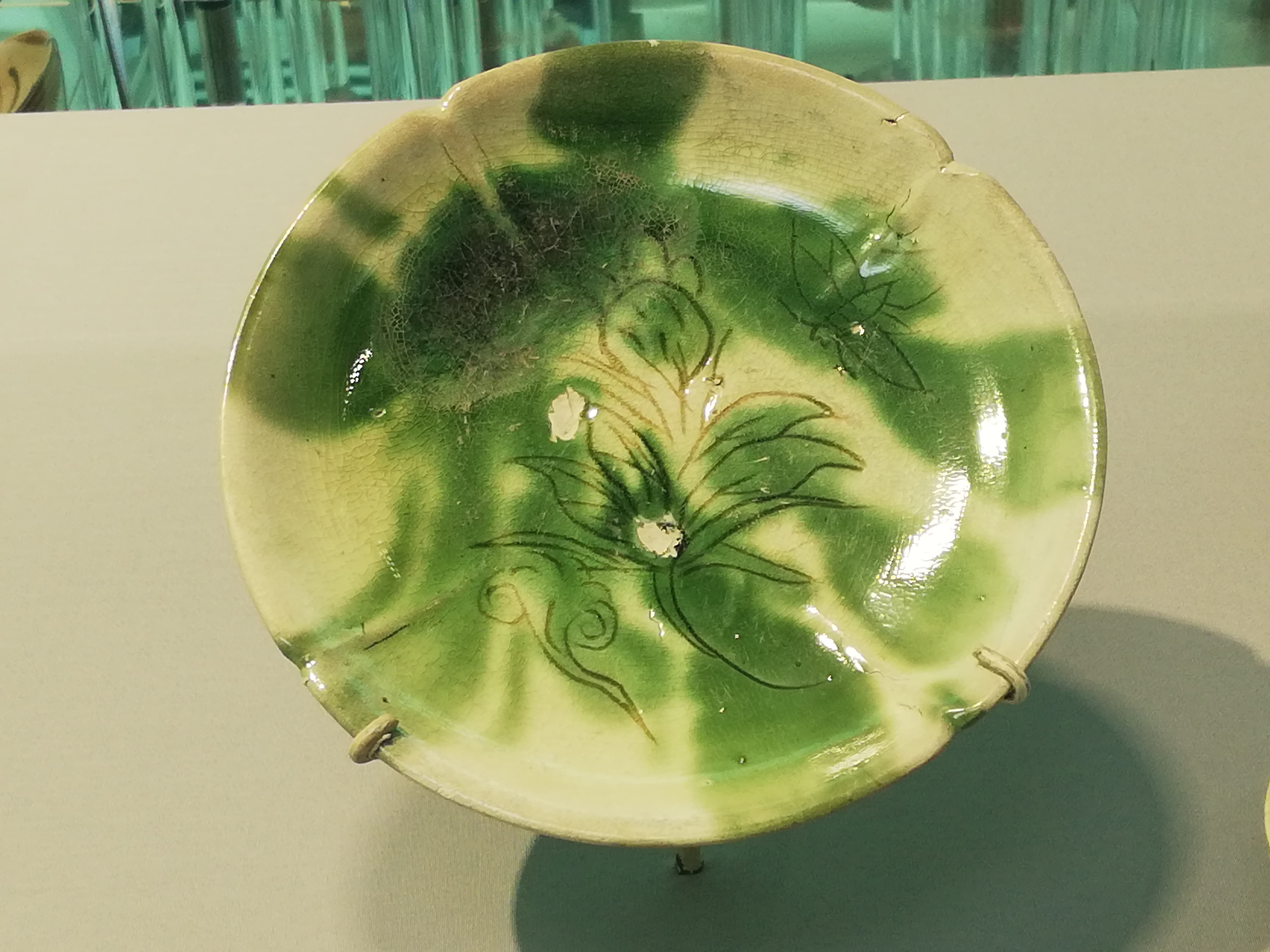 |
 |
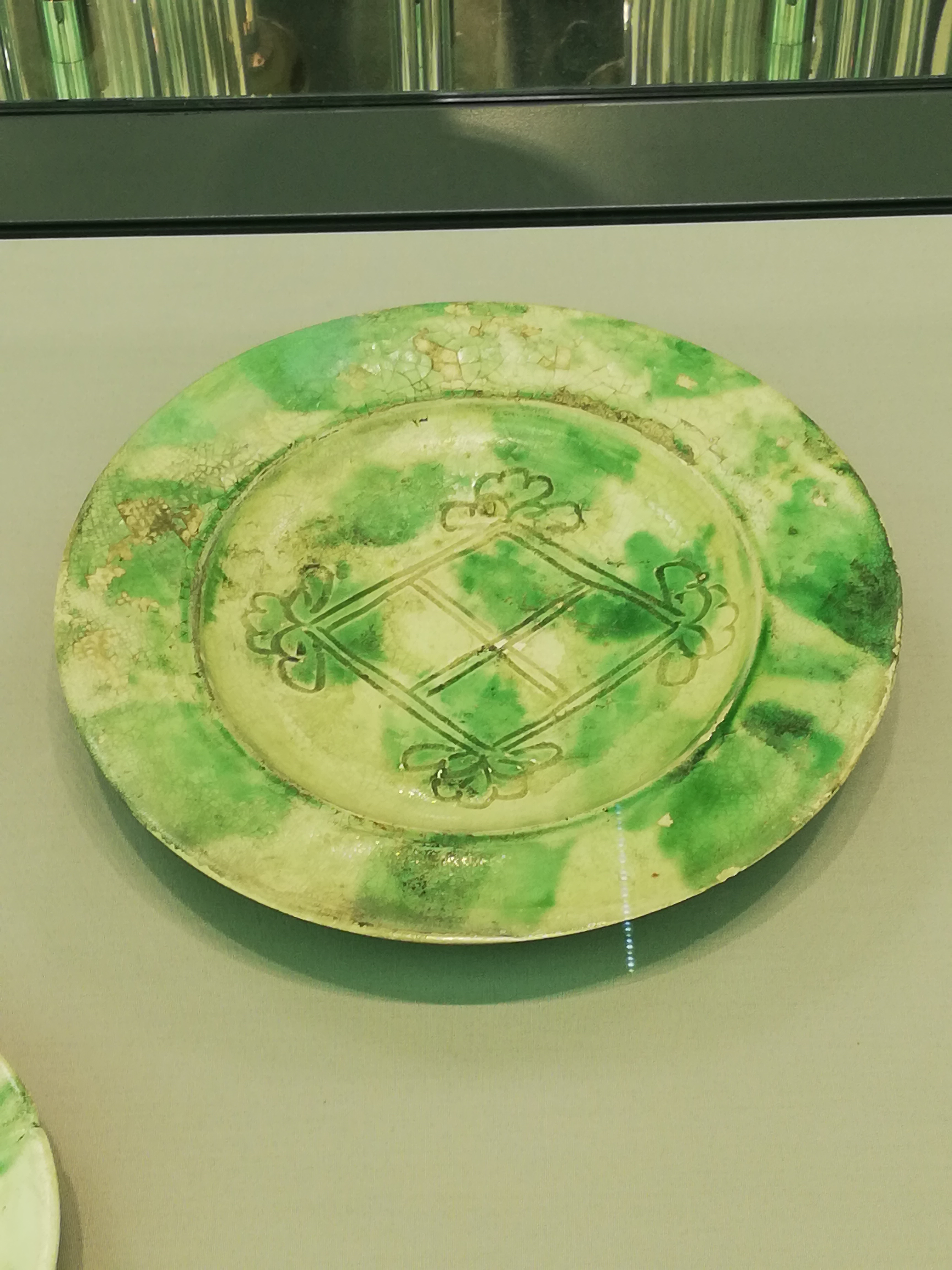 |
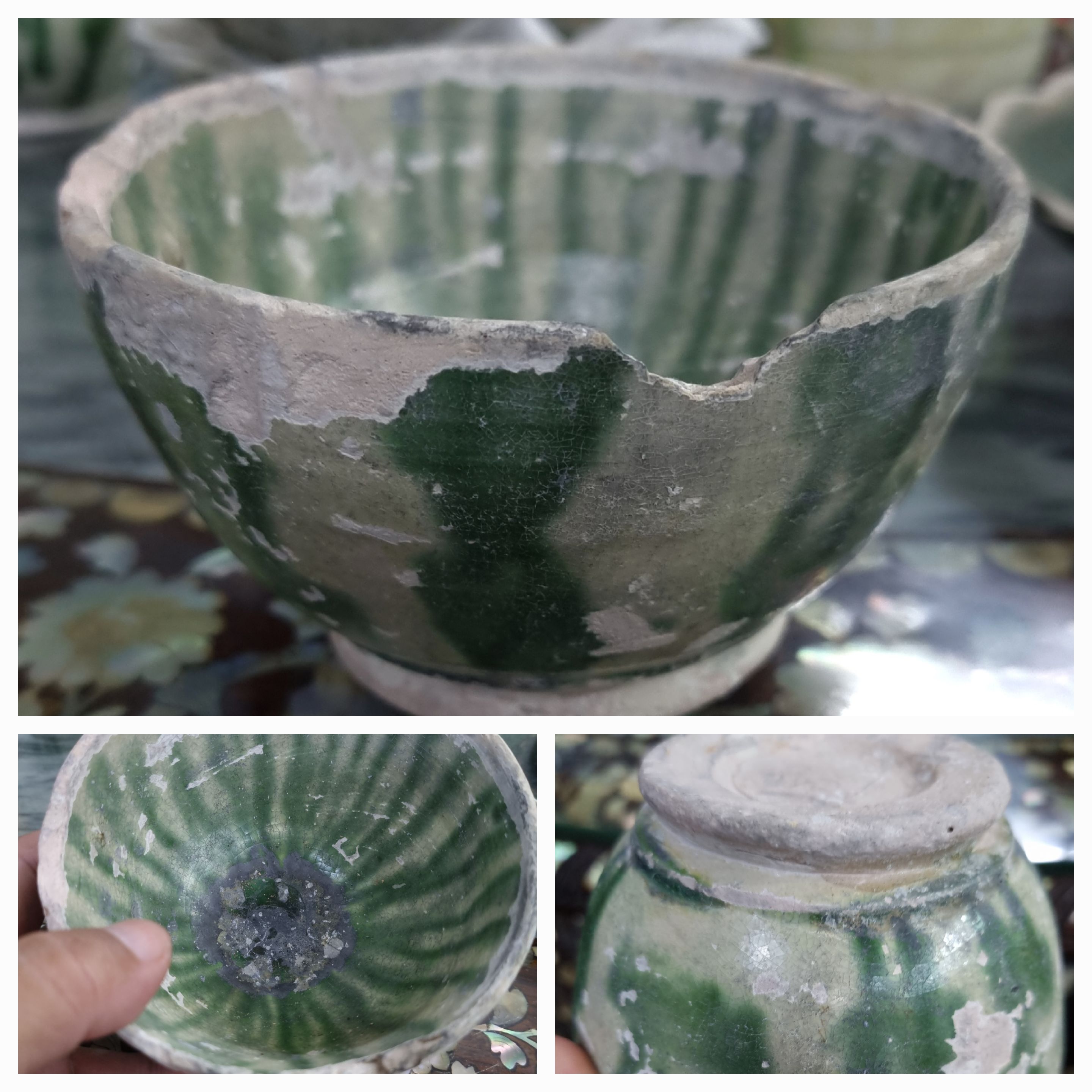 |
|
| Comparison of wares with green/amber splashes from Ba Ria (left) and Belitung wreck. | |
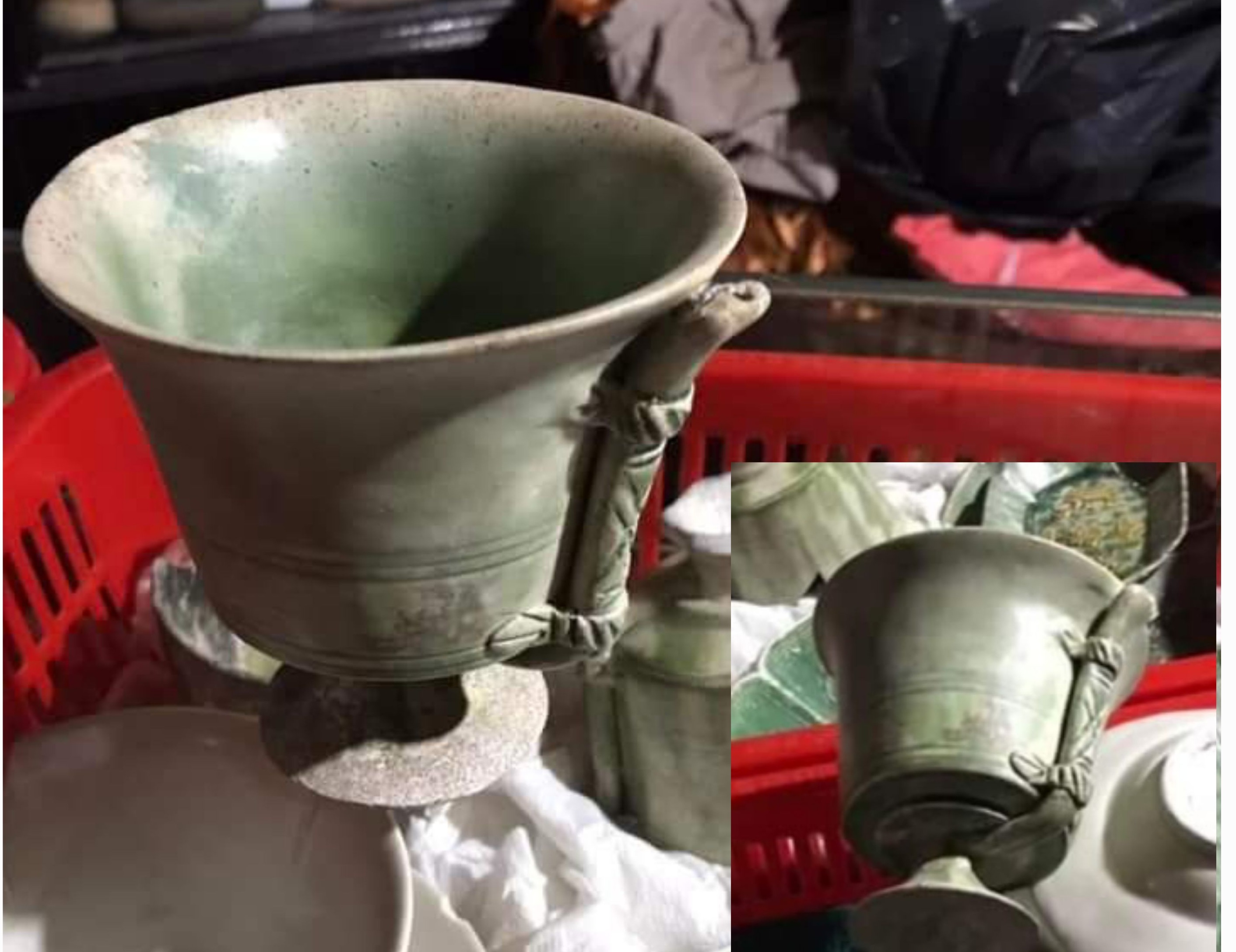 |
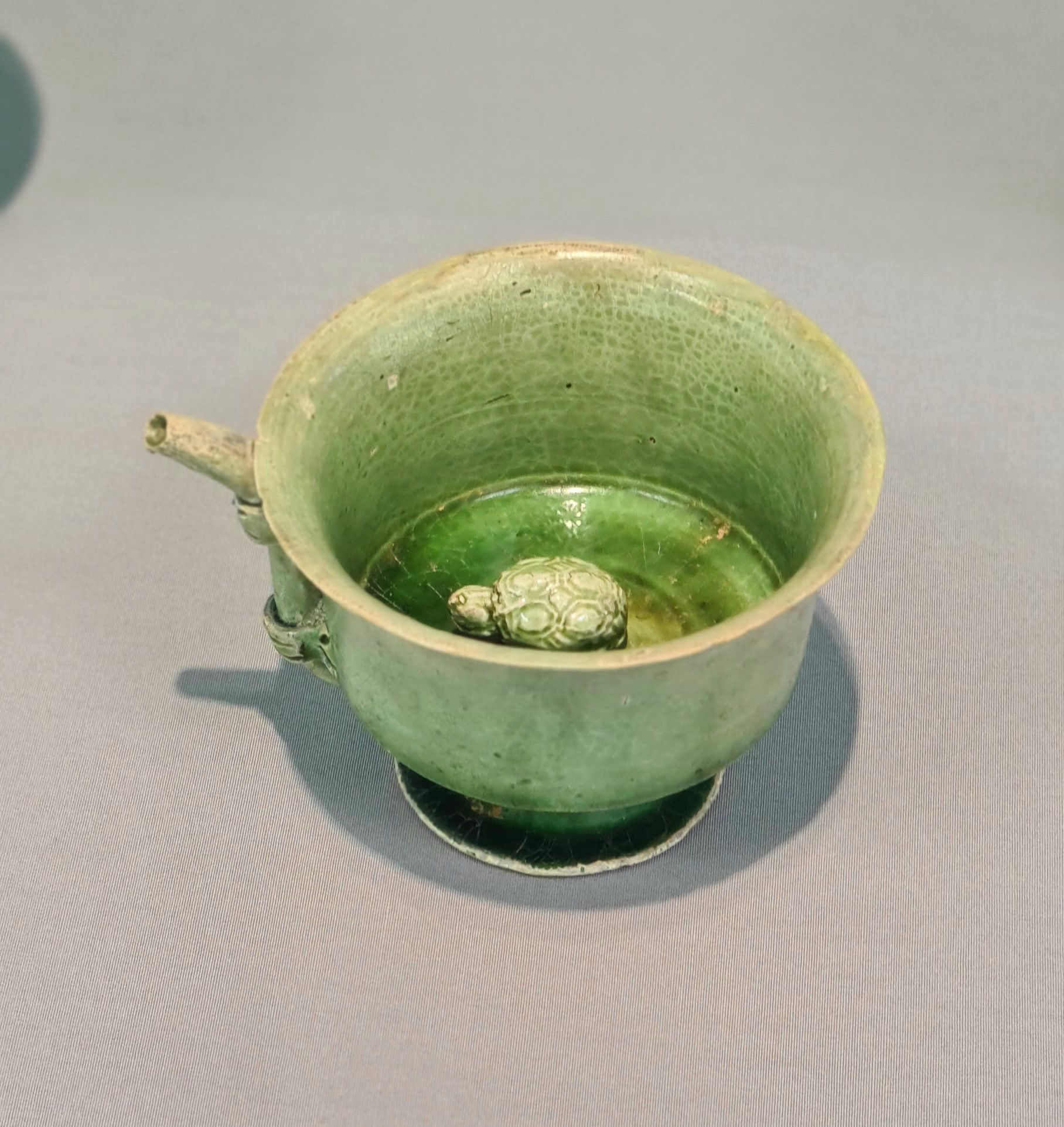 |
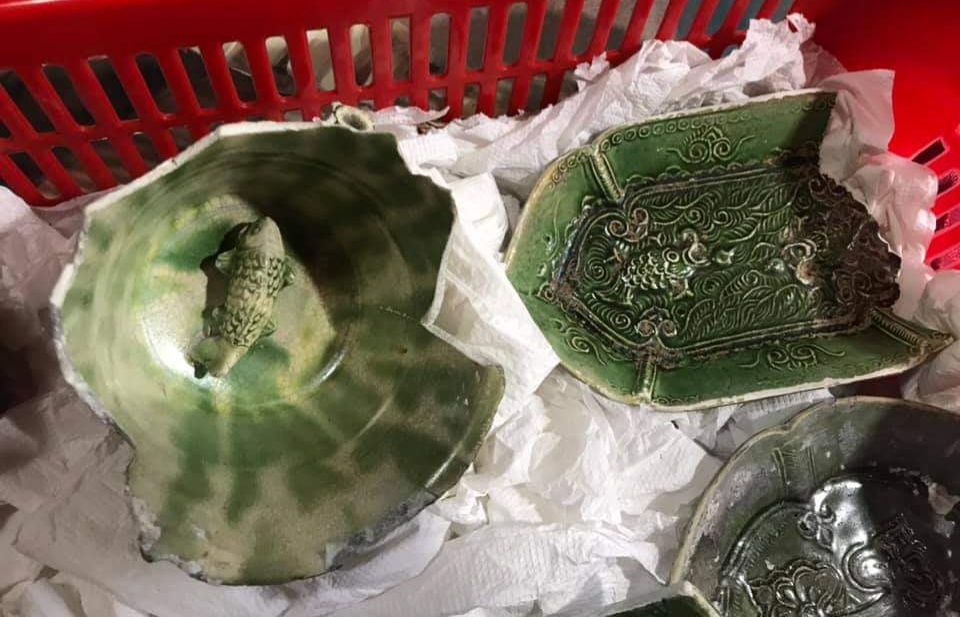 |
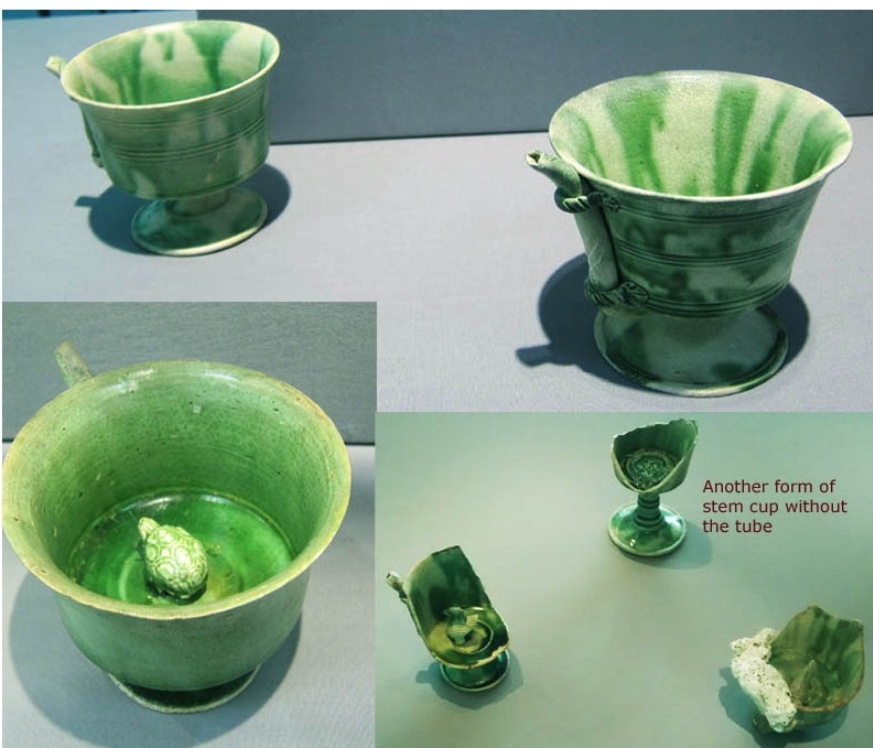 |
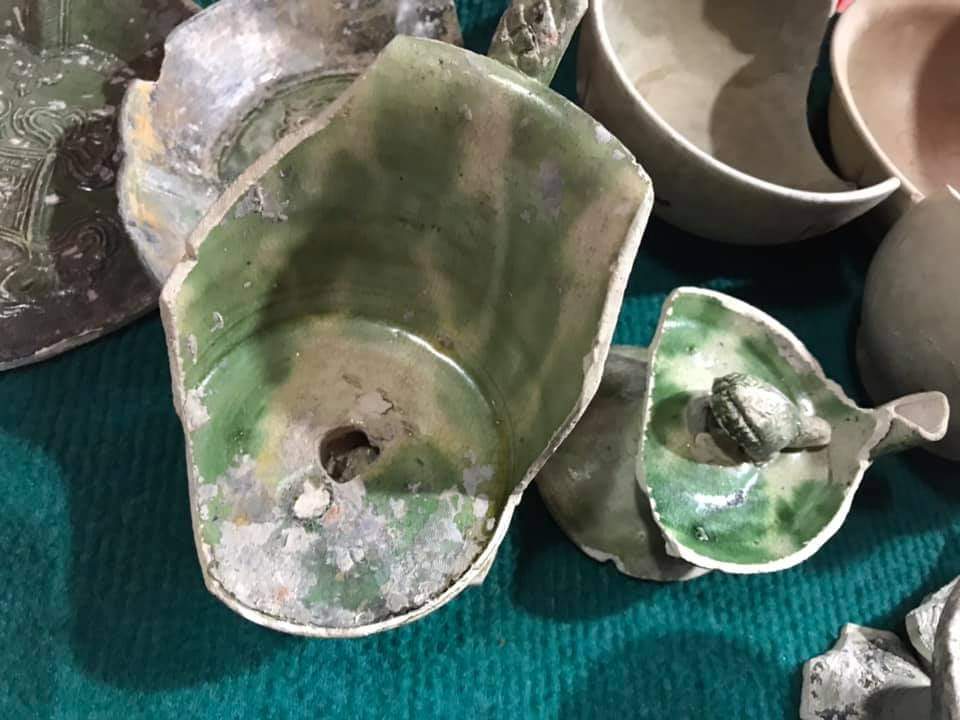 |
| Both the Ba Ria (left) and Belitung wreck carried stem cups that as figurine such as tortoise, fish or duck on the interior. The cup has a tube which is linked to a hole just below the figurine. The drink could be imbibed through the tube. |
 |
|
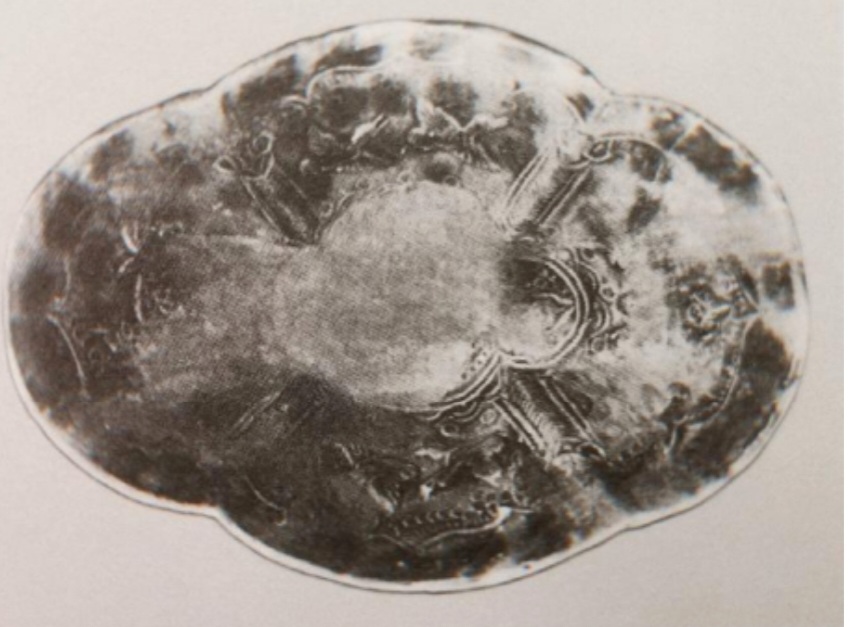 |
|
| An example found at Iran Shiraf ancient site | |
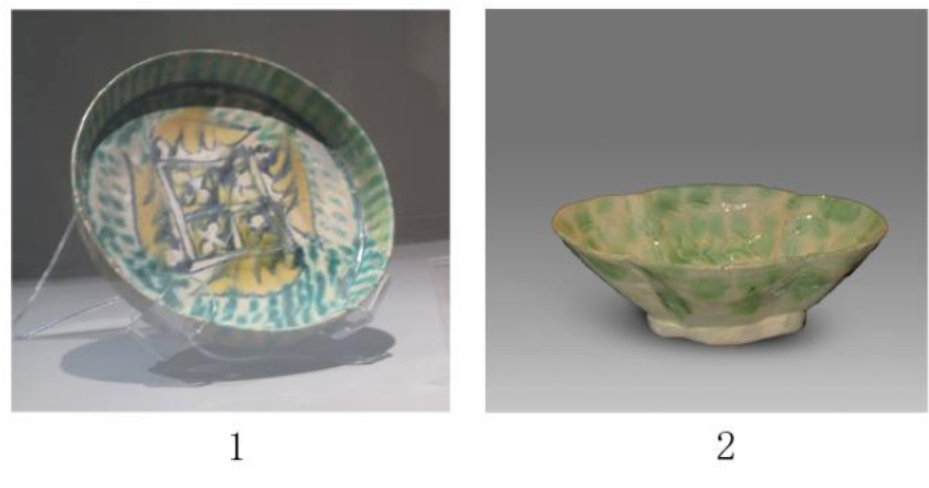 |
|
| Two 9th cent. locally produced vessels with green splashes in Iran National Museum | |
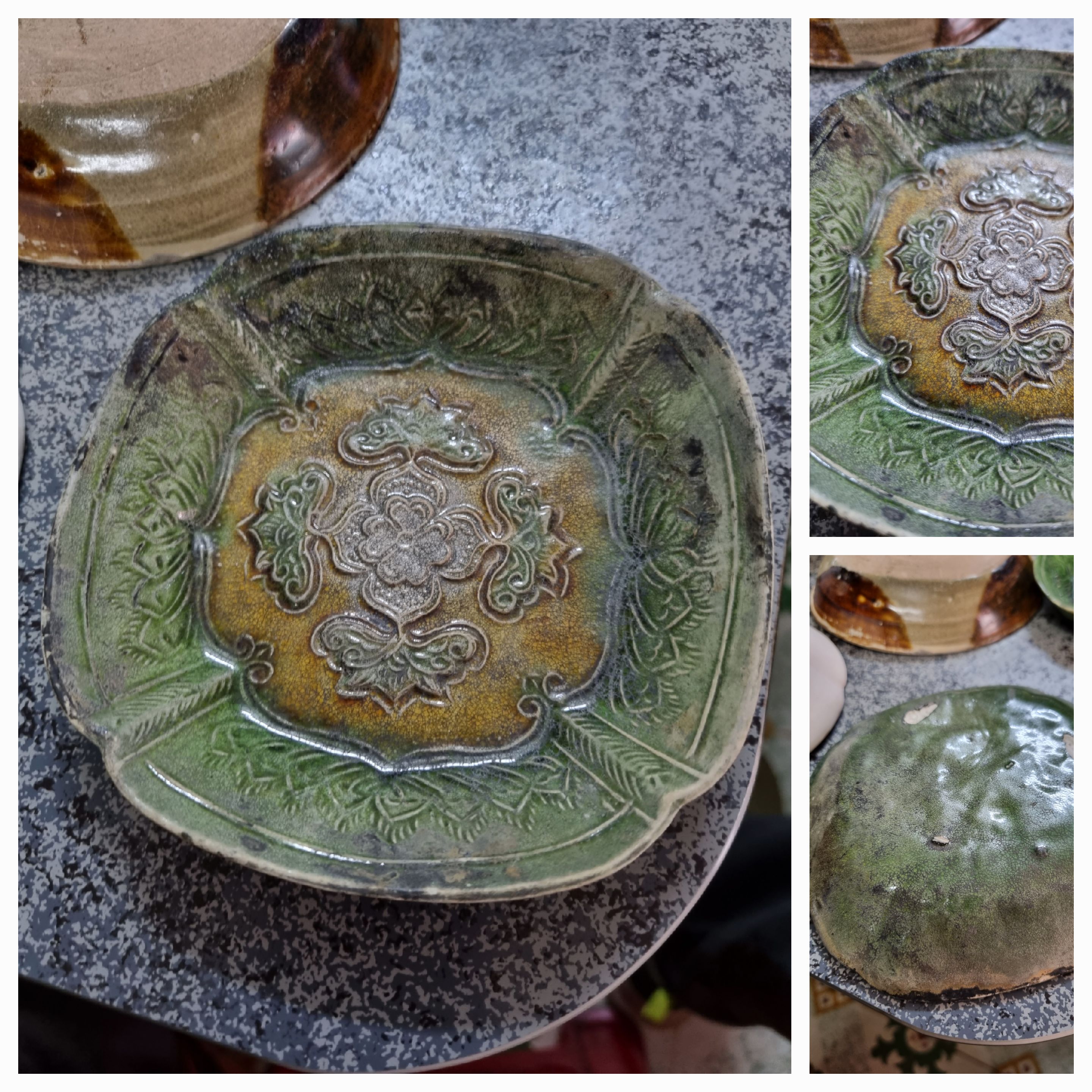 |
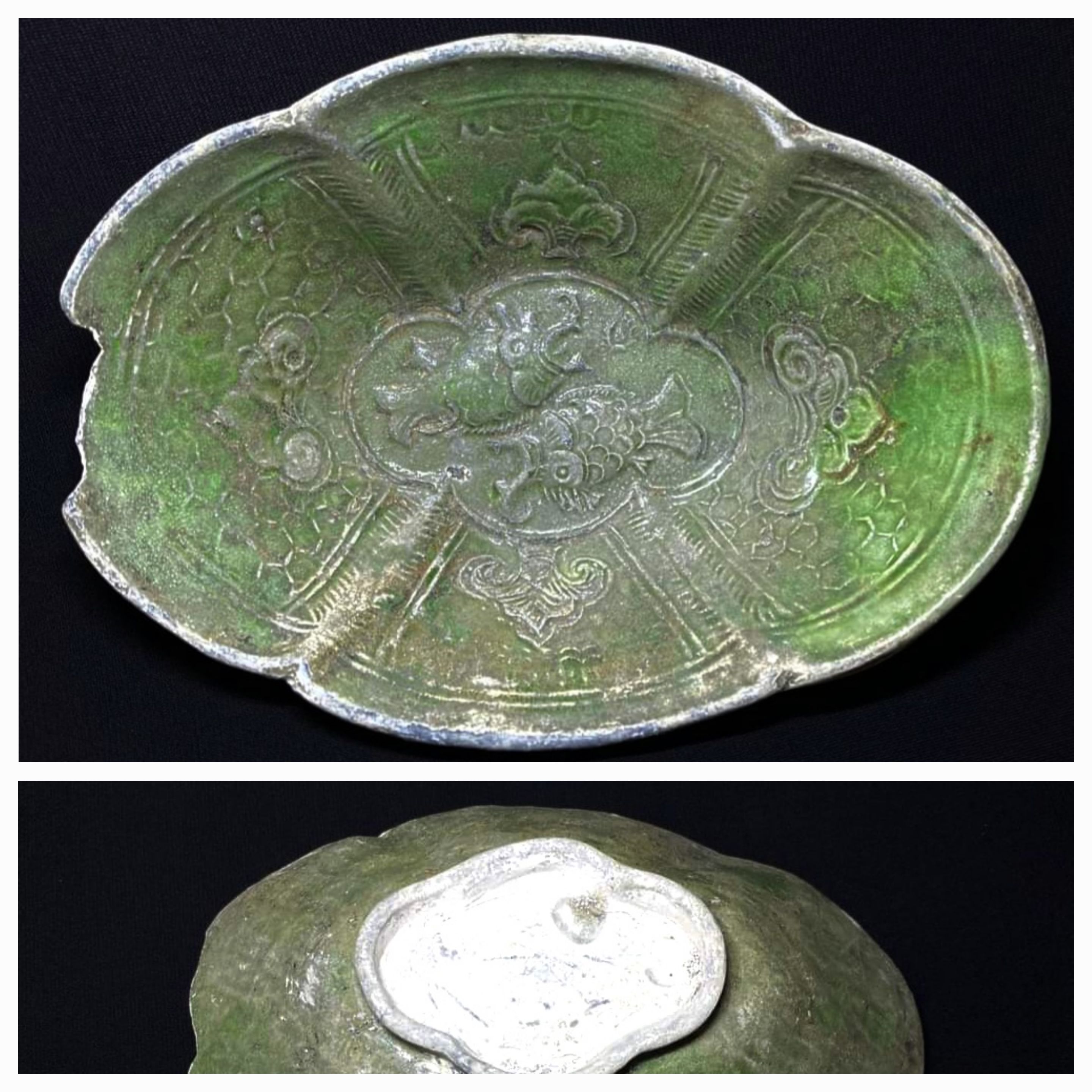 |
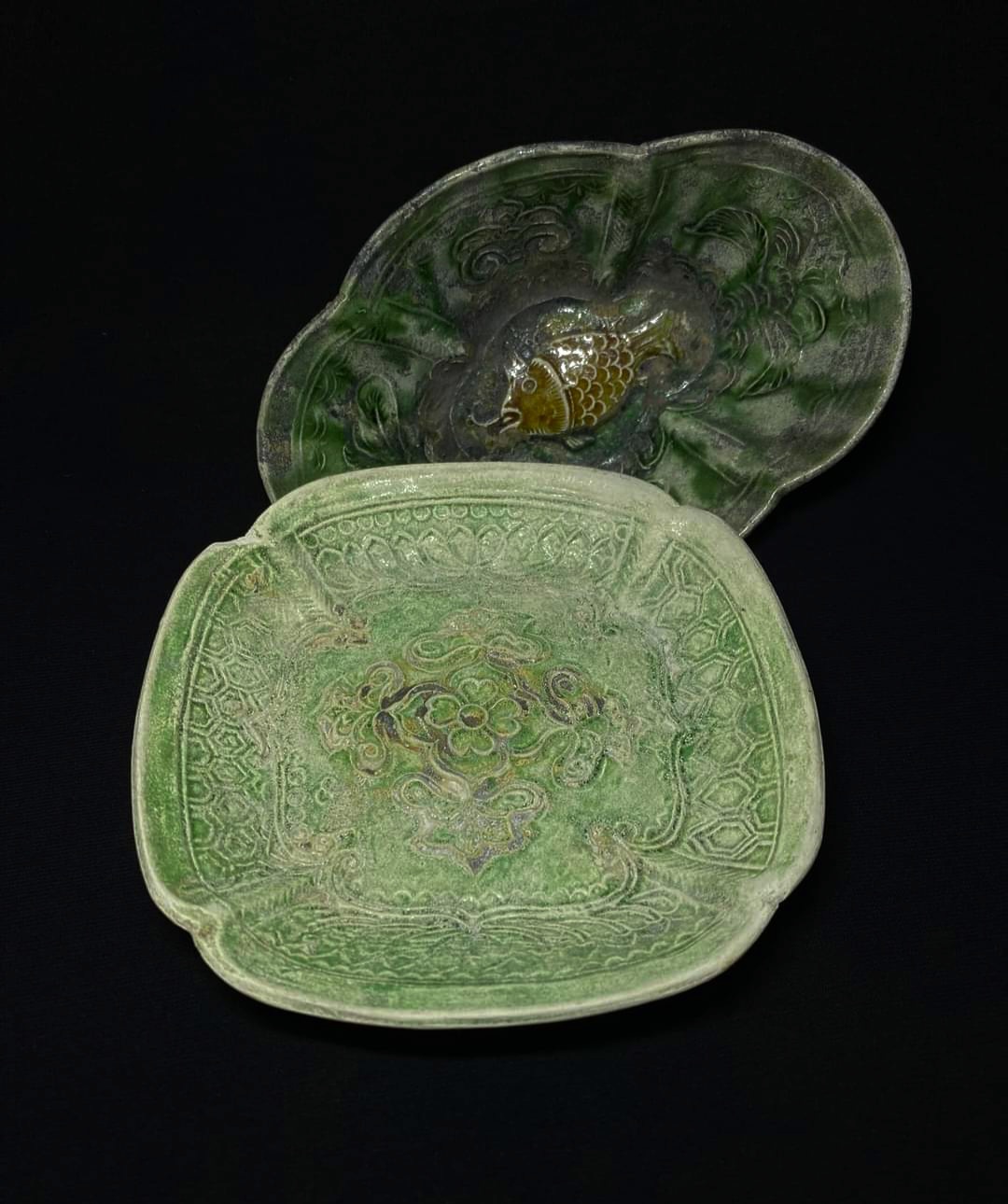 |
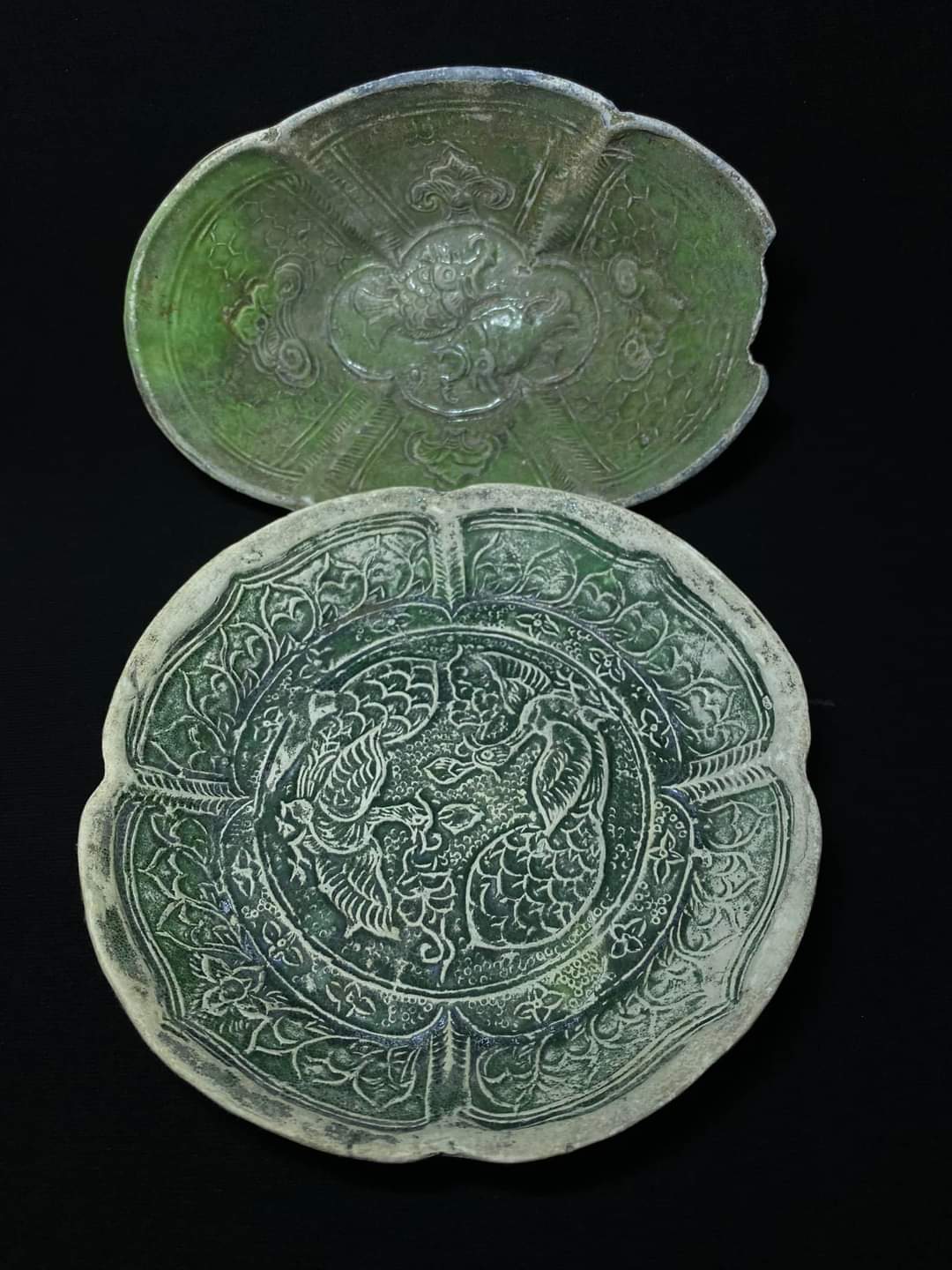 |
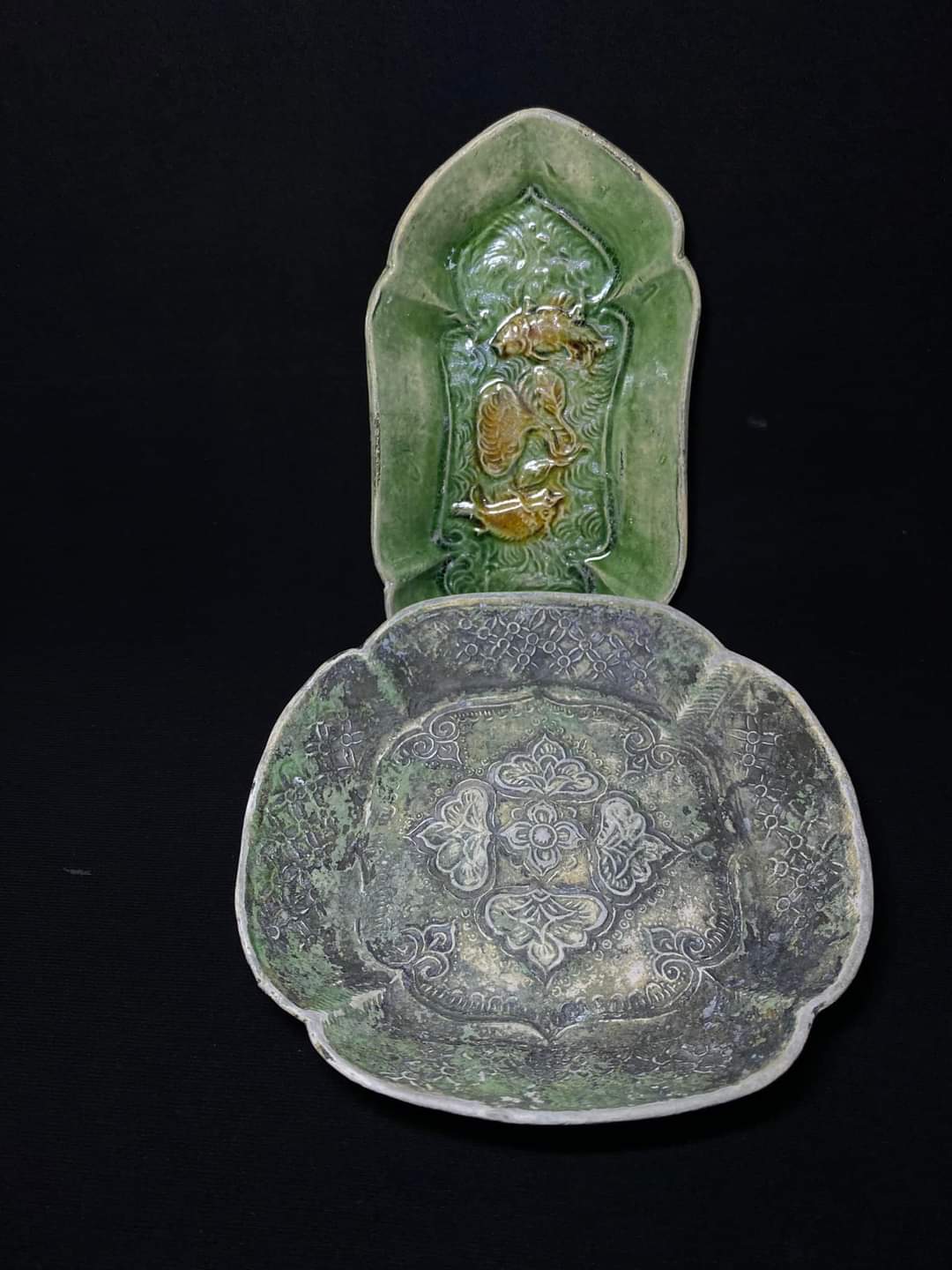 |
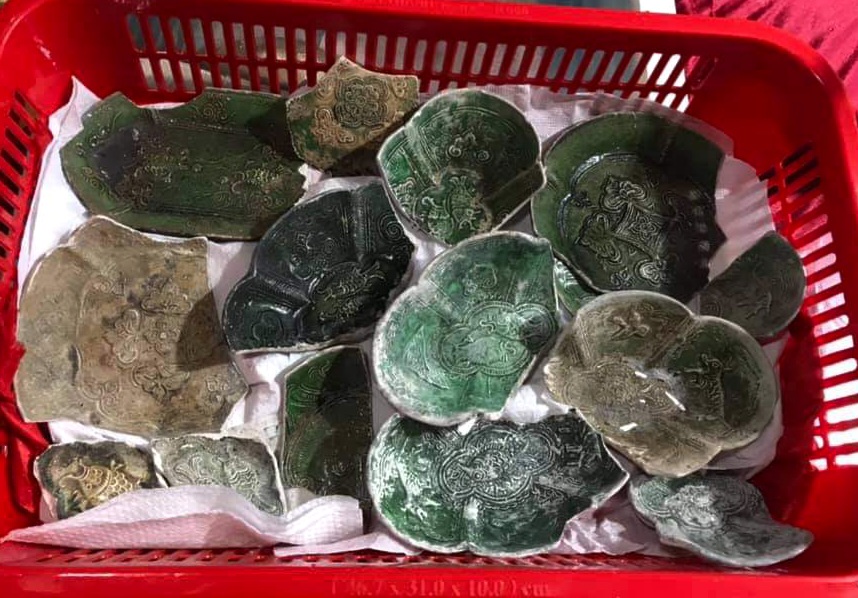 |
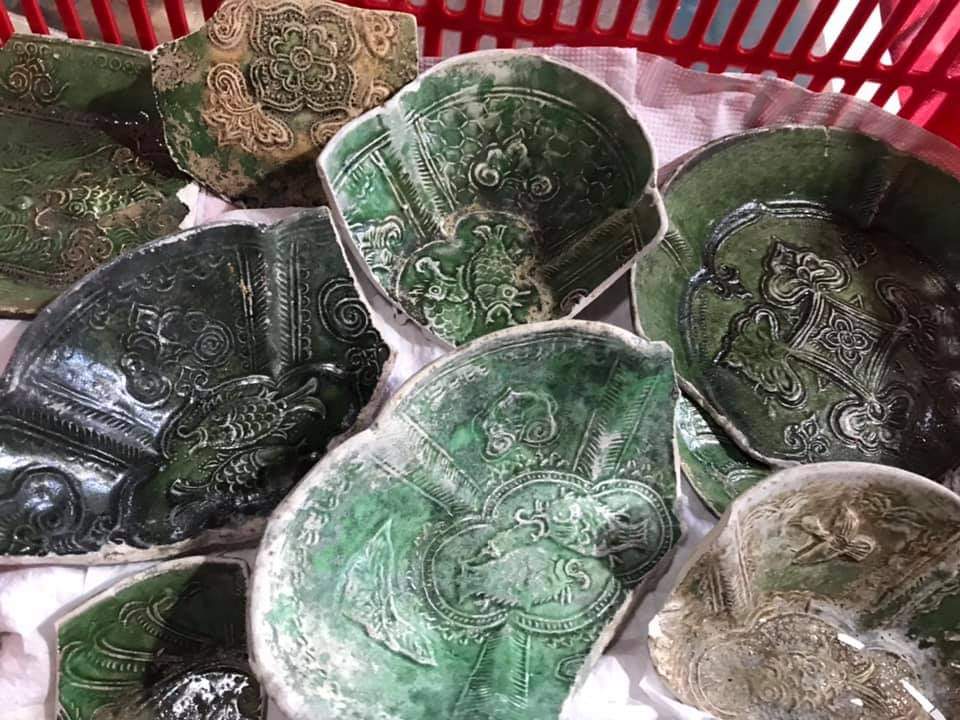 |
 |
| Various examples from Facebook
sources. Photo credit: Thien Tong and Lam Du Xenh |
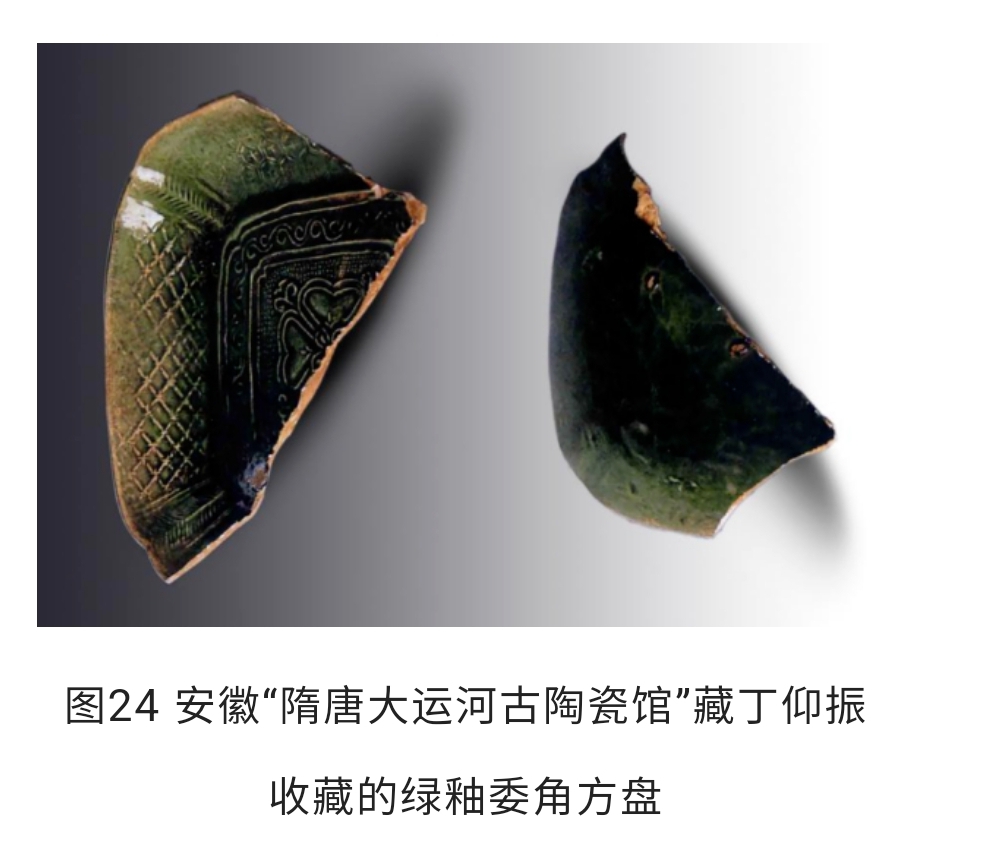 |
| Green glaze dish fragments recovered from the Sui/Tang Grand Canal |
Chronological Considerations
The Belitung wreck is dated to c. 826 CE based on a Changsha
bowl inscribed with the Baoli era (825–827 CE). For Ba Ria, two
key finds suggest a later mid-9th century date:
- A Jingxing kiln lobed cup from a Hebei tomb dated to 843 CE
(Hui Chang era).
- Green-glazed dishes from Luoyang’s residential site of poet
Bai Juyi (d. 846 CE), stylistically analogous to Ba Ria examples.
This evidence positions the Ba Ria wreck in the mid-9th century,
likely postdating Belitung by 1–2 decades. The elongated forms
of Ba Ria white-glazed ewers further support this timeline, as
similar shapes evolved into slimmer profiles by the Five
Dynasties period (907–960 CE).
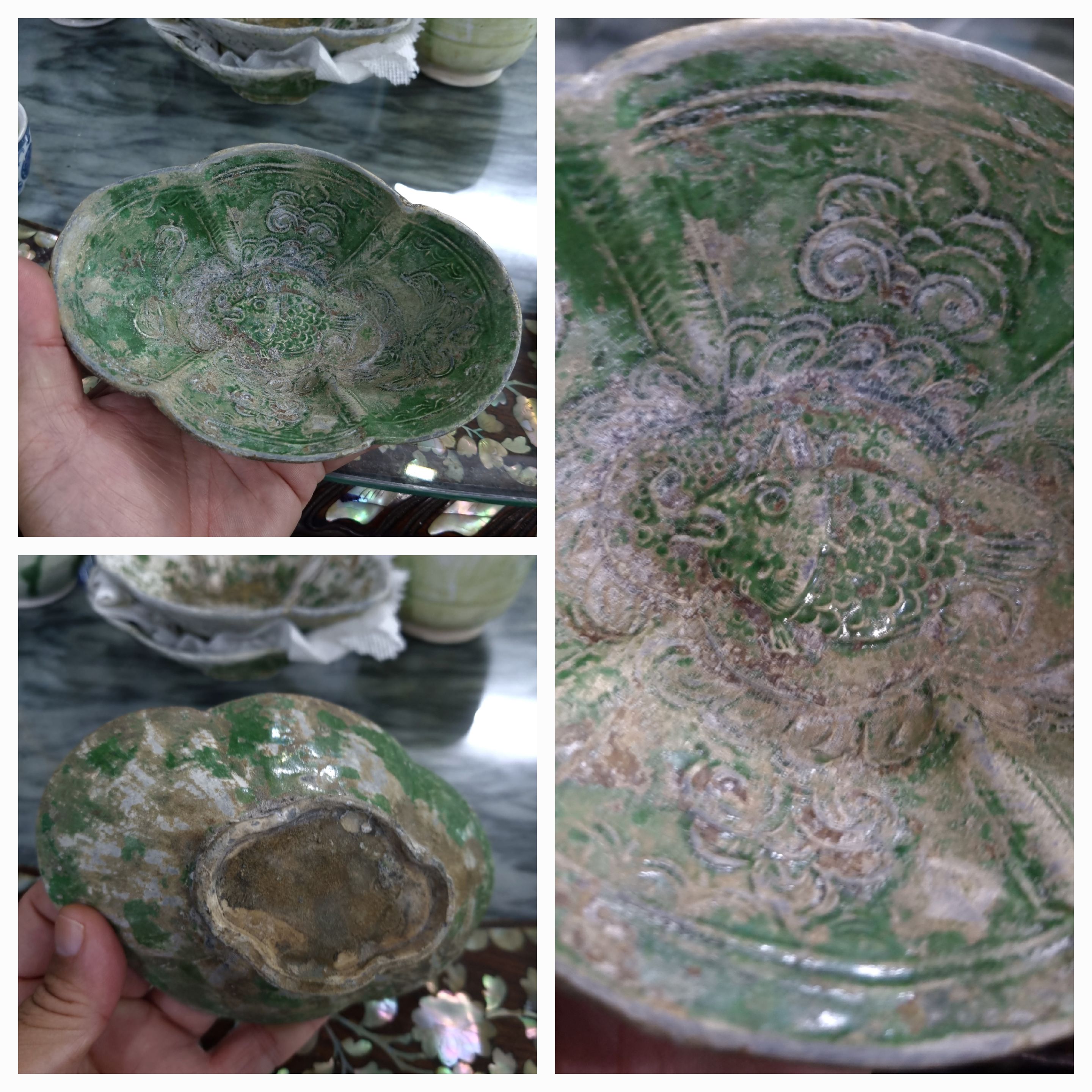  |
|
|
Comparison of an oval shaped cup with lobed rim from
Ba Ria Wreck (left) and that from a Tang grave attributed to
Hebei jingxing kiln. Based on the museum description, the
grave is dated to 3rd year of Tang Hui Chang (会昌三年) i.e. 843 A.D. |
|
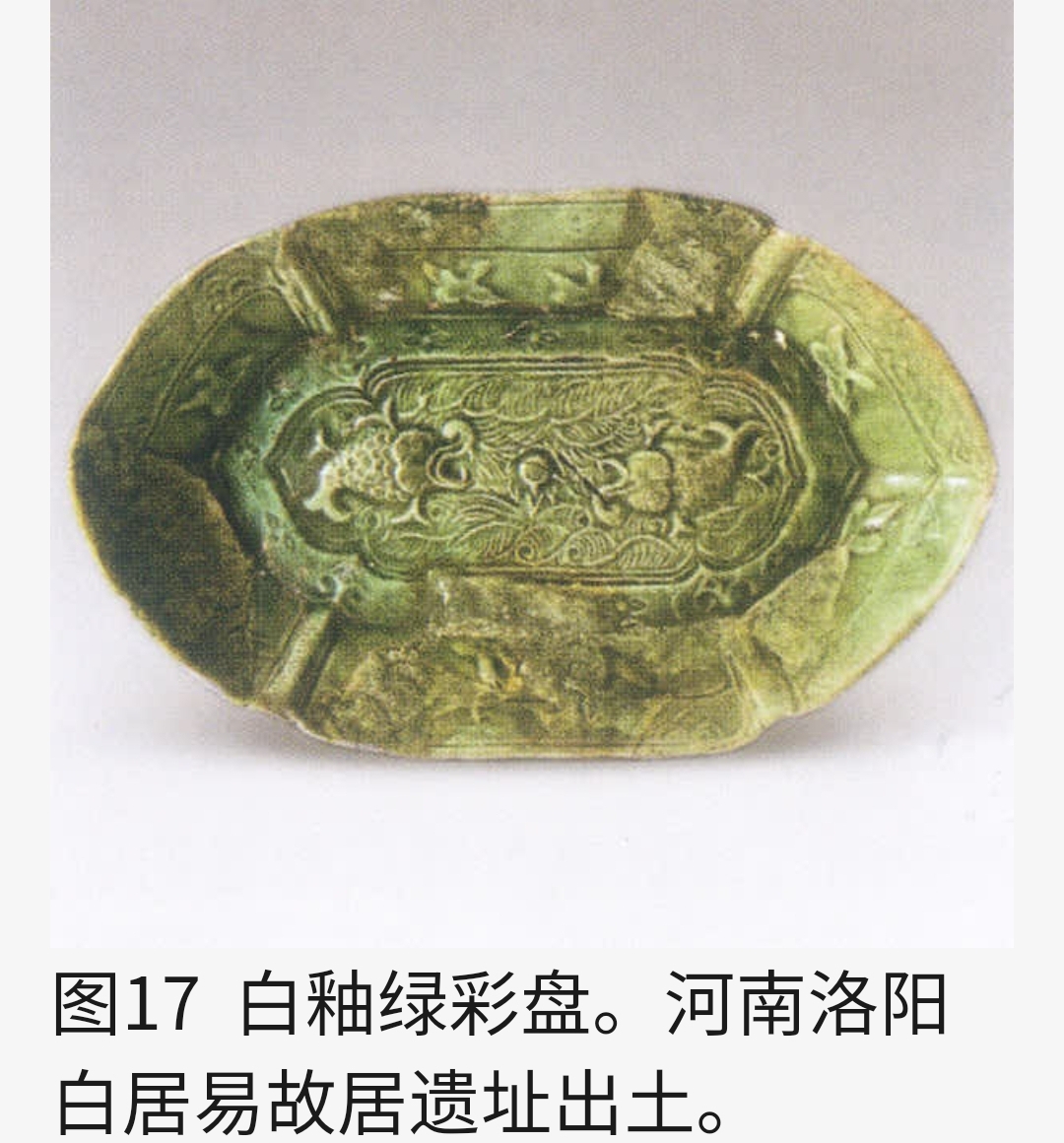 |
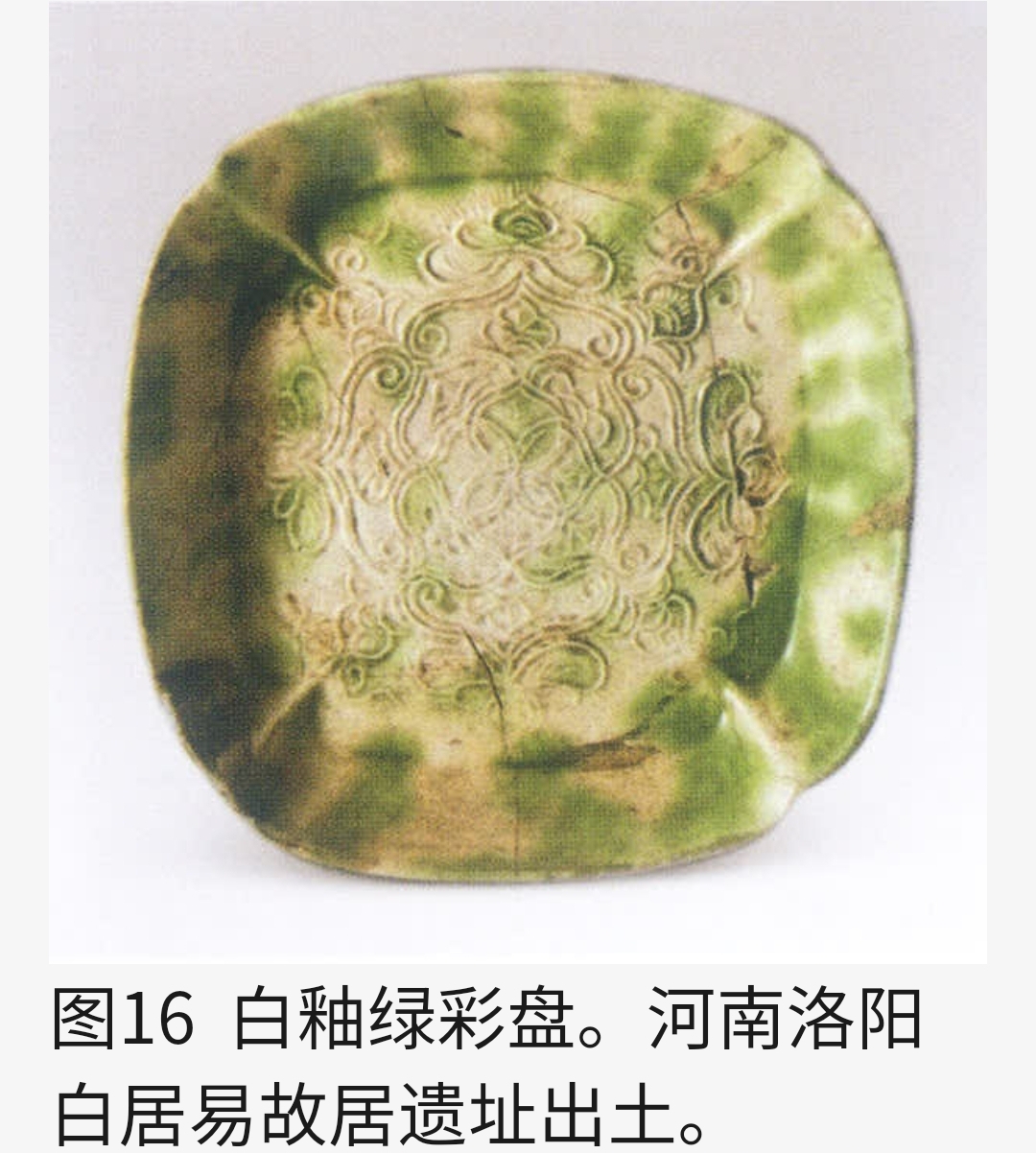 |
| Two green glaze dish with impressed decoration recovered from the Luoyang ancient residential site of Bai Ju Yi | |
Conclusion
The Ba Ria wreck enriches our understanding of Tang maritime
trade networks, particularly the circulation of northern Chinese
ceramics alongside regional products like Yue and Changsha
wares. While its cargo shares broad similarities with Belitung,
differences in quality, vessel forms, and chronological markers
highlight evolving production techniques and market demands in
the mid-9th century. Further study of kiln attributions and
trade routes will clarify the wreck’s role in connecting Chinese
kilns to Southeast Asian and West Asian markets.
Written by: NK Koh (7 Sep 2022), Chatbot Deepseek edited copy 6 Feb 2025.
References: